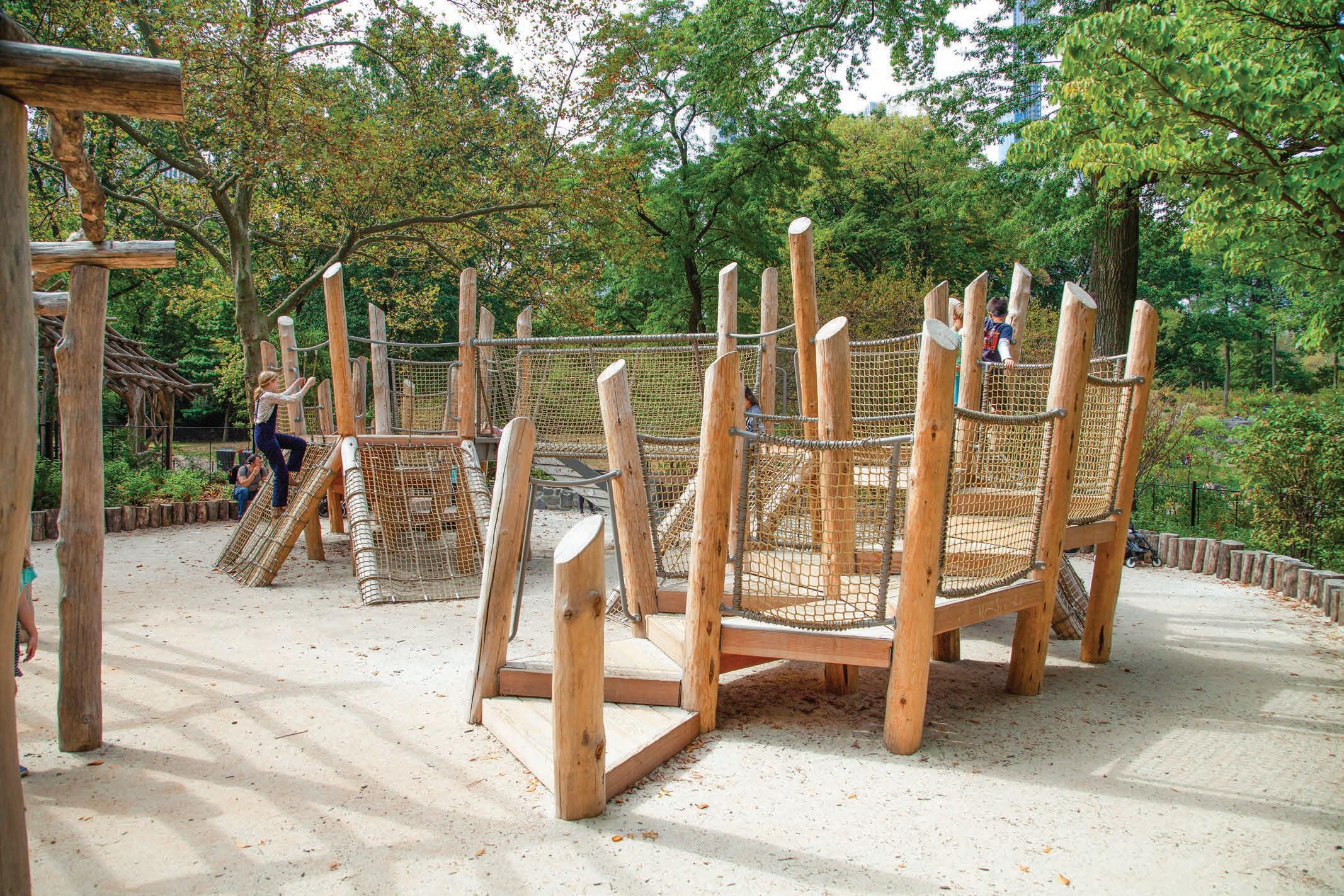DESIGN FOR ALL
creating PROGRAMS, EVENTS AND SPACES TO ACCOMODATE ALL RESIDENTS
Parks & Recreation

In this Issue:
• Tech4Rec: Innovations at Work in California Park & Recreation Agencies
• Branding & Marketing Themed Spaces
• CPRS Spotlights

creating PROGRAMS, EVENTS AND SPACES TO ACCOMODATE ALL RESIDENTS

In this Issue:
• Tech4Rec: Innovations at Work in California Park & Recreation Agencies
• Branding & Marketing Themed Spaces
• CPRS Spotlights
Proper pH balance is easier than ever with the Acid-Rite® pH Adjustment System.

To maintain water quality at aquatic facilities of any size, Acid Rite and Accu-Tab® combine to completely eliminate hazardous liquid chemicals.
Together they are the only complete tableted water balancing systems that are NSF 50-listed. These effective alternatives to bulky muriatic acid systems eliminate worries around infrastructure degradation, safety and storage: No metering. No mixing. No contest.
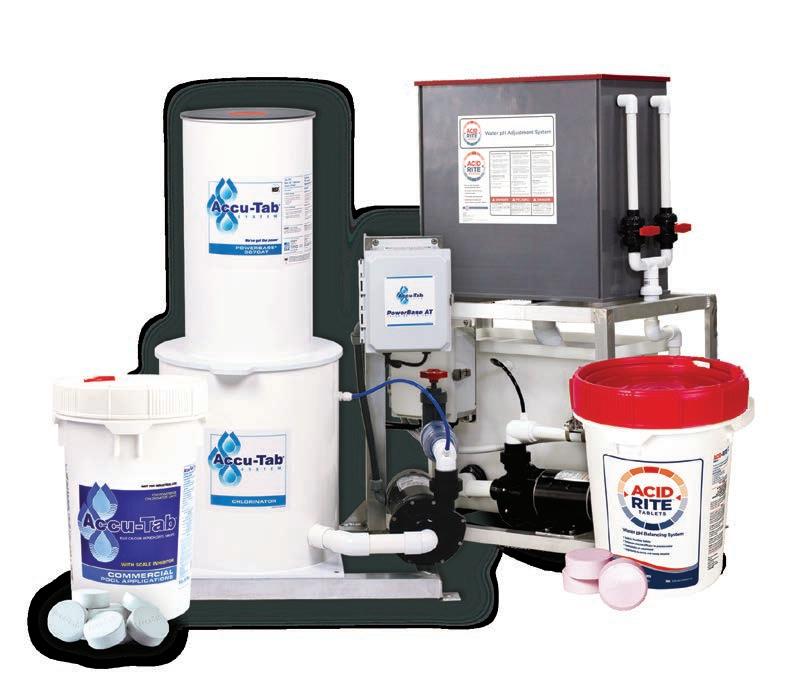
Contact AquaSource, suppliers of the most specified dry chemical feed systems in California, to find the right system for your needs.


Hollydale Community Park now serves as a vibrant, multi-faceted recreation center for the eastern section of the Hollydale Community in South Gate. The two-acre park is located between the railroad tracks of the warehouse corridor and Industrial Avenue, which forms a natural divide between the nearby residential neighborhoods and the adjacent commercial area. With safety as the top priority, the park has been thoughtfully redesigned to provide a secure and welcoming space for all. It now offers a perimeter walking trail within its gated boundaries, creating a sense of enclosure while still feeling open and connected to the community. Kids can enjoy a basketball court and a modern playground designed to encourage exploration and active play. The park also features new picnic spaces, a generous play lawn, benches, and an open-air theater complete with a movie screen backdrop, providing opportunities for community gatherings and events. Shade trees offer comfort throughout the site, and a prominent gateway marker now welcomes visitors at the neighborhood entry point, serving as both a landmark and a symbol of neighborhood pride.
There are no parks nor any available parklands in this section of Buena Park. An initial opportunity to provide some dedicated park facilities at Whitaker School has blossomed into a full of fledged “new” park across three acres of school yard. Through a series of community outreach workshops a plan has emerged with several exciting and unique elements. In addition to normal park amenities, shaded picnic spaces, play lots restrooms, a jog path and nice open spaces, there will be a STEM themed hardscape plaza, unique geometric ground patterns and other creative play spaces. The basketball court surface will be painted for fraction ball, a math-based ball game. The running/walking track will have distance markers. The universal accessible play lot is envisioned to have fun, exciting, and challenging elements for all ages. This fully lighted park will host sports activities, family gatherings, and a myriad of recreation opportunities in this under served part of the city. As the property is to be shared with Whitaker Elementary School, a unique agreement between the City and the School District will allow for this great joint use community facility.
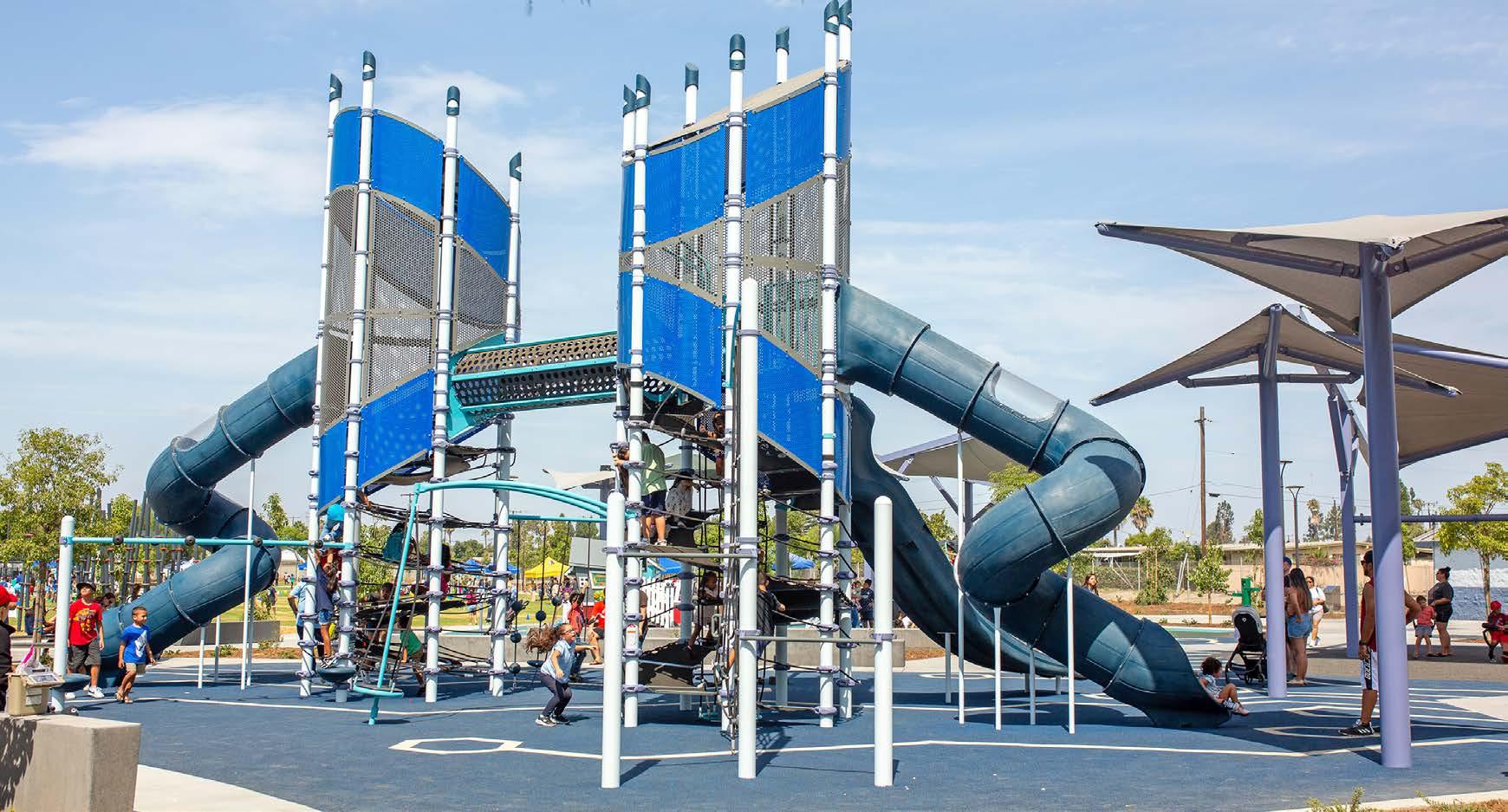



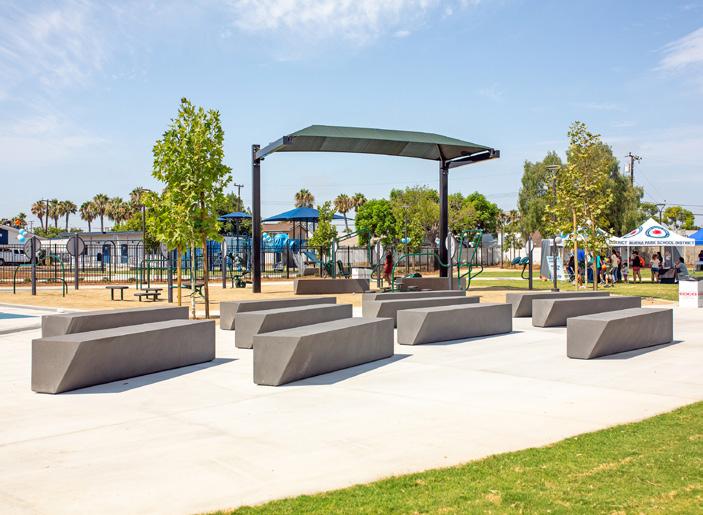

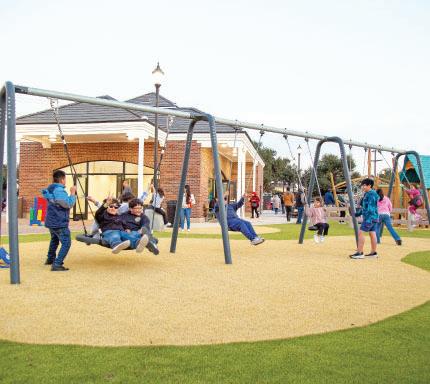
Designing landscapes that create community.
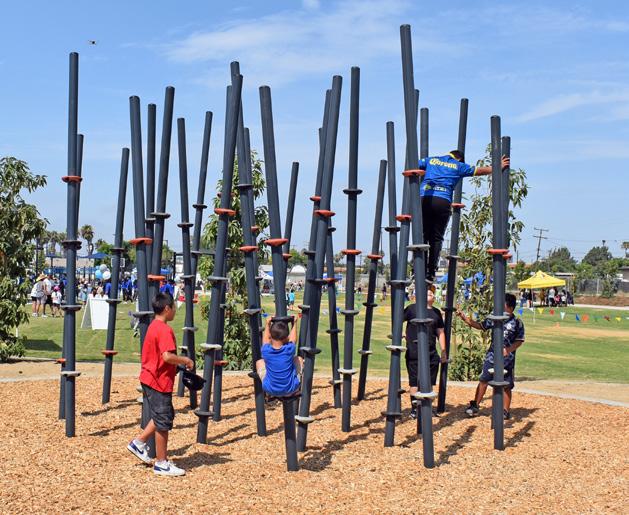
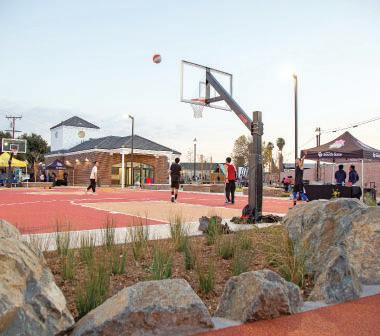
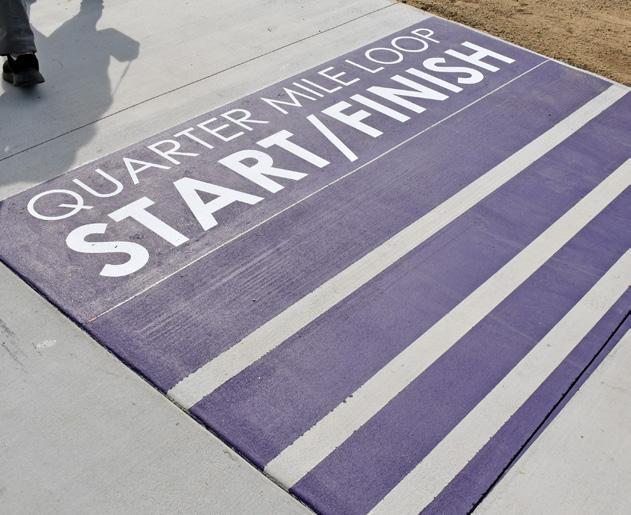

This new name marks more than just a rebrand; it reflects the evolution of who we are and where we’re headed. We’re still the same team you know and trust, still designing vibrant public spaces that connect people and place—but with a fresh identity that better captures our creative energy, our passion for public design, and our vision for the future.










Is there someone from your team who goes above and beyond the call of duty in their job? Or perhaps your entire team has done something extraordinary that should be recognized. The California Parks & Recreation magazine “CPRS Heroes” issue is back again this fall where we will honor your nominees. For more information and to make nominations, visit www.surveymonkey.com/r/ CPRSHeroes2025 and complete the form. Deadline to submit nominations is Friday, September 12, 2025.

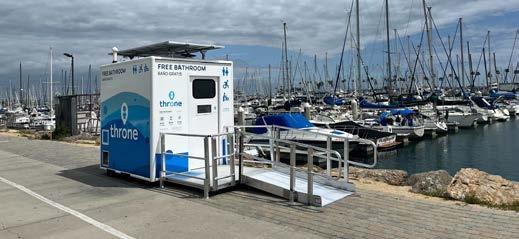
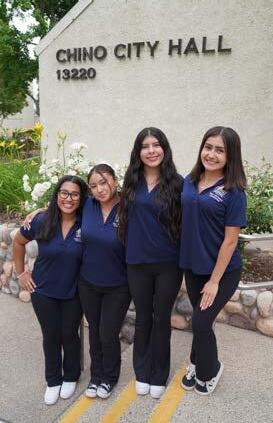
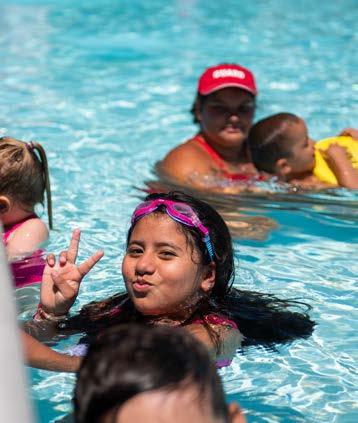
Registration now open! www.cprs.org/education/ connections
CALIFORNIA PARKS & RECREATION (ISSN 0733-5326) is published quarterly by the California Park & Recreation Society, Inc., 7971 Freeport Blvd., Sacramento, CA 95832-9701. Opinions expressed in credited articles are those of the author and not necessarily those of the society. Subscription rate is $30.00 per year and is included in membership dues. Individual subscriptions apart from CPRS membership are available only to colleges and libraries. Single copy price for all other issues is $7.50 for members and $12.50 for nonmembers. Periodicals postage paid at Sacramento, California, and at additional mailing offices. POSTMASTER: Send address changes to CALIFORNIA PARK & RECREATION SOCIETY, 7971 Freeport Blvd., Sacramento, CA 95832-9701. Send manuscripts, query letters and artwork to Alisha Herriott. Advertising materials should be sent to Todd Pernsteiner at todd@pernsteiner.com or call (952) 841-1111. Guidelines for submitting articles and advertising rates are available from same address, or from the CPRS website. (www.cprs.org). ©2025, California
Inc.
PRESIDENT
Cindy Bagley, CPRP (She/Her)
City of Rohnert Park 707-588-3452
PRESIDENT-ELECT
Jenni Worsham
City of Fountain Valley 714-593-4447
VICE PRESIDENT
Adam Chow, CPRP, MPA (He/Him) City of San Ramon 925-972-3321
SECRETARY-TREASURER
Leah Martinez, CPRP (She/Her)
Hayward Area Recreation & Park District 510-881-6700
REGION 1
REPRESENTATIVE (Districts 1, 2, 3)
Ashika Lal (She/Her)
San Joaquin County 209-331-2020
REGION 2
REPRESENTATIVE (Districts 4, 5, 6)
Tricia Mullan, CPRP (She/Her) City of Menlo Park 650-330-2225
REGION 3
REPRESENTATIVE (Districts 7, 8, 15)
Mel Johnson (They/Them)
Templeton Community Services District 805-434-4909
REGION 4
REPRESENTATIVE (Districts 11, 13, 14)
Candice Smith (She/Her) City of Ontario 909-395-2020
REGION 5
REPRESENTATIVE (Districts 9, 10, 12)
Aumee Frey (She/Her)
City of Mission Viejo 949-859-4348
SECTION REPRESENTATIVES
Administrators, Recreation and Recreation Therapy
Janine Andrade City of Bell 323-773-1596
Advocacy, Aging, Aquatics, Development & Operations and Educators
Nicole McNeil (She/Her) City of San Diego 619-533-6526
Feel free to contact any Board Member with questions or concerns.
CALIFORNIA PARKS & RECREATION MAGAZINE
EDITOR
ADVERTISING MANAGER
Stephanie Stephens, CAE Todd Pernsteiner (She/Her) (He/Him) Executive Director todd@pernsteiner.com stephanie@cprs.org 952-841-1111
MANAGING EDITOR ADVERTISING ASSISTANT/ Alisha Herriott DESIGN/PRODUCTION (She/Her) Amy Pinkston Communications and (She/Her) Marketing Manager amy@pernsteiner.com alisha@cprs.org
PUBLISHING COMMITTEE
• Ciara Cuminskey
• Karina Guterrez
• Jake Hopkins
• Cathi Johnson
• Michelle Monier
• Michele-Bridget Ragsdale
• Keri Schwab
COPY EDITORS
• Stephanie Stephens
• Lauren Oakley
• Meghan Robinson
• Jill Nunes
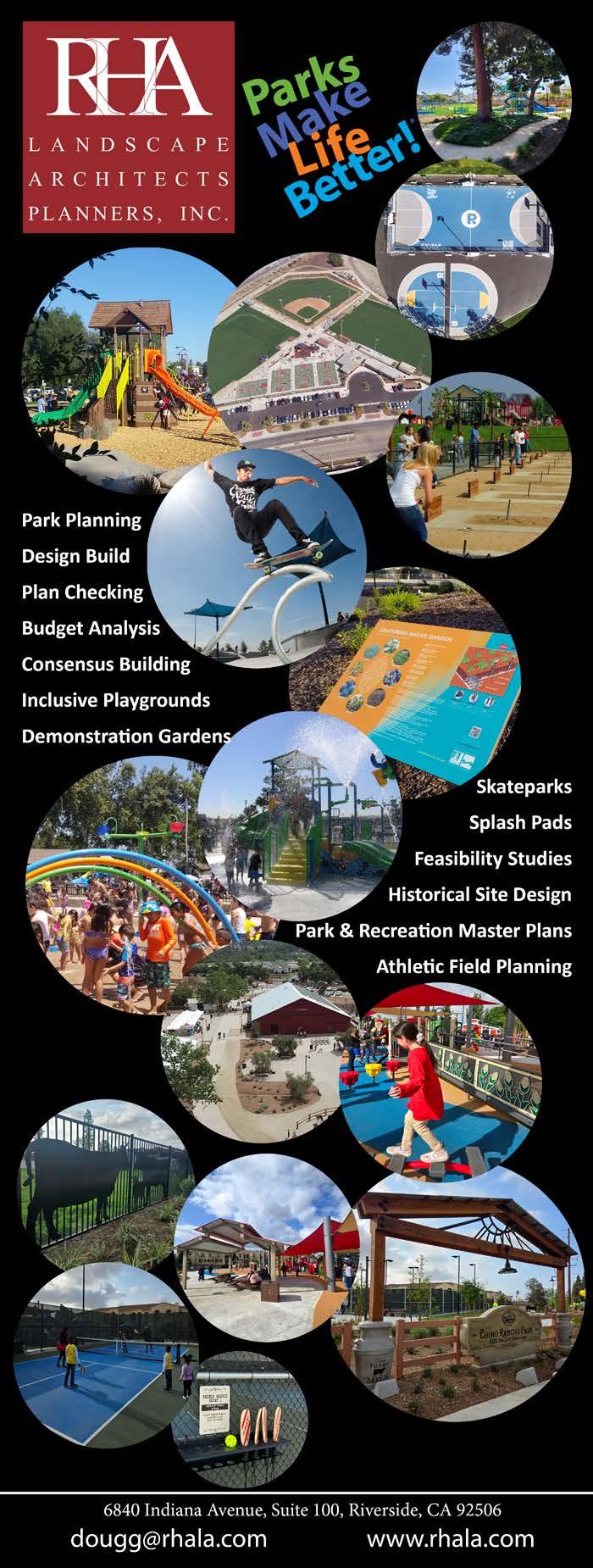

Cindy Bagley, CPRP, CPRS President
It was 3:55pm and my Apple Watch said I had taken 15,000 steps that day so far. If you’re reading this, chances are you already know that holidays hit a little differently when you work in Parks and Recreation. While most people are off celebrating, we’re usually the ones working behind the scenes to help make that celebration possible.
For me, it was our 4th Annual RP Jubilee, held from Noon to 4pm on the 4th of July. The Jubilee is truly an event that has something for everyone—a concert space for those who want to plop down their chair and enjoy professional sounds from a regional band; a professional cornhole company allowing attendees to compete with one another across 8 cornhole sets; a massive fun zone with over 10 inflatables; a 10-foot LED screen where up to 8 people at a time can play Mario Kart together; a covered area with traditional recreation games such as giant Jenga, Legos, and recreation cornhole; and
a fenced toddler/preschool play area for our youngest guests who are too small for the giant inflatables. There’s a food court with 10 vendors, a sensory room in the Community Center, and a community cooking contest where attendees vote for their favorite baked good or dip.
This year’s event was huge with record-breaking attendance. But we don’t count success by how many people show up. We look at how many people stay. And from the shoulder-to-shoulder crowd spread across the entire 14-acre property, most of whom stayed until the last song ended, I’d say we hit the mark.
But I’m not telling you this to brag about the numbers. I’m sharing it because of what hit me while I stood on stage at 3:55pm, saying my final farewell and sending people off to finish their celebrations.
I’ll be honest, I wasn’t sure if people would feel like celebrating this year. I wondered if some might just skip it.
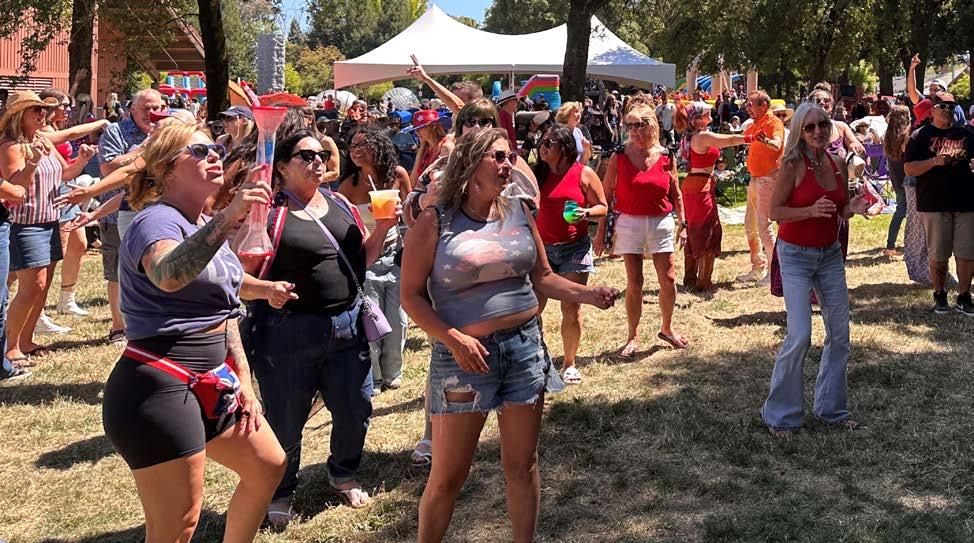
Clearly, they didn’t.
And here’s why that moment stuck with me: as I looked out at the crowd of people dancing, smiling, asking for one more song, I took the mic and asked them to pause for just a second. And I said, “Take a look around you. This is what community looks like. It doesn’t matter who you are, who you love, or what you believe in. Today, we celebrate each other. We celebrate our community.”
I felt so proud of our profession in that moment, not that I don’t always, but this was special.That’s the heart of what we do. That’s why parks and community events matter. Because for a few hours, none of that other stuff … politics, religion, identity … none of it was at the center. Just neighbors. Just people who live in the same place and found joy in being together. That’s what makes a community unique. And we have the incredible responsibility of reminding our communities that when we come together for a common purpose, we are much more alike than we are different.
Quality of life isn’t just about amenities or programs. It’s about belonging. Feeling safe. Knowing you’re part of something bigger. We get to create those spaces. And in a world that sometimes feels divided, there’s nothing more powerful, or more needed, than that.
Thank you for the work you do. Keep showing up. Keep creating those moments. Keep making lives better and building connected communities. n









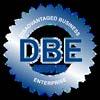


Alisha Herriott, CPRS Communications and Marketing Manager
Change isn’t a sprint, it’s a season. And this summer, CPRS HQ is planting seeds we hope will bloom into resources to help you grow and thrive (how many plant metaphors can I squeeze in, right?).
One of those seeds is the Parks Make Life Better!® Voicemail Line, a quick and easy way to share the amazing stories happening in your communities. Have you had a chance to call in yet? The line is open until September 20, and we’re inviting your community members to leave a voicemail message (up to three minutes) sharing what makes their local park special. All they need to do is leave a voicemail at (209) 645-1462 and include the name of the park, the city it’s located in, and a short message. For example, if someone recently got married in your park, learn lifesaving skills there, or simply use it as their daily space to take a breather, we want to hear about it! Speaking of taking five...
Are you tuning into the Take 5 Challenge podcast every other Thursday, hosted by none other than former


| mike@integrapla.com
| ric@integrapla.com

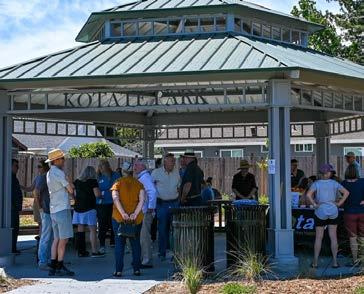
CPRS President Henry Perezalonso? He’s chatted with some incredible guests so far, including NRPA President Kristine Stratton, Recreation Supervisor Brooke Walsh, Senior Recreation Coordinator Frankie Nelson, and more. Each episode is a quick conversation about what they love most about their work, what challenges them, and the advice they’ve picked up along the way. You can listen on the Push 2 Play Network via the CPRS website, the @WeAreCPRS YouTube channel, or the Take 5 Challenge podcast on Spotify.
Speaking of podcasts… have you heard of Push 2 Play? If not – no worries! It began as a way to share real stories from parks and recreation professionals, but now we’re dreaming a little bigger. We’re working on something new: a multimedia platform made just for parks and rec professionals called the Push 2 Play Network. Think podcasts (like the Take 5 Challenge), short videos, and other short form snackable content that is there when you need it.
And while we’re on the topic of celebrating parks and the people behind them, in June, the CPRS team had the honor of standing on the Assembly floor to represent you and all California park and recreation professionals as the state officially declared July 2025 as Parks Make Life Better!® Month. While we were there in person, the moment was truly a celebration of the amazing work happening in your communities. You can read more on page 67.
More exciting news, have you heard? We’re giving the CPRS website a glow-up. We’ve listened closely to feedback and now, we’re making the site easier to navigate, find resources, and connect with your fellow professionals. Expect a personalized experienced to make the most out of your CPRS membership.
And don’t forget – the Fall edition of the magazine is coming, and it’s all about celebrating the heroes of parks and recreation. Go to page 4 for the nomination link and be sure to shout out those who go above and beyond in your community.
Thanks for growing with us! n
Alisha Herriott






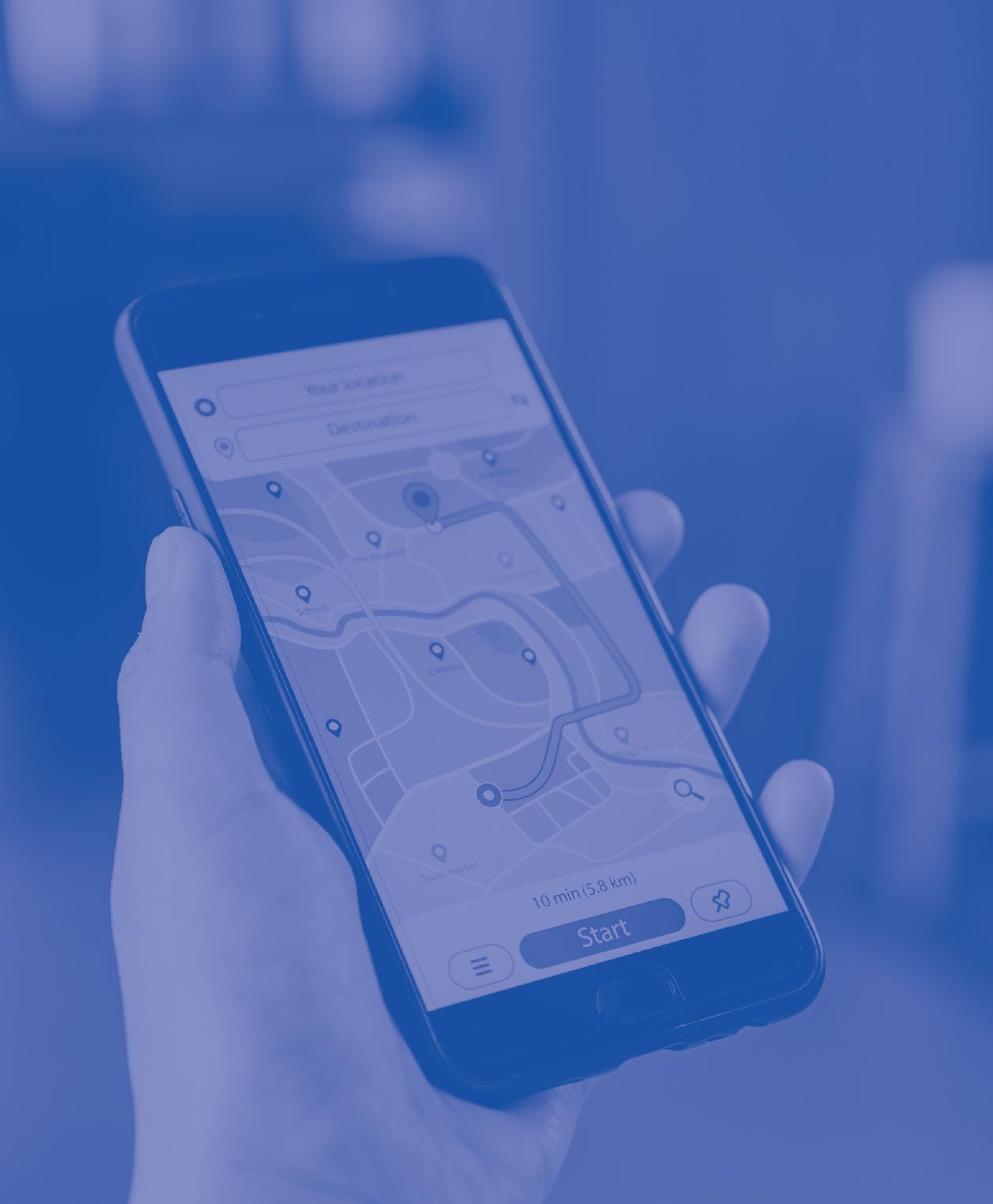
From artificial intelligence to aerial drones and smartphone photography, California’s parks and recreation departments are embracing cutting-edge tools to enhance safety, elevate events, and improve communications. In this issue’s Tech4Rec section, we explore how the City of Pasadena is using AI to support emergency evacuation planning, how San Jose debuted a stunning drone show in place of traditional fireworks this July 4th, and how agencies can use the smartphones in their pockets to capture professional-quality images for marketing. These stories reflect the growing role of technology in shaping the future of parks and recreation across the state.


By City of Pasadena
Note: A version of this article was originally published in the Winter 2025 issue of the West Pasadena Residents’ Association “The News” newsletter.
Bridge, Mountain, Coffee Pot, Happy, Santa Lucia, Frenchman, Garden Lake, Horseshoe, Elk, Little Laya, Wye, Broom Canyon, Cracker Jack, Red, No Man, Clearwater, Halfway, Blue Front and Lucky Butte.
Though they may seem to come from a primary reader or represent vistas from a camper’s guide, they are, in fact, names of California wildfires, which, the LA Times suggests, “can be evocative, even poetic … or not.”
Pasadena has been remarkably lucky to have been threatened by only two 10+ acre wildfires over the past 40 years, according to Cal Fire. More specifically, Cal Fire has identified more than 15,000 properties in Pasadena as having some risk of being impacted by wildfire over the next 30 years.
Many of Pasadena’s high-risk properties can be found in areas such as Linda Vista, the Arroyo Seco, San Rafael Hills, Altadena, and, of course, the Angeles Forest ... areas otherwise known for their trees, vistas, and narrow winding roads – a realtor’s dream; an emergency planner’s nightmare.
To continue the recent discussion of how the City can best manage and refine response to natural emergencies and evacuations, City emergency support teams and residents met on November 7, 2024 at Brookside Golf Course. Many of those who attended the meeting expected an opportunity to address how to reduce risk for residents in the highest risk areas.
Instead, much of the meeting was dedicated to the City’s turn toward artificial intelligence (AI), which will be put to the test this year. As actual threats emerge or simulated threats are imagined, City responders will input data such as temperature, humidity and wind speed with the Genasys Protect platform, which is a management tool that helps communities and first responders more effectively plan, communicate and execute evacuations.
The platform should also enable residents to find tailored guidance, based on their address. Boiled down, the City hopes Genasys will help protect residents and increase the probability of their survival during a major emergency and evacuation. n

Boiled down, the City hopes Genasys will help protect residents and increase the probability of their survival during a major emergency and evacuation.
By
The City of Long Beach has partnered with Throne Labs to launch a new four-month pilot program to improve the local restroom experience across the city and offer additional clean, safe and familyfriendly smart public restrooms. In addition to 52 freestanding public restrooms across the City, Throne smart restrooms are now available for public use at DeForest Park, Harvey Milk Promenade Park, Belmont Pier and Shoreline Marina. These locations were chosen based
on a review of restroom demand and funding availability of existing restrooms at the locations.
“Public restrooms are necessary infrastructure that serve everyone in our community,” said Mayor Rex Richardson. “This pilot program with Throne represents our commitment to exploring innovative options to increase access to clean, accessible and safe public facilities. By piloting a solution that has proven successful in communities throughout LA County, we aim to increase the number of
welcoming public spaces in Long Beach parks.”
Throne restrooms are Americans with Disabilities Act-accessible facilities that feature running water sinks, flushing toilets, baby changing stations and free menstrual products. Each unit is equipped with 21 sensors that provide realtime data on the restroom’s status, cleanliness and usage statistics, including potential misuse. During the pilot phase, users can access the units via text message or mobile
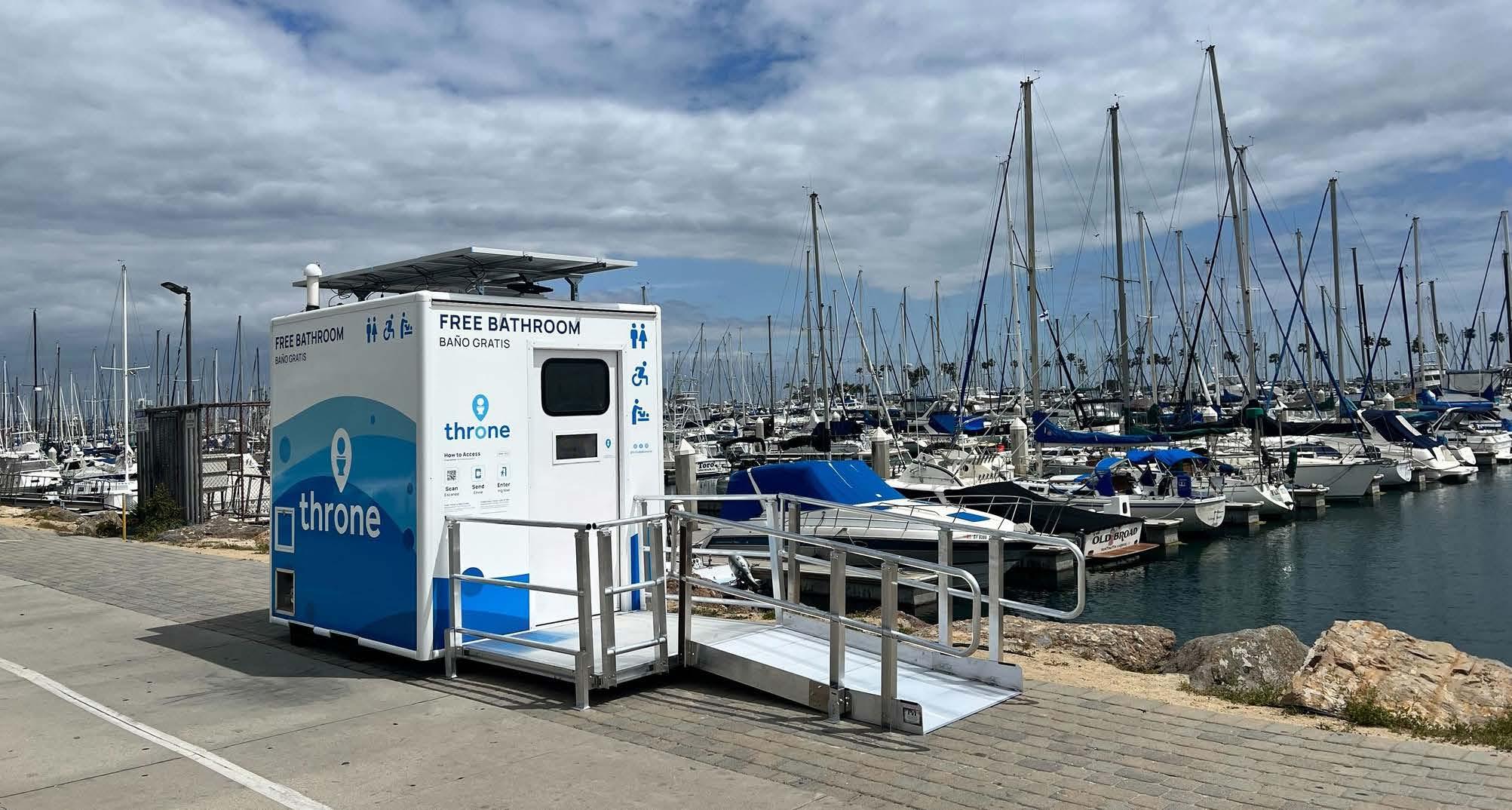

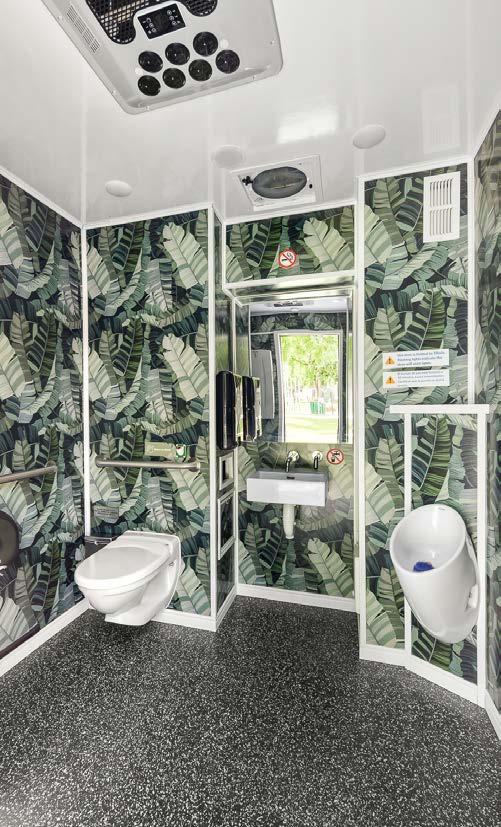
app, creating accountability while maintaining user privacy. All Long Beach community members, including those without mobile phones, will continue to have access to the City’s other 52 freestanding, accessible public restrooms. The units are cleaned four times a day and are open from 7 a.m. to 10 p.m. daily.
The four-month program, which will run until mid-August 2025, is facilitated through the City’s Parks, Recreation and Marine (PRM) Department and Technology and Innovation Department (TID).
Data from the pilot will be evaluated by measuring key performance metrics, including usage patterns, user satisfaction ratings, cleanliness levels, uptime percentage, maintenance responsiveness and comparative cost analysis. Throne’s built-in
sensors will provide real-time data on these metrics, while the City will track changes in cleanliness in the immediate area and vandalism incidents compared to traditional facilities. Additionally, a public survey posted at all Throne locations will gather direct feedback from residents and visitors about their experiences and perceptions of safety, ensuring community voices help shape future restroom infrastructure decisions.
There are currently 22 Thrones across Los Angeles County that maintain cleanliness ratings that exceed 4 out of 5 stars, from suburban parks to busy transit stations. These cleanliness ratings are provided by users real-time after each visit, helping the operations team maintain consistently excellent experiences. A Throne has served Long Beach’s Willow Street Station since May 2024 as part of Throne’s partnership with Los Angeles County Metropolitan Transportation Authority and has proven successful with nearly 13,000 visits by 2,900 users and no security issues.


“Access to clean bathrooms is essential for vibrant communities, and our mission is to create facilities that everyone wants to use,” said Jessica Heinzelman, COO and Cofounder of Throne Labs. “We’re thrilled to be partnering with the City of Long Beach to demonstrate how access to delightful smart public restrooms can transform public spaces to be more welcoming to residents and visitors.”
Funding for the pilot is from the TID Innovation Fund and the PRM Department operating and maintenance funds. Following the pilot, the City will assess the program and determine if a more permanent program should be considered and explore funding sources to pay for the technology, including seeking external partners. With the establishment of a more permanent program, the City would also assess how best to provide access to users without access to mobile phones. n
Adapted from the story by Suzanne
Phan.
ABC 7 News (Reprinted with permission)
For the first time ever in San Jose, drones dazzled and delighted big crowds as everyone gathered to celebrate America’s birthday.
Thousands of people came out to Lake Cunningham on July 4th, knowing that there was a big change in the air.
Up in the sky this year: more than 200 drones instead of fireworks.
The shift came after a tragic warehouse explosion in Yolo County destroyed the city’s planned fireworks. When city leaders learned of the incident, they scrambled to find a backup plan.
They managed to connect with Sky Elements Drones out of Texas, a company known for Fourth of July shows in San Pablo, Napa, Mare Island, and at the Alameda County Fair.
Before the event, some community members had mixed feelings about the switch.
“There is some heartbreak out there, including myself, because fireworks mean so much to the tradition,” said Councilman Domingo Candelas of the City of San Jose.
Others, however, welcomed the change.
“Honestly, whatever show we have tonight, it’s a great way to celebrate our community today with a drone show, even if it’s not fireworks,” said San Jose resident Julien Luu.
Councilman Candelas echoed the sentiment of community resilience:
“I’m really excited to pull this off. All things considered, the unfortunate circumstances we had, why we had to cancel our fireworks show. It’s a tragedy. My thoughts and prayers go out to all those affected. But the resiliency in our community and the fact we were able to pull together this drone show in a matter of 24 hours.”
Candelas also believes drone shows like this one could help deter the use of illegal fireworks in neighborhoods.
“Honestly, it’s less of an environmental risk with all the blasts and all the smoke,” he added.

of Lincoln
“Before partnering with Rec Technologies, renting our facilities required a maze of paper forms, emails, and even the occasional fax machine. It was frustrating for residents and a time drain for staff, leaving our community spaces underutilized and underbooked. Once we brought our picnic pavilions and pickleball courts online with Rec, bookings are now seamless–and more residents are using our facilities. The platform is easy to use, mobile-friendly, and packed with features our community now expects, like Instant Book and realtime, digital calendars. Residents can find and reserve spaces in minutes, whether through searching online or using QR codes placed on signs. As a result, our facility rental revenue has jumped by almost 40%. Rec has elevated how we operate and serve our community with more modern offerings, and is a great example of Tech4Rec.”
- Doug Brown, City of Lincoln
of Redding
“One piece of park or recreation technology I couldn’t live without is the Outdoorlink Smart Controller. It revolutionizes how we manage athletic lighting in parks. With remote access and scheduling capabilities, it saves energy, reduces maintenance costs, and enhances public safety by ensuring lights operate only when needed. The ability to monitor and control systems in real-time means fewer site visits and quicker response times, which is essential for budgetconscious and sustainability-focused operations. It’s a smart, reliable solution that keeps parks efficient and well managed.”
- Dan Williams, City of Redding

Supporters of the drone show say, ultimately, it’s the atmosphere and family-fun environment that most people are excited about.
“I’m not disappointed. I think it’s something the community enjoyed,” said Amy.
“It’s a great way to represent the Bay Area with the technology and the beautiful fireworks show—not fireworks, sorry, drone show,” said another spectator.
“This was my first drone show. I didn’t know what to expect. It was fantastic,” said one.
“I loved the show. I thought it was amazing,” said another.
“Very, very good. I’m happy it was here,” a third person shared. n
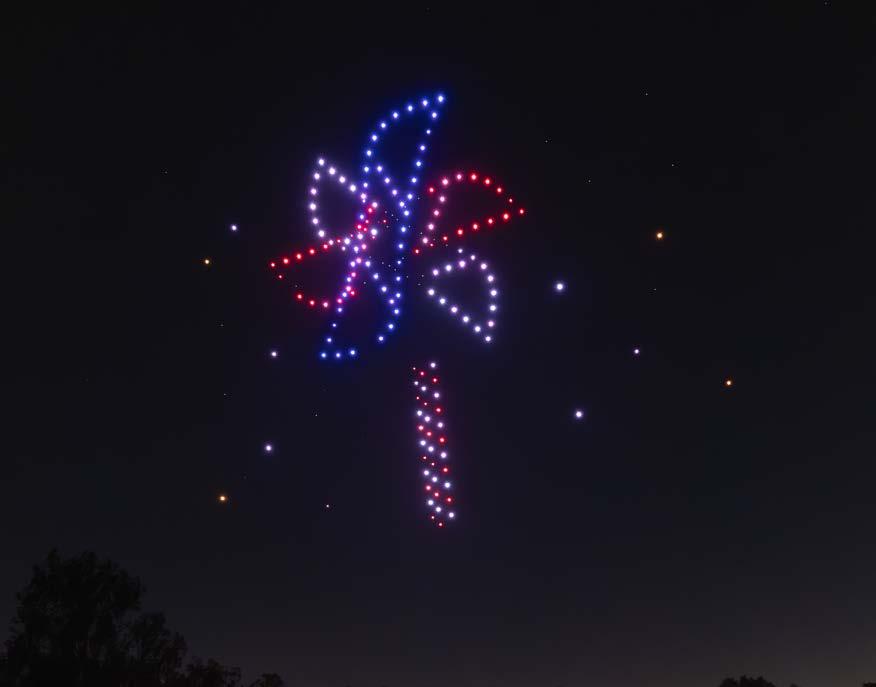

Get ready to elevate the management of your community’s urban forest with Smart Tree Inventory Solutions. Our advanced technology, incorporating LiDAR and machine learning, offers precise 3D tree data and insights for informed decision-making, driving the development of greener and safer cities.

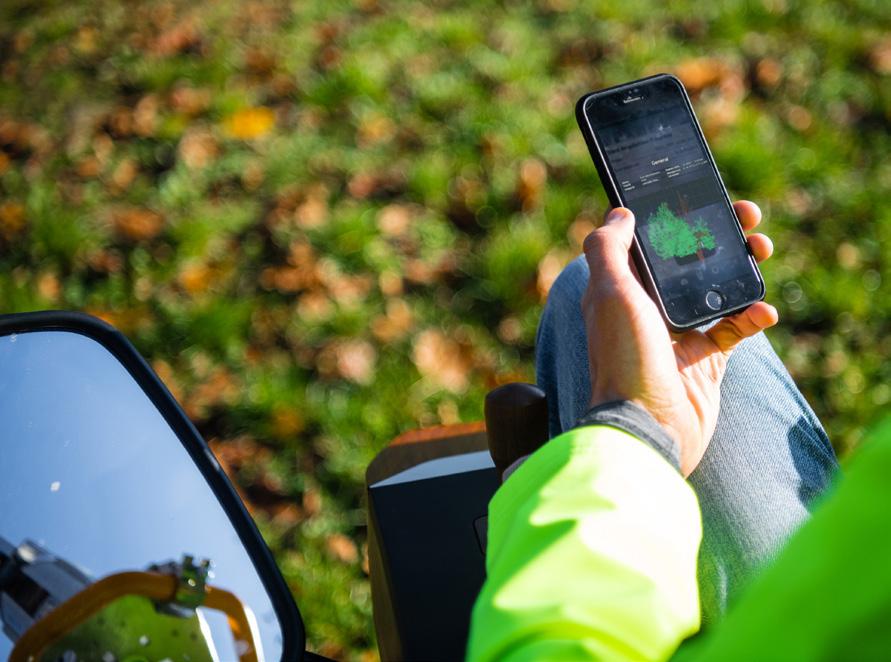
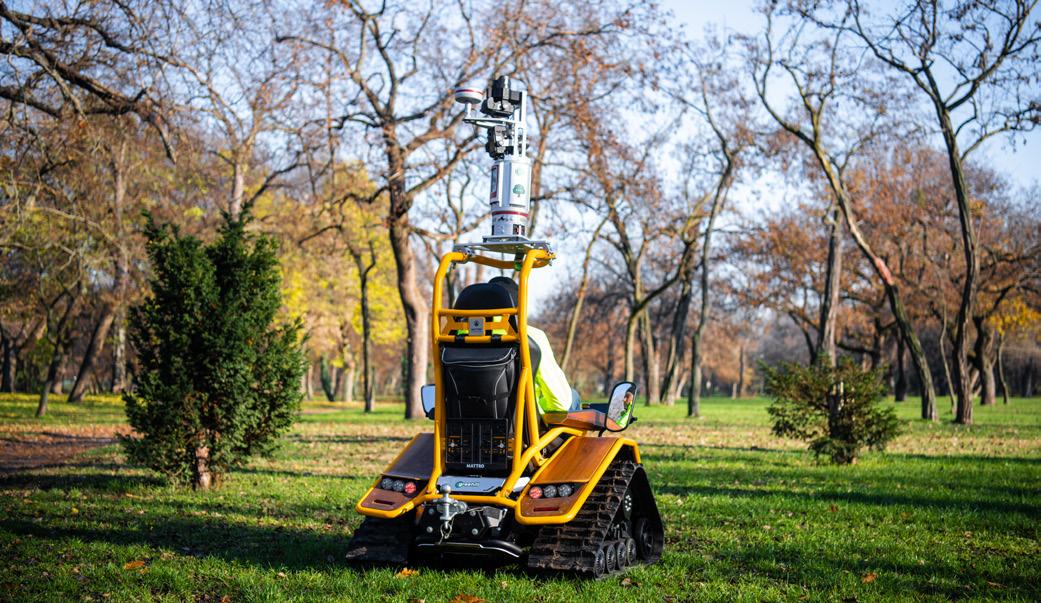
By City of Palmdale
The City of Palmdale has unveiled a new geospatial hub tool, “Mapping Palmdale,” designed to make information more transparent and accessible for residents. This innovative site empowers users with quick access to a variety of resources, including how to locate neighborhood services, public art, tax parcels and more.
“Palmdale is committed to leveraging technology to enhance the lives of our residents,” said Mayor Richard J. Loa. “Mapping Palmdale provides a wealth of information at the click of a button, ensuring everyone has what they need to explore and engage with our community.”
The GIS platform allows residents to access geographical data
through maps, datasets and reports, simplifying decisionmaking processes and addressing questions about property and City services. With features like parcel and property line mapping, public facilities information and aerial imagery, the system offers a comprehensive view of Palmdale’s landscape.
“This platform reflects Palmdale’s forward-thinking approach to transparency and community engagement,” said Mayor Pro Tem Laura Bettencourt. “From finding local services to exploring public art, residents can now connect with our City in meaningful ways.”
Among the tool’s features, My Neighborhood Services help users pinpoint nearby fire stations,


schools, the Sherriff’s station, the hospital and affordable housing options. The Public Art Story Map highlights the City’s vibrant public art installations, murals, sculptures and other creative works. Residents can also use City Council District Map to identify their local council member based on their address, while the Tax Parcel Viewer provides property and zoning details for prospective buyers and owners. Additional resources include a Fireworks Map detailing where Safe and Sane fireworks are permitted each year from noon on June 28 through noon on July 5, a Zoning Lookup tool and Street Sweeping Schedules.
There is even more to explore with the Mapping Palmdale technology. Check out the full suite of the tool’s offerings at www.CityofPalmdaleCA. gov/MappingPalmdale. n
“This platform reflects Palmdale’s forwardthinking approach to transparency and community engagement,” said Mayor Pro Tem Laura Bettencourt.


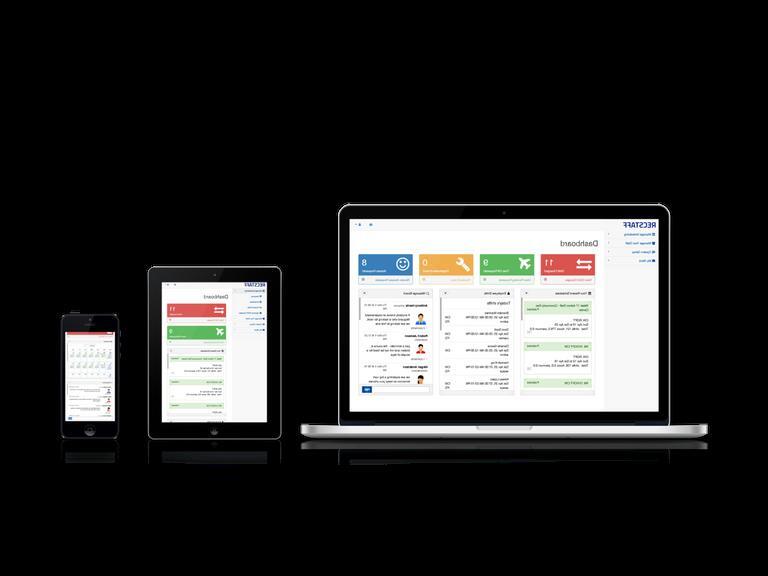
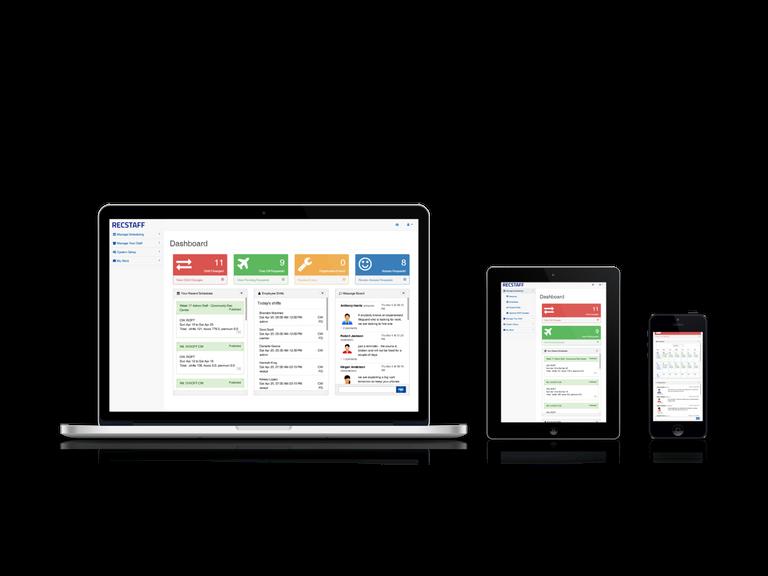
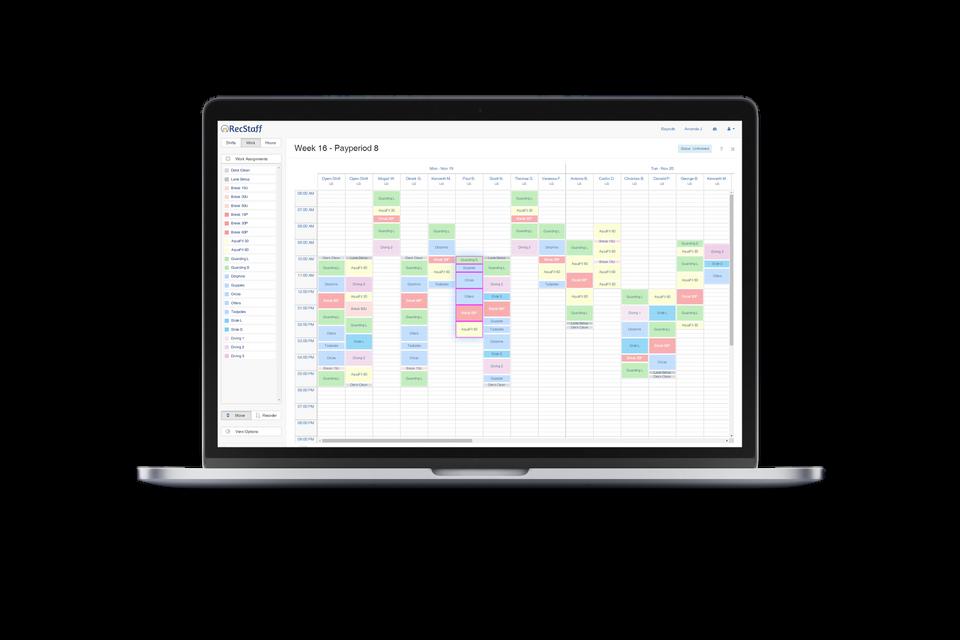

Share staff between departments and locations without conflict or unexpected overtime
Manage credentials with automated reminders to staff when they are expiring
Individualize your department’s work flow to suit your requirements
Let staff know what they’ll be doing during their shift and pay different rates for activities
Use powerful online timesheets to automate
Eliminate empty shifts with the most robust shift board around where you make the rules!
Keep everybody in the loop with the most automated text messaging on the market
Track time and attendance with a GPS enabled mobile device time clock

By Greenfields Outdoor Fitness
Life is made up of meaningful moments, and ensuring people can continue to enjoy them at every stage of life should be a community priority. Parks are uniquely equipped to support older adults by offering inclusive recreation that encourages healthy aging. With Greenfields Outdoor Fitness’ senior-friendly exercise equipment, parks can promote movement, connection, and holistic wellness amongst the older population, empowering them to live healthier, happier lives.
Outdoor fitness can vastly improve the short-term and long-term health of individuals, helping seniors maintain their independence well into their later years. In 2022, however, only 13.9% of adults aged 65 and older met the 2018 Physical Activity Guidelines for Americans.
It’s never too late for someone to start working out. Ralph Davidoff noticed health improvements after just a few months of using the Greenfields equipment at his retirement community. “On an executive golf course, I can now play 18 holes and not be exhausted at the end,” he noted, “And that’s because working out has given me more stamina.”
Some of the benefits seniors can reap from outdoor fitness include:
• Preventing falls by increasing strength, mobility, and balance to protect one’s health and independence
• Strengthening one’s bones, blood cells, and immune system through the intake of Vitamin D
• Increasing energy levels, improving one’s mood, and keeping them focused through a rise in serotonin levels
• Reducing blood pressure and anxiety
• Minimizing the risk of health problems such as dementia, heart disease, type 2 diabetes, and cancer
• Improving mobility and heat regulation through strengthening, flexibility training, and the maintenance of a healthy weight
But exercise does so much more than protect the physical health of seniors; it increases their enjoyment of life.
Outdoor fitness can shape one’s mental health by:
• Improving mood and energy levels through elevated serotonin, endorphin, and dopamine levels
• Enhancing sleep quality through sun exposure and exercise preparing the body to rest
• Elevating cognitive capabilities through improved blood flow and released serotonin
• Improving stress management through lowered cortisol levels and blood pressure
• Creating a sense of belonging and purpose
When done right, outdoor fitness centers can be a place for people
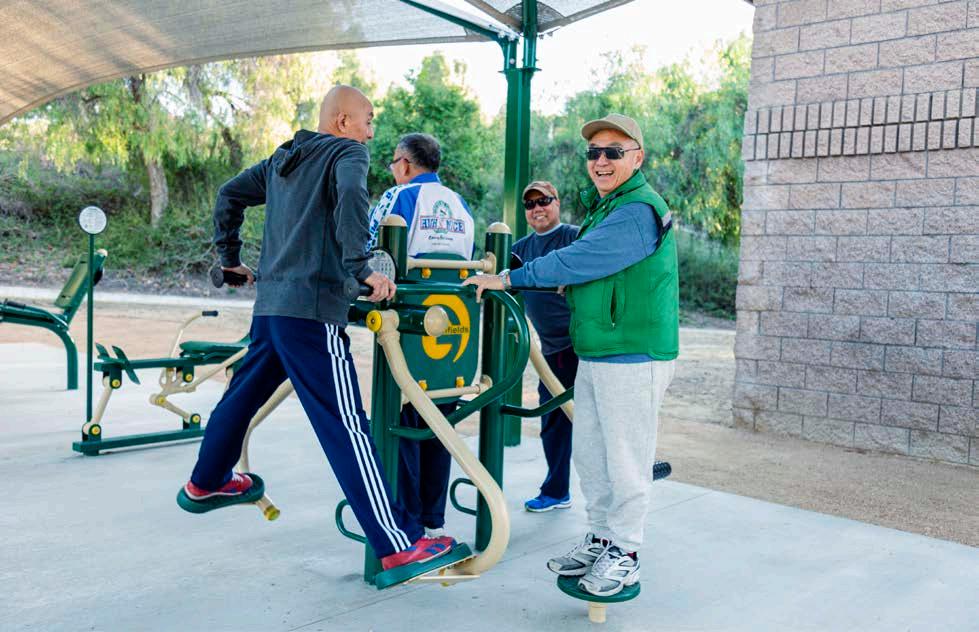
It’s never too late for someone to start working out. Ralph Davidoff noticed health improvements after just a few months of using the Greenfields equipment at his retirement community.

to connect with one another, which can have both mental and physical benefits. This is especially important for seniors — many of whom have lost loved ones, retired, or may not have consistent social events planned.
Greenfields Outdoor Fitness has made it a priority to promote socialization by intentionally designing units and spaces that angle users towards one another as much as possible. Not only does this increased socialization come with its own benefits, but it also makes exercise more enjoyable, encouraging users to work out longer and more consistently.
“It’s really nice to be able to come here every day and feel like you’re a part of a bigger, broader community,” said Marjorie Fairbanks, a senior who frequently visits the Greenfields equipment at her local park. “A lot of us know each others’ names, and we kind of worry when somebody doesn’t come.”
Understanding the significant impact outdoor fitness can have on seniors
is just the start — we must make it readily available for our older communities. Greenfields Outdoor Fitness designs units that are lowimpact, intuitive to use, and inviting for both those new to exercise and regular gym-attendees. Greenfields also makes fitness inclusive by offering wheelchair accessible units that allow those with mobility impairments to work out alongside their able-bodied friends.
With fresh-air gyms being free and often less intimidating than indoor gyms, the benefits from outdoor fitness become easier to experience. Further, fitness zones increase park use, promoting local vibrancy and safety that increases the value of a neighborhood.
Greenfields’ complimentary custom design services make it easy to envision exercise units in different spaces, allowing parks to either fully customize their gym or choose from a premade package. Our senior packages provide comprehensive workouts that are easy on seniors’ joints and build the strength and mobility to prevent falls, which are a leading cause of injury amongst older adults.
Contact Greenfields Outdoor Fitness today to learn more about what freshair gyms might look like in your parks!
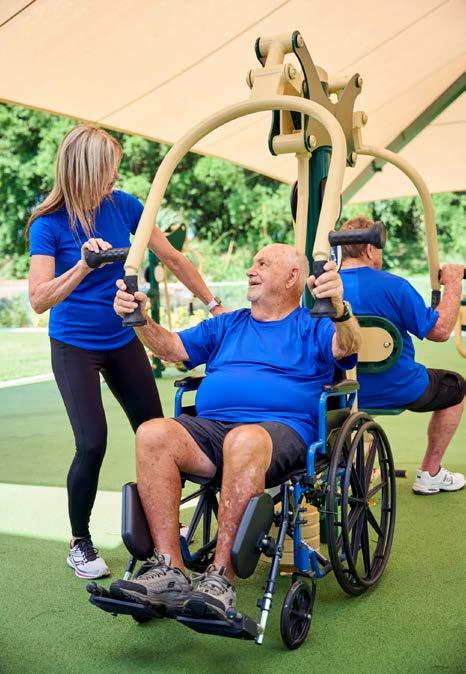
creating PROGRAMS, EVENTS AND SPACES TO aCCOMODATE ALL RESIDENTS
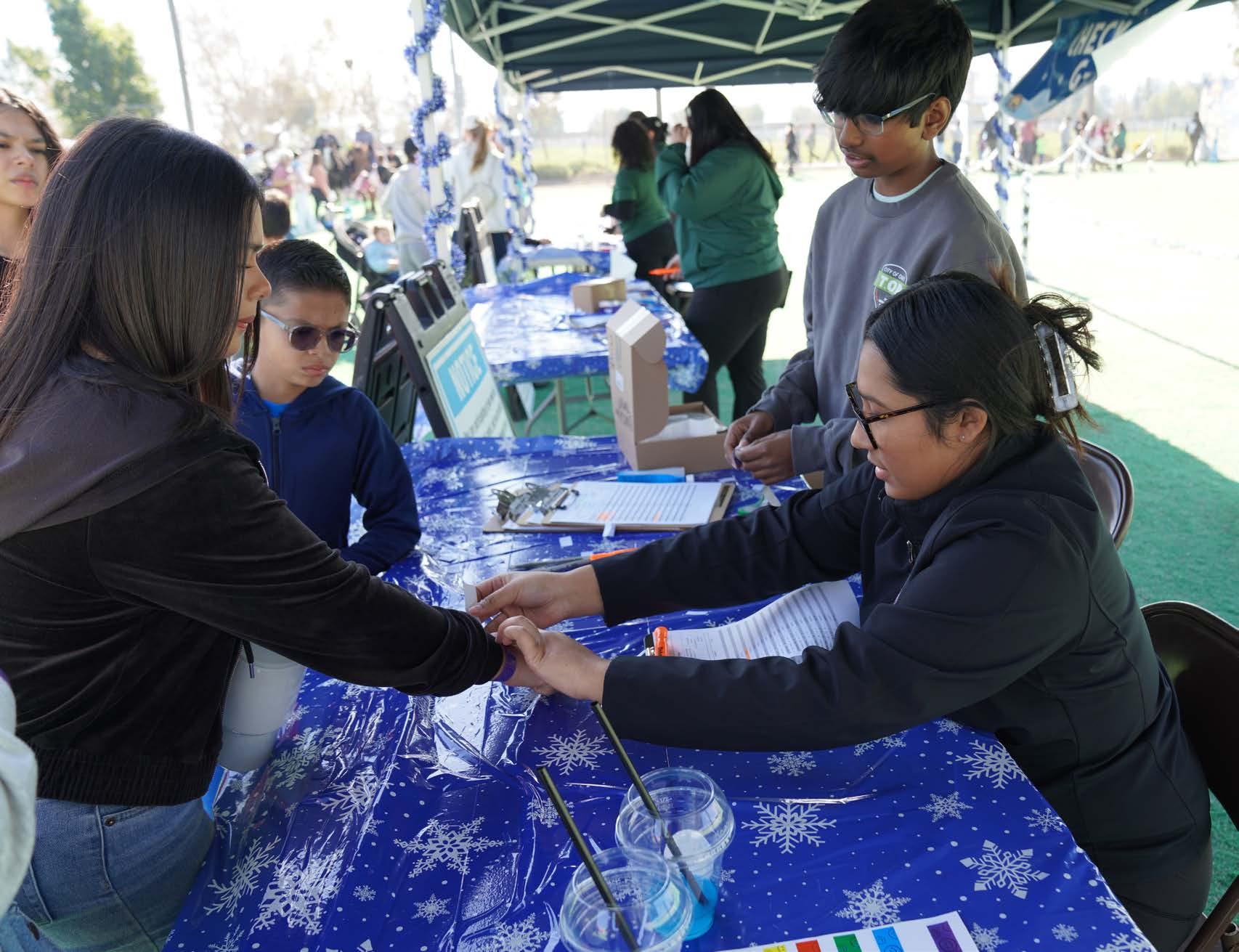
By Daniel Koster, City of Chino
In the City of Chino, civic engagement doesn’t just happen in council chambers—it starts with the passionate voices of the city’s youth. These youth voices are exercised through the Teen Advisory Committee (TAC), which is a dynamic volunteer program for middle and high schoolers that serves as a launchpad for leadership, creativity, and real-world impact. TAC’s bylaws state that the purpose of TAC is “to provide vital input on teen issues, while promoting greater involvement of youth in the community and municipal government.” Not only do the TAC members fulfill this obligation, but they also go above and beyond to shape city events and build meaningful connections within their community.
These young leaders are responsible for three service projects throughout the year. To promote these projects, they rely on their innovative use of social media. Social media is one of TAC’s most powerful tools, and they know how to use it. The very first Instagram reel that the City of Chino ever posted was created by TAC members. The current members continue to utilize social media, bringing a peer-to-peer authenticity that resonates with the Chino community.
Among these leaders are Ximenia Tapia Lugo, Jazzlyn Sanchez, Flor Hernandez, and Karisia Rojas—four standout TAC members who have helped define what it means to serve with heart, purpose, and innovation. For Ximenia, the journey began with curiosity and a drive to do more. “I saw what TAC was about and wanted to be part of the community,” said Ximenia. “I want to work in city
council one day and help people. You gain real skills—you influence other teenagers in the community to do good things.”
Jazzlyn’s entry into TAC was sparked by a single video she saw on Instagram. “I saw a reel about TAC and thought, ‘That looks cool!’” she said. “It’s a great way to get more involved with my community. I love to volunteer and be part of something bigger.”
Karisia shared that she was inspired after seeing TAC members in action at a community event. “I like volunteering and learning new social skills,” she said. “It’s filled my schedule in the best way, and I’ve made amazing friends. TAC gives you opportunities you wouldn’t get at home or school—helping people you might never meet otherwise.”
And for Flor, the personal connections are what made it all

stick. “What kept me going was the friends I made here,” she said. “Why wouldn’t I show up when I love being around these people?”
At its core, TAC is about belonging—a space where teens from diverse backgrounds feel seen, heard, and valued. “It’s not just volunteering—it’s a hangout too,” said Ximenia. “We build bonds that go beyond events.”
With every event, social media post and service project, TAC participants gain more than service hours—they
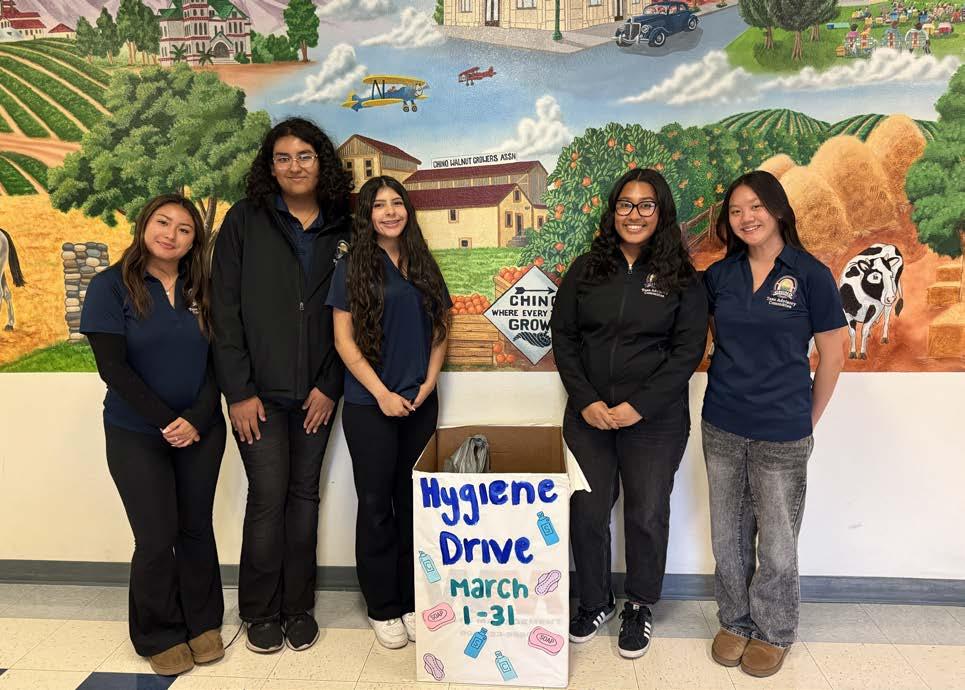
develop professional skills that aren’t always taught in school. “You don’t fear adults as much anymore,” said Flor. “You talk to people of all ages,” added Karisia. “School can be a bubble. TAC broadens your perspective.”
Working alongside city staff and volunteers, teens learn how to adapt and collaborate in a professional environment. “You learn how to push yourself to help others and make real friendships,” said Ximenia. “You see the impact of your work face-toface—it’s not just a title or donation.”
The teens’ social media skills came in extra handy for one of this years’ service project, a Halloween clothing donation drive. “We realized there was a need for costumes, for both children and adults.” said Karisia. They got to work creating a reel, promoting the donation drive. It worked wonders, netting them over 90 costumes to provide to families in need. Reflecting on the experience, Jazzlyn said, “Our social media campaign was fun and interactive— that’s why it worked.” Ximenia added, “We influence other teens by sharing what we’re doing. Social media helps spread the word fast.”
Flor also saw the power of digital outreach when she starred in the city’s Fourth of July Fireworks safety campaign. “During the fireworks campaign, I got to speak on something serious,” she said. “I felt like people might actually listen.”
Their ideas are fresh, creative, and rooted in lived experience. When asked about future reels, they had plenty of ideas. “A day-in-the-life, volunteering, grabbing Starbucks, then volunteering again,” suggested Karisia. “It’s fun and shows our bond.”
And they know what makes content stand out. “Reels need to get straight to the point—teens have short attention spans,” said Ximenia. “Bold text and transitions really catch our eye.” Behind every reel, post, and comment is a deeper mission: inspiring the next generation of changemakers.
For the teens, TAC is also a springboard to bigger things. Jazzlyn credits TAC with helping her gain admission to UC Santa Barbara, where she plans to continue volunteering and staying connected to her community. “I wrote about TAC in my college essays,” she said.
“It opened doors and introduced me to people I wouldn’t have met otherwise. I can’t wait to come back to Chino and see how everyone’s grown.”
Ximenia’s accomplishments speak volumes about the power of early civic engagement. A future political science major at UC Berkeley, she’s already secured a summer internship with Congresswoman Norma Torres and plans to serve her hometown in government one day. “I’ll volunteer through College Corps and hope to return to Chino to work in local government,” she said. The College Corps program gives students the opportunity to get hands-on experience serving their communities through work in public and non-profit sectors, perfect for a civic minded student.
Flor was able to build up her confidence, stating, “I used to be nervous, now I can talk to a whole class!” Karisia had a similar experience, stating, “TAC showed me there’s more to learn beyond school. I’ve grown so much.” She added that “it has also helped my job applications.” n


By Hannah Duncan, Marketing and Communications Director, Romtec
Building code requirements have evolved over the years and continue to evolve to meet the varied needs of the public and make public spaces truly accessible for all community members.
As part of building code requirements in California, a leader in accessibility efforts, there are certain requirements for accessibility to public buildings and their toilet rooms.
In California specifically, 50% of the stalls in a restroom building need to meet ADA requirements. For many years, restroom building designers, suppliers, and installers understood this code to mean that any new public structure in the state of California required 50% ADA wheelchairaccessible restrooms to meet the requirement.
50% of wider stalls could be devastating to a project’s budget, as this many ADA restrooms require a bigger building and thus more materials and more engineering.
Just as the standards have evolved for these buildings, so has the public understanding of the building code and its requirements. It has become apparent that “ambulatory stalls”, which are also for persons with disabilities, can help meet the ADA requirement when combined with the ADA stalls.
11B-213.2 Toilet Rooms and Bathing Rooms is the California building code that states, “Where multiple single user toilet rooms are clustered at a single location, 50 percent, but no fewer than one, of the single user toilet rooms for each use at each cluster shall comply with Section 11B603 (toilet & bathing rooms).”
The difference between an ADA stall and an ambulatory stall is that the
ADA stall is wheelchair accessible including turning space, signage, sink, doors, grab bars, toilet height, etc.
While the ambulatory stall doesn’t have extra space for a wheelchair turning space, it instead allows for a front approach for people using crutches, canes, or other mobility devices. An ambulatory stall also includes grab bars on the walls on each side of the toilet for canes to rest on and for supporting the user.
According to “Ambulatory Stalls: What Are They?” by Holman, Inc, “an ambulatory stall must be 60 inches deep and 36-37 inches wide from the sidewall or partition” whereas a standard ADA compliant restroom must include “The turning space either be a circle with a 60-inch
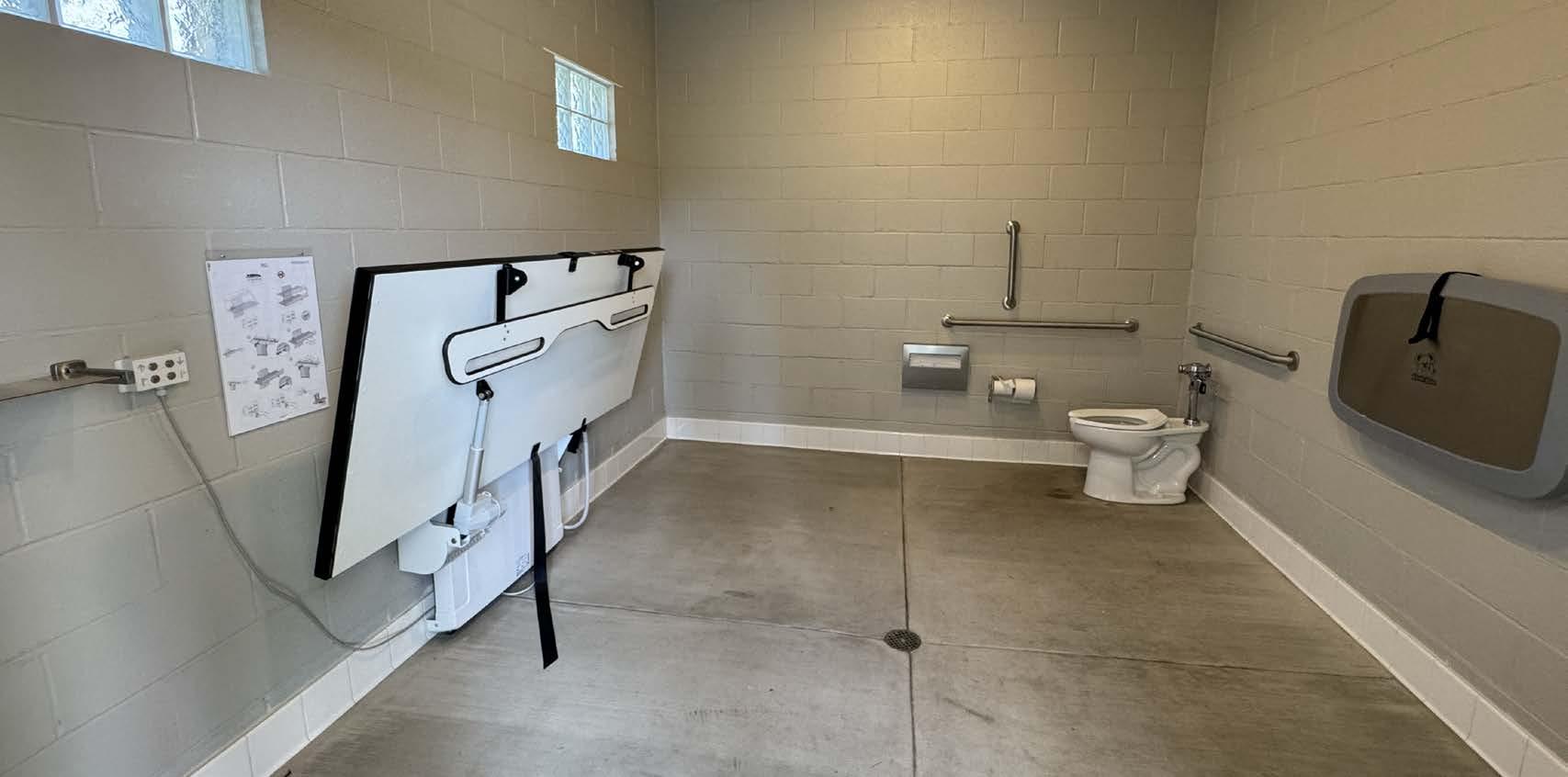
diameter or a T-shaped area. If the turning area is T-shaped, the total area must be no smaller than a 60-inch by 60-inch square with the base and arms of the turning zone a minimum of 36 inches wide. A portion of this turning space can be located underneath accessories or fixtures if the required knee and toe clearance is maintained.” (ADA Bathroom Requirements: Restroom Space and Toilet CompartmentsLaForce, LLC (laforceinc.com)
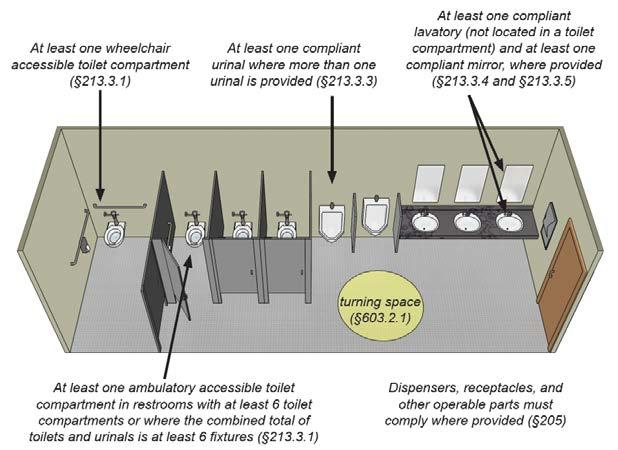
An ambulatory stall is smaller than the ADA stall, and if the building is smaller due to the need for less space, it naturally saves the owner money on the building’s supplies and construction costs.
Ambulatory stalls are most common in multi-user restrooms where each room is separated by gender and inside the room are a row of toilet stalls, and sinks. For unknown reasons, they are often overlooked in large single-user restroom configurations.
However, single user restroom buildings are becoming increasingly popular for accessibility, security, and privacy reasons, and when combined with ADA wheelchair accessible stalls and ambulatory stalls to make up the 50%
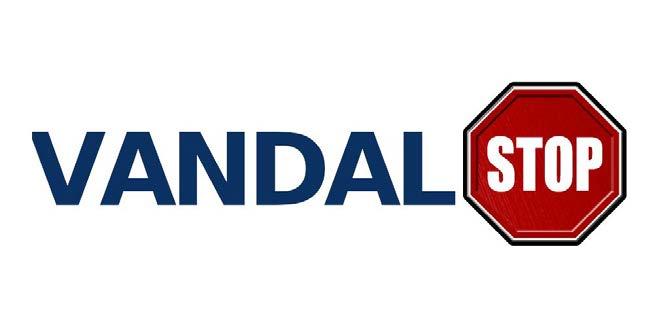

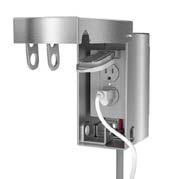




requirement, they can save the owner money. The footprint of creating 8 stalls that can be used by anyone of any gender versus creating an 8-stall building where 4 stalls are for women and 4 stalls are for men, and each section of stalls is separated into a different room, can be more equitable and more economical.
More owners are opting for the single-user configurations because they satisfy the privacy concerns of users while also providing more toilets for everyone instead of restricting who can use which space. Single-user restrooms are also most beneficial for families. They provide more space and privacy for parents with their children or caretakers with their client, patient, or family member. Single users also allow for family restrooms which offer further accommodations to families with things such as a diaper changing station, adult changing station, or a mounted seat with seatbelt for children.
Another great way to save money on the design, supply, and construction of public restroom buildings is to design the building for exterior sinks. ADA requirements extend past the requirements for toilets but also include requirements for sinks. When putting the sinks outside the structure, the engineer no longer needs to design the sink area for space for a wheelchair, shrinking the footprint of the building, the amount of materials, and the construction to save more money.
There has been an uptick in single-user restroom projects in warmer climates that allow for the use of exterior sinks.
As with all these project types, it is a good idea that the customer reaches out to the permit review agency to confirm they agree that ambulatory stalls combined with ADA wheelchair accessible stalls plan meets the code and will be issued a permit with this type of layout. n
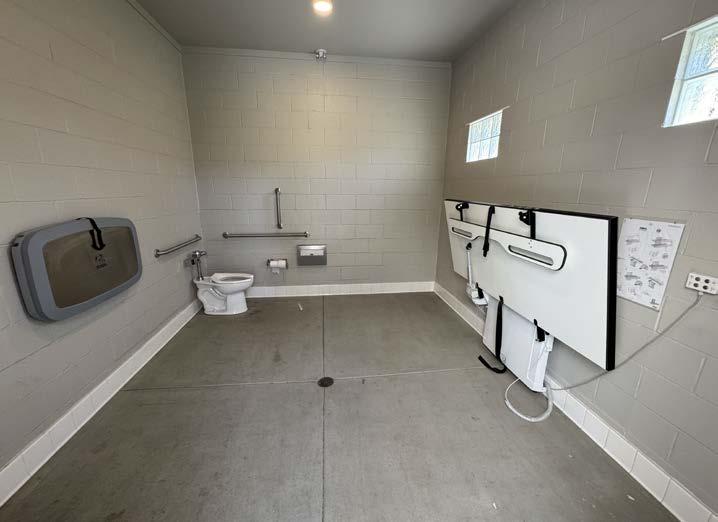


By Eric Herron & Shanti Rao, AYSO Region 13 | Make friends through soccer
AYSO Region 13 serves Altadena, Pasadena, and La Cañada, CA. Before the town of Altadena was destroyed in 2025, the soccer league was able to increase participation, diversity, and community involvement over the course of several years through a self-sustaining pay-what-you-can policy.
Soccer should be the most accessible team sport, yet participation by young children has declined over the last 15 years. One organization in Los Angeles has found a way to reverse this trend, by examining and reducing barriers as part of a diversity & inclusion strategy.
As part of an effort to improve diversity and inclusion, the league declared that every child was invited to play, and fees are Pay What You Can, no questions asked, on the honor system. Four years into the experiment, hundreds of additional children are playing soccer, and the fee policy is financially sustainable.
Pay What You Can (PWYC) does more than lower the cost – it promotes a sense of community and shared values of belonging among the families in the soccer league.
Can you imagine living in a pay-whatyou-can world?
What if you go out to dinner and you say, “We can only afford $100,” and they reply, “Sure thing!”
Imagine that, recovering from surgery, you receive an email from the hospital. Clicking the invoice link, you learn that health insurance is only covering half. Thankfully, you see the ‘Pay What You Can’ option and realize you won’t be adding to your medical debt today.
Of course, these are largely fantasy. But a few places do exist in our world today where Pay What You Can is possible. One place is AYSO Region 13.
Formed in 1972, Region 13 serves Pasadena, Altadena, and La Cañada in Los Angeles County. Against the mountains at the edge of LA, you could be there and not even know you’re in a megacity. The families are diverse in wealth and income, in race and ethnicity, and in education and employment, but they all come together each fall to play in a volunteer-run recreational soccer league. Through Pay What You Can (PWYC), declining enrollment turned into sustained growth, along with higher volunteerism and retention. But why was enrollment declining? Some proposed explanations were:
• kids were moving to club soccer
• kids were playing different sports
• rising costs were driving families out of the area altogether
• families were too busy to sign their kids up
These theories presume a limited pool of youth athletes. If so, then at

some point during the registration period, everyone who wanted to play would have finished registering. But what we observed was that the rate of registrations stayed constant during the 4-month window to sign up. This is sufficient evidence to reject those explanations.
Digging deeper, the leadership asked where the children were coming from. Or rather, where they weren’t coming from. At some public schools, 25% of all the students played soccer with AYSO. At other schools, only 2 of the students did. Mapping the locations of the households also revealed that a historically Black and Latin neighborhood was underserved.
They explored other hypotheses and mitigation strategies to invite those communities:
• Maybe they weren’t invited? Volunteers went to PTA meetings and open houses.
• Maybe it’s culturally unfamiliar? Formal orientation meetings, introduced and explained AYSO.
• Maybe they feel excluded? Volunteers developed a diversity & inclusion plan.
• Maybe they can’t afford it? In interviews, some parents said they had to choose between after-school activities and buying groceries.
• Maybe they’re bullied or stigmatized? A formal reporting and surveillance program monitors participant behavior, so leadership can intervene before it gets out of hand.
• Maybe they’d rather play other sports? That’s totally fine. Region 13 promotes other sports organizations and helps improve shared facilities.
• Maybe AYSO is perceived as inferior? AYSO added coach development seminars and encouraged teams to compete in tournaments. Celebrating wins promotes the narrative that AYSO is also a world-class sport program.
• Maybe they’re afraid they aren’t good enough? Parents from all

schools often express concern that it’s their child’s first time, and they’re afraid of being embarrassed. Skills clinics emphasize that support is available at all skill levels, supporting varying levels of family commitment.
• Maybe they don’t have a car? For families struggling with access, families may join the same team to share transportation.
• Maybe they don’t speak English? In-person registration events were held, with Spanish-speaking volunteers.
Discussions with school leaders revealed that to feel good about signing up, parents wanted to know that all their school friends could play with them. Pay-what-you-can removed price as a barrier, and signalled that every child at a school was invited, and expected, to give soccer a try. The website describes it as: “Region 13 wants everyone to play, so the league fee is pay-whatyou-can on the honor system, thanks to donations from those families who can afford to pay a little more than the suggested amount. You will be able to change the price at checkout.”
With the support of the City of Pasadena and the Pasadena Unified School District (PUSD), Region 13 reached out to public school leadership. Assurances that it was
“pay what you can, no questions asked, on the honor system” were what the administrators and PTA needed to endorse and promote the sport within their community. This led to year-over-year organic growth among public school students, many of whom were previously excluded. As evidence that families take this seriously, the average, selfdesignated discounted payment is $106 (of the suggested $225). Parents registered children to play for the first time, and some families even paid more than requested. The accumulated donations, plus sponsorships, and grants, make PWYC succeed.
It helped to target a few school campuses at a time. In 2021, the first year of outreach to Mary Jackson Elementary School, 100 kids from that school registered, 40% more than before the pandemic. The first-time soccer parents were reluctant to volunteer, so clusters of 3-4 students from Jackson were assigned to teams coached by parents from other schools. By 2023, the enrollment rate held steady, and enough parents volunteered to enable outreach to additional schools.
Before PWYC, around 10 families requested financial aid. In 2019, the first year of PWYC, a few dozen families used it, and $9,000 worth of
scholarships were offset by $6,000 in donations. In 2022, 8% of the players paid less than full price. In 2023, it grew to 12%. In 2024, 13.5% of the total AYSO community, over 300 kids, used PWYC. The suggested registration fee was increased slightly to cover the cost of the expected discounts.
From 2021 to 2024, participation grew from 2100 children to 2460. Beyond the numbers, kids and parents of diverse social and ethnic backgrounds are spending more time together, building oneon-one relationships. Parents from all corners of the community are volunteering, and more school friends are playing soccer together
Restaurants or hospitals are unlikely to adopt Pay What You Can anytime soon. But it is close to reality for youth sports. AYSO Region 13 has demonstrated this model and is continuing to prove its viability.
The American Youth Soccer Organization has six philosophies, the first of which is: Everyone Plays. This means that everyone plays in every game, and it can also mean that every child in any community can learn how to be part of a team. n
Pay What You Can can be revenue-neutral, by accounting for the expected payment rates in the program budget. If you’re interested in a financial breakdown of the program, please contact alisha@cprs.org for a copy of the complete article.
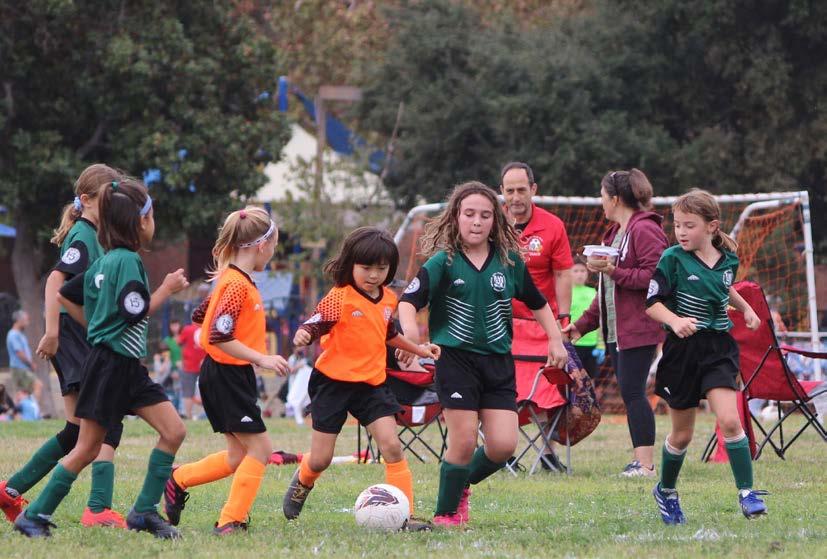
“This beautiful new library is more than just a place for books; it’s a community hub where residents can come together, learn, and create.”
- Todd Gloria, Mayor of San Diego


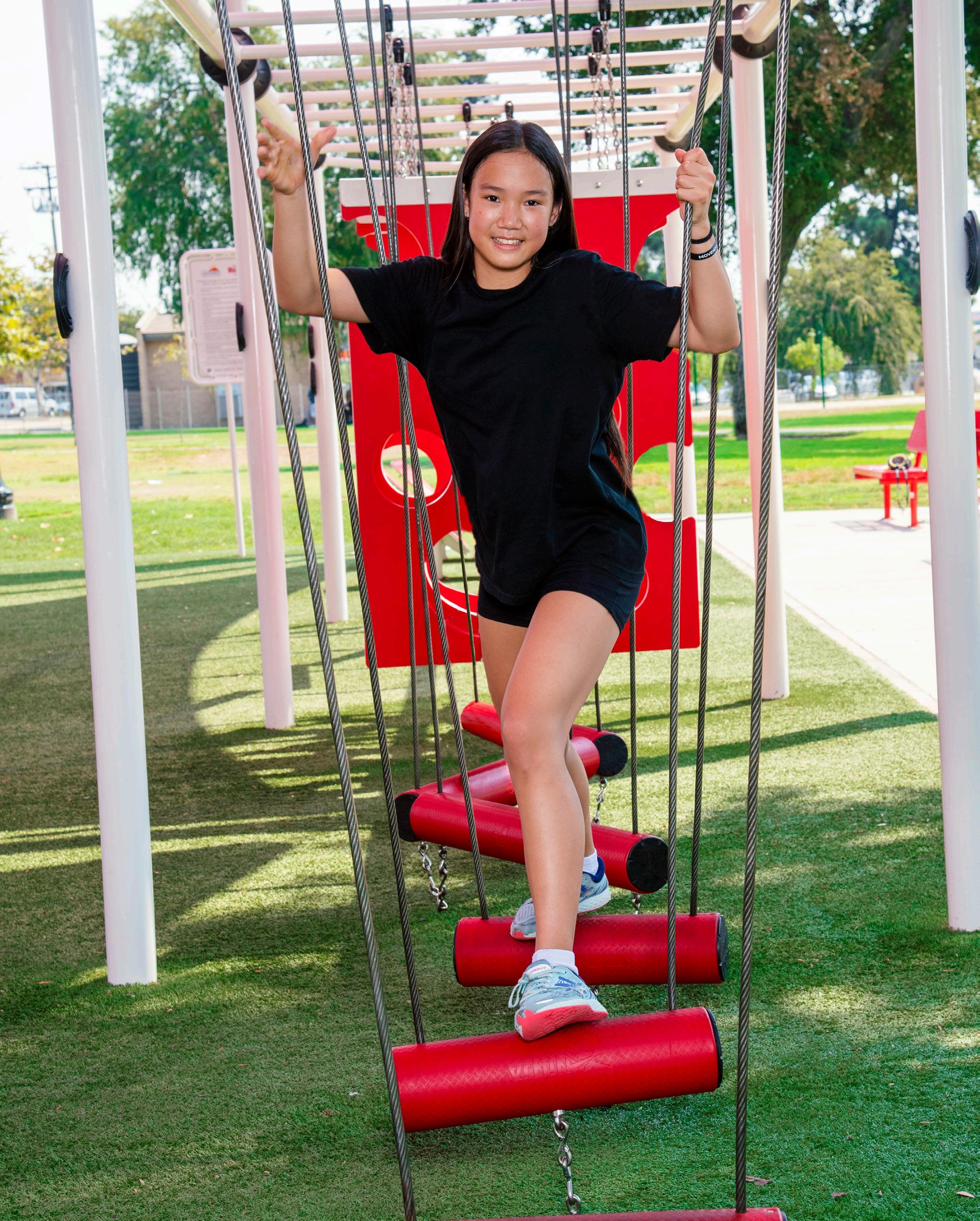
By Heather Stephenson, City of Paso Robles
In 2017, Paso Robles Recreation Services launched a unique partnership with the Paso Robles Housing Authority (PRHA) to bring no-cost swim lessons to children living in the community’s lowincome housing. The collaboration was developed in coordination with YouthWorks, a nonprofit affiliated with PRHA that focuses on teaching leadership and job skills to prepare youth for the working world.
This initiative offers more than just an opportunity to swim—it’s a deeply rooted community effort to promote safety, confidence, and connection through aquatics.
The swim lessons are made possible through a shared funding model: YouthWorks secures grant funding to cover 50% of each
child’s registration fee, while the remaining costs are covered through Paso Robles Recreation Services’ scholarship fund, supported by donations collected at the City’s popular summer Concerts in the Park series. These community events, hosted in partnership with the Paso Robles REC Foundation, ensure that the lessons remain free to families who might not otherwise have access.
Since its inception, the program has grown steadily—both in participation and in impact.
“This is the thing our kids look most forward to in the summer,” says Betian Webb, Director of Community Services for the PRHA. “They start asking me about swimming months before the lessons start. These are
kiddos whose parents are working all day, so they’re cooped up indoors, often with only a TV for company.”
For many of these children, swim lessons are their first introduction to structured aquatics. Beyond water safety, the program provides a space where kids can build confidence, resilience, and a sense of belonging.
“Over the years, we’ve seen the littlest ones stay in the lowest levels time after time, until one day it all clicks—and they move up,” says Webb. “They love being in the water regardless, but when they attain a new level, it builds their confidence and resilience—qualities these kids need more than most.”
For Paso Robles Recreation Services, the program is a meaningful example of how recreation can serve as a
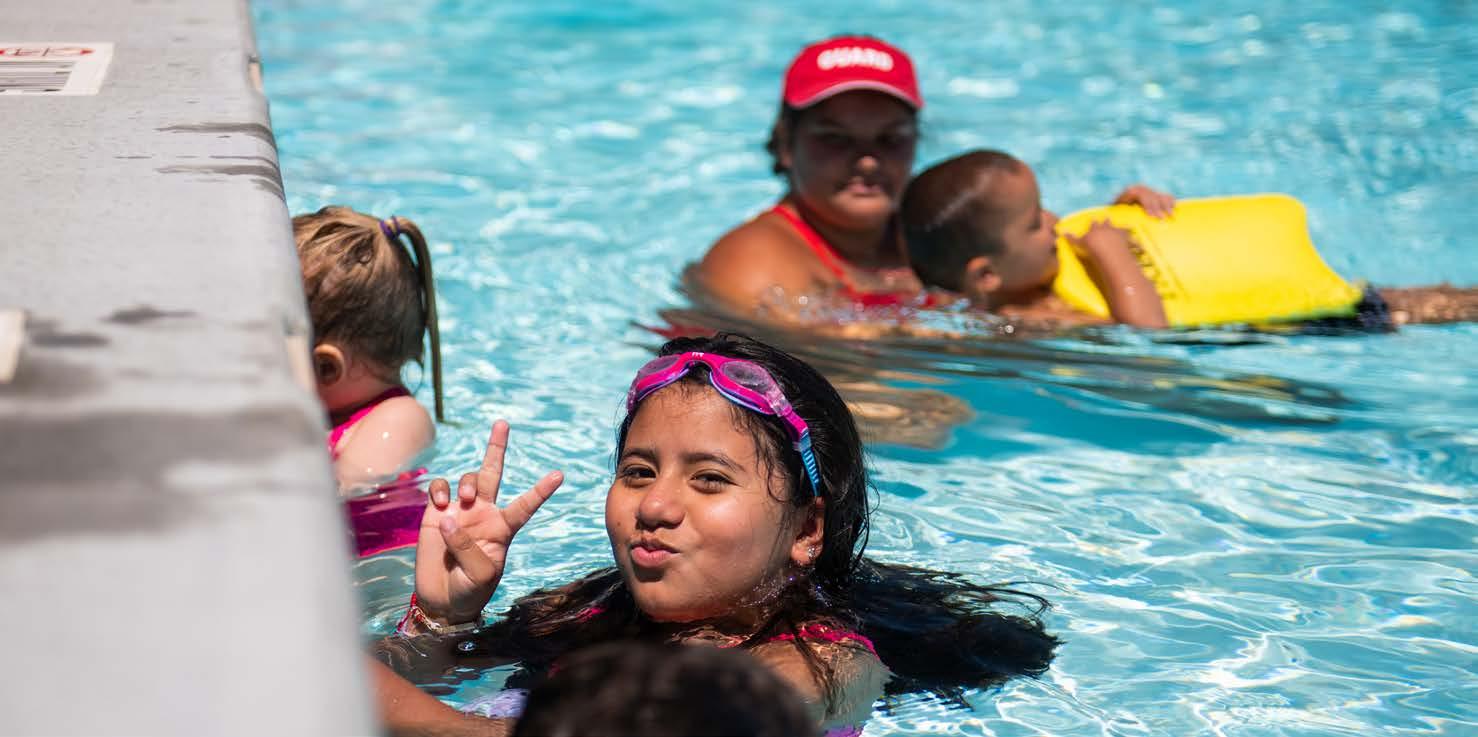
bridge between city resources and underserved communities.
Lynda Plescia, Recreation Services Manager for the City of Paso Robles has been involved in the Paso Robles program since its inception. “This partnership truly reflects our mission—making recreation accessible to all. These swim lessons build confidence, dignity, and a real sense of belonging. It’s inspiring to think that some of these young swimmers may one day join a community swim or dive team. We look forward to providing scholarships to help these young swimmers participate in our Jr. Lifeguard program and eventually become lifeguards and swim instructors for the city. By investing in these children at a young age, we give them an important opportunity to not only become water safe but to thrive as they grow into teens and adults. That’s community-building at its very best.”
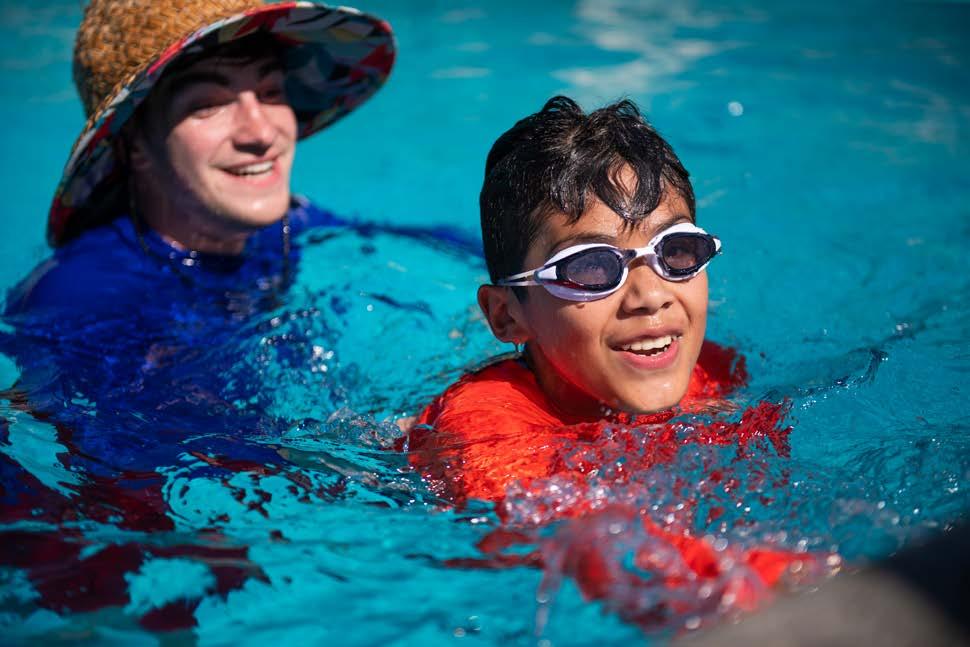
As the partnership continues into its eighth summer, it stands as a model for how aquatics programs can be more than just fun in the sun. In Paso Robles, they’ve become a vehicle for community building—
creating memories, nurturing growth, and providing a life-saving skill for children who deserve the opportunity to thrive in their community. n

Landscape architects, park planners, and civil engineers at David Evans and Associates, Inc. (DEA) provide creative and innovative design solutions that balance growth with environmental sensitivity. DEA offers you experienced professionals in multiple disciplines who can quickly form a team to meet your project needs. We work closely with public and private clients to plan and design parks, trails, resorts, residential, and commercial land development projects.

By Deanna Rey, Regional Advisor, the KYA Group
Creating more inclusive recreational spaces goes beyond meeting legal requirements—it’s about building community connections and ensuring that everyone, regardless of ability, has the opportunity to enjoy play and exercise. The City of Seal Beach has taken meaningful steps toward this goal with the transformation of Heather Park, incorporating accessible features that make the park more welcoming to individuals of varying abilities.
Heather Park’s renovation stands as a model of how parks can be thoughtfully designed to serve everyone. Key elements were updated to include features that support inclusivity for people with disabilities. The project aimed to enhance recreational opportunities while integrating some accessible
components that promote engagement across abilities and age groups.
The design of the park was carefully crafted with input from multiple stakeholders. KYA played a crucial role in ensuring that the park’s layout met the highest standards of accessibility to encourage movement and social interaction across generations.
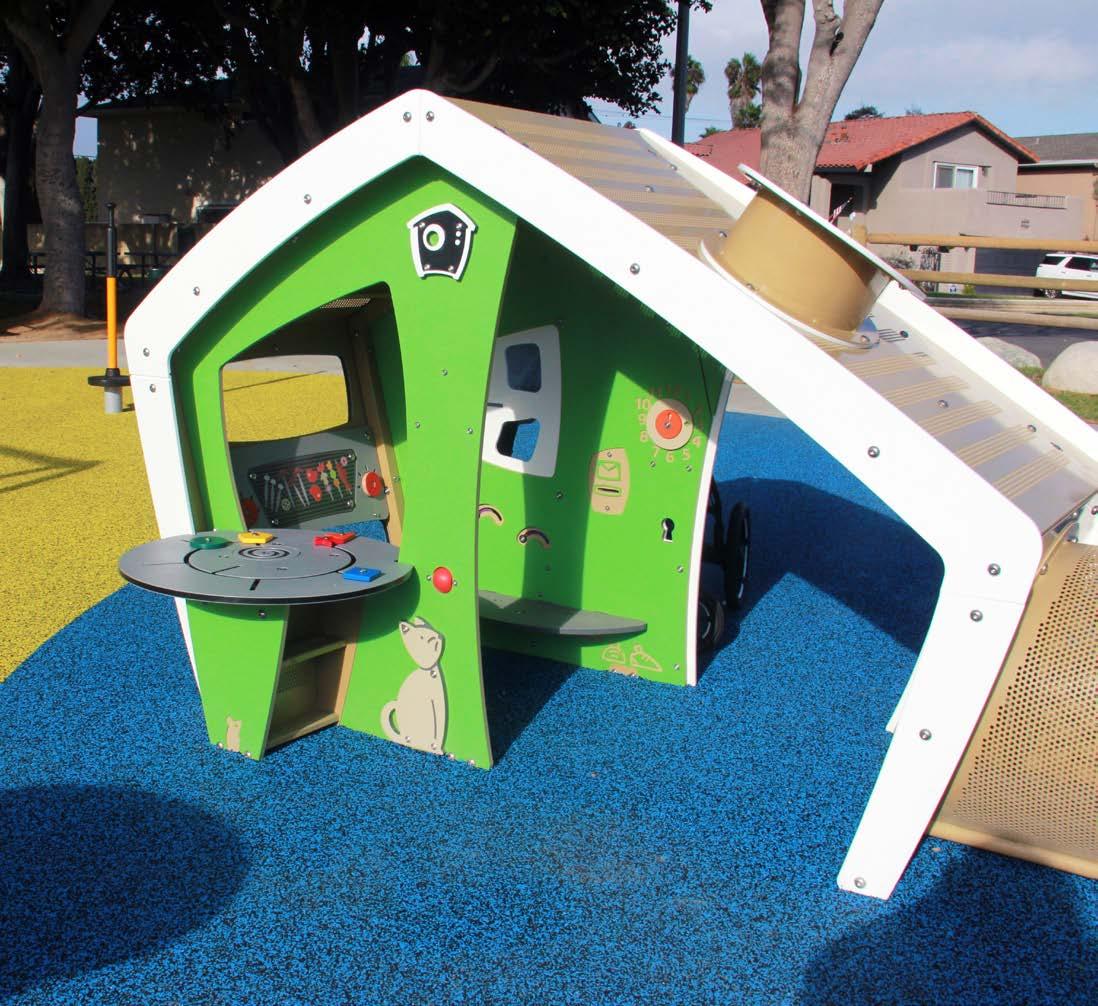
The modernization began with the removal of aging equipment to make way for new, more accessible features. ADA-compliant swings and smaller, stand-alone play structures were introduced, providing accessible options for children with mobility challenges. Colorful pouredin-place (PIP) rubber surfacing
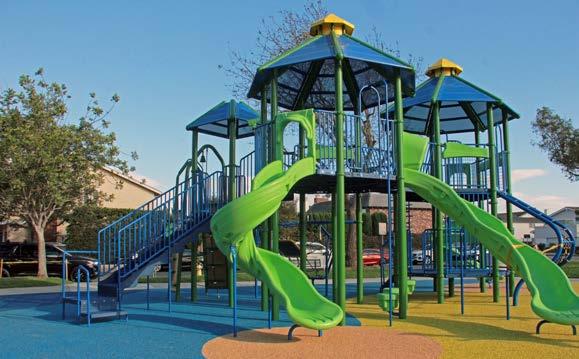

supports mobility and safety, while decomposed granite (DG) and concrete pathways improve overall access. Shaded picnic areas, updated landscaping, and perimeter fencing contribute to a welcoming and secure environment for all visitors.
Adding accessible features to parks like Heather Park helps foster social interaction and developmental benefits for children of all abilities. Inclusive environments encourage peer engagement, which is linked to improved communication skills and emotional well-being. While Heather Park is not fully accessible, its accessible components mark a step forward in building community spaces that are more inclusive, more engaging, and better equipped to serve diverse needs. n

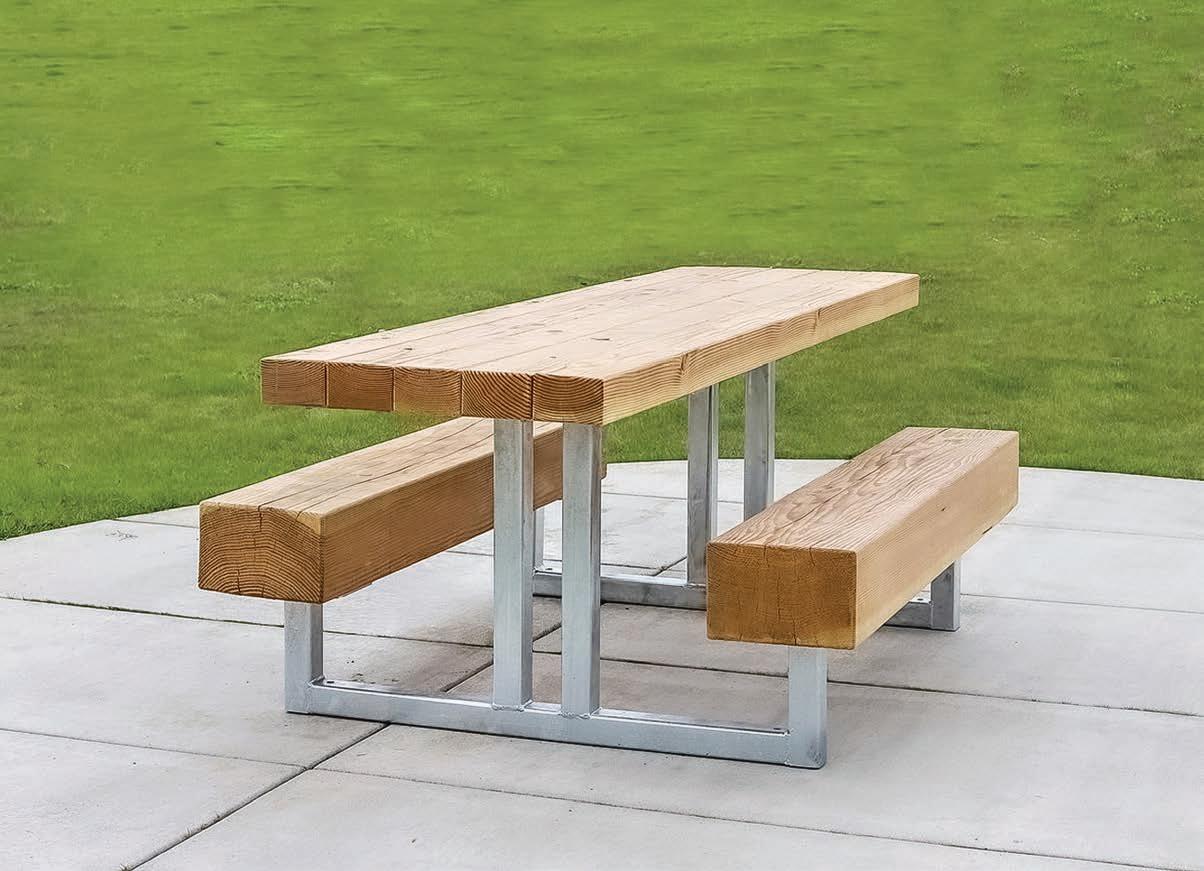
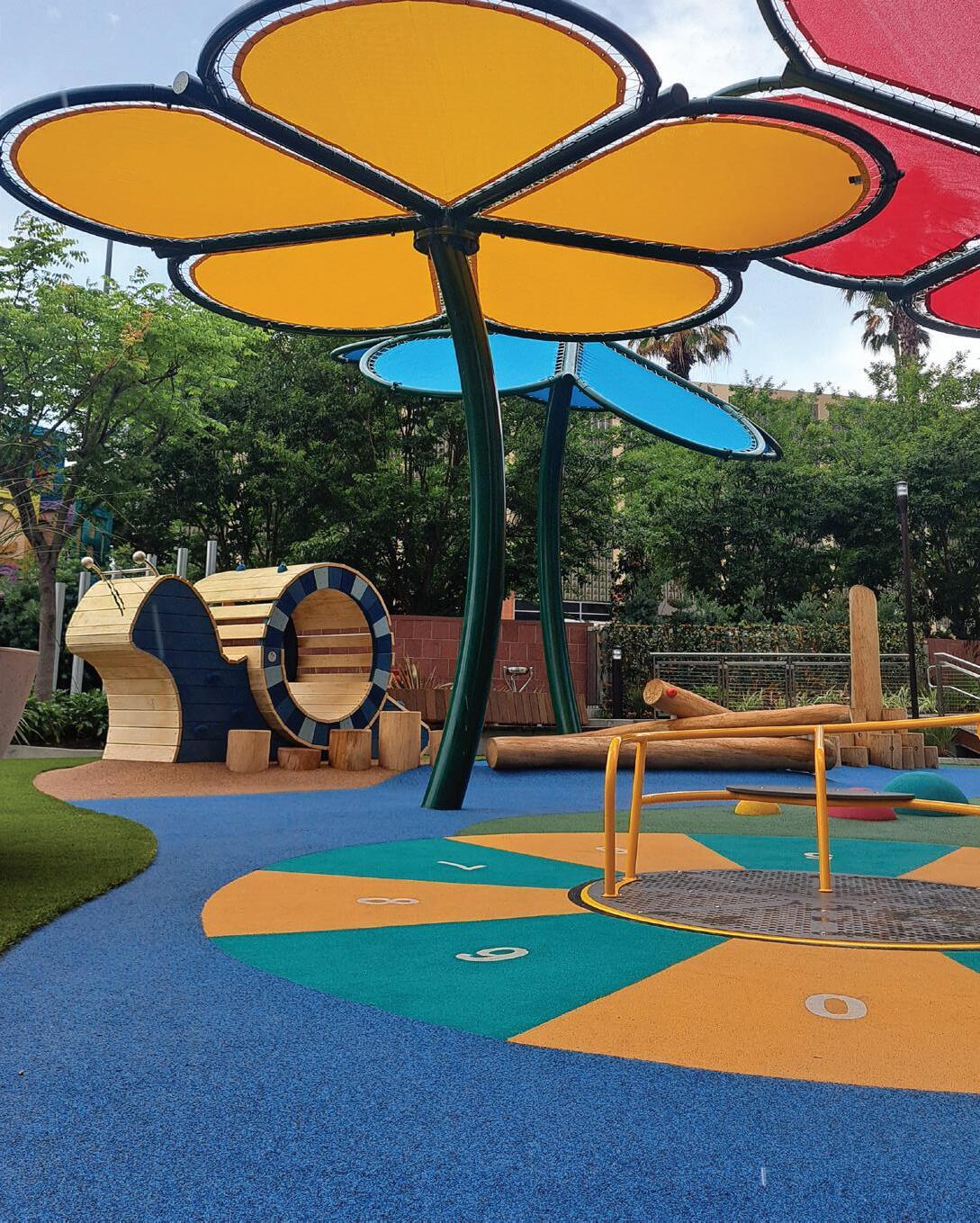




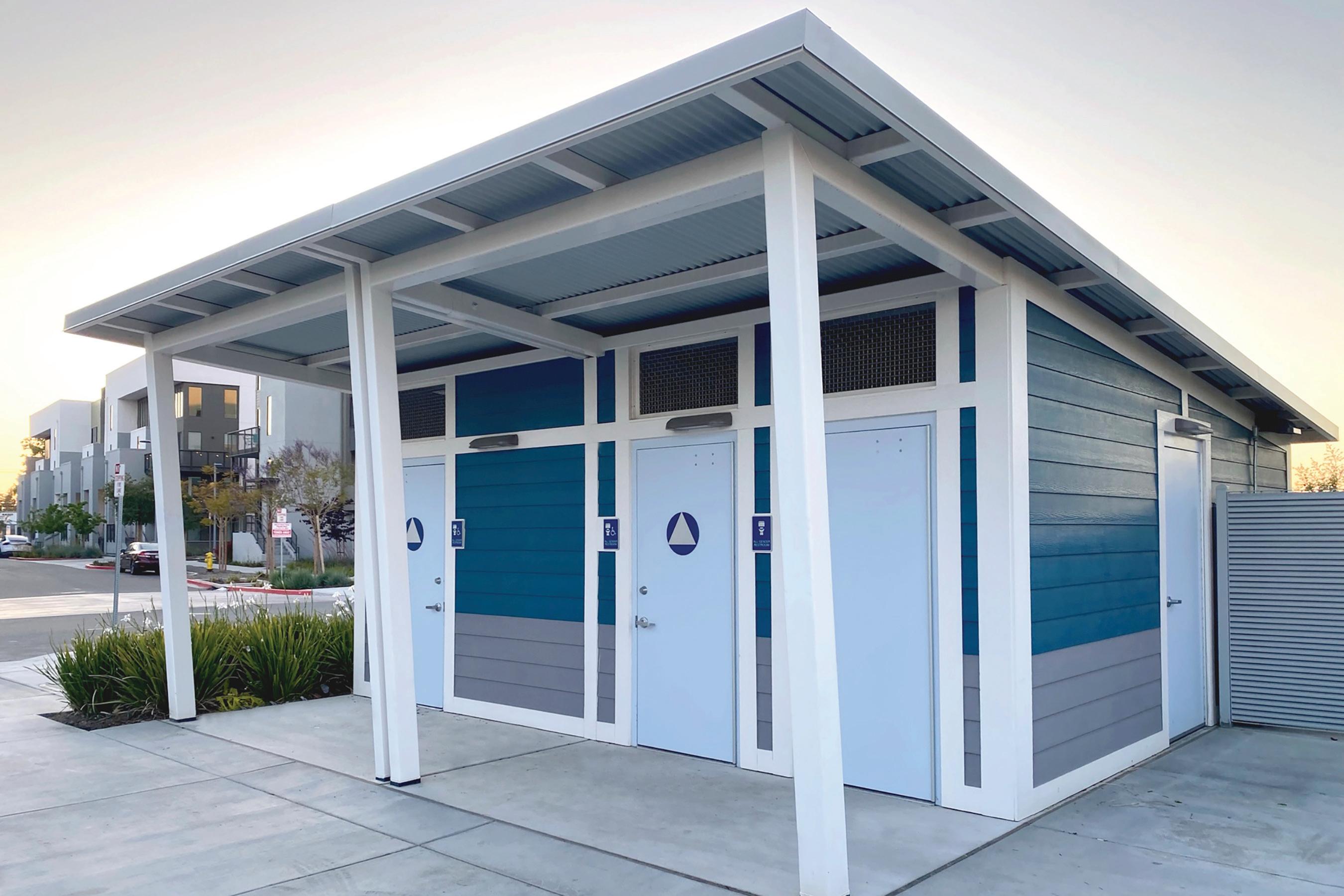
At Public Restroom Company, we understand that one design does not fit all. That’s the beauty in our modular design approach, every restroom floor plan is flexible and customized to the specific needs of your location. So if you need extra storage space or maybe a concession stand, let’s talk. If you want the building’s exterior to look a certain way, we have you covered. Let’s make your vision a reality.


By Susan Colon, Recreation Coordinator, City of Norwalk Recreation and Park Services Department
Walk through the Cultural Arts Center on a Tuesday evening and you might hear the melodic sounds of guitars and trumpets echoing across the hallways. Visit the second floor of the Norwalk Arts and Sports Complex, and catch Aztec dancers moving to rhythmic drumbeats. Peek inside the Mary Paxon Art Gallery and be inspired by the talent of our local artists. These sights and sounds are a part of Norwalk’s continued effort to celebrate and preserve the rich cultural heritage of our community.
The Norwalk Recreation and Park Services Department has been proud to offer diverse cultural programs and classes such as the Miniachis de Norwalk, Cultural Celebrations, Aztec Dance, and Ballet Folklórico.
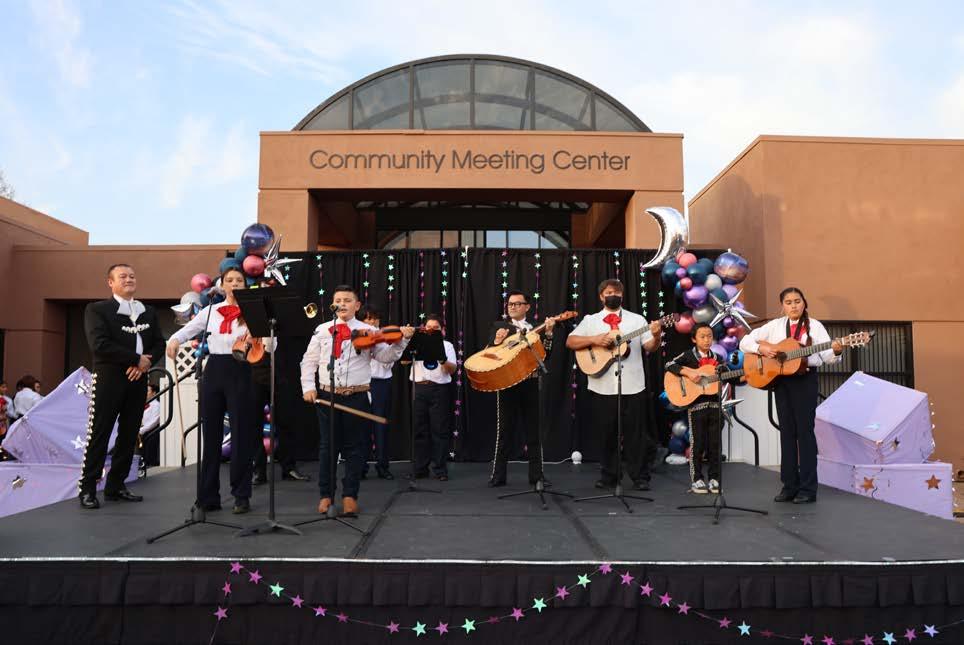
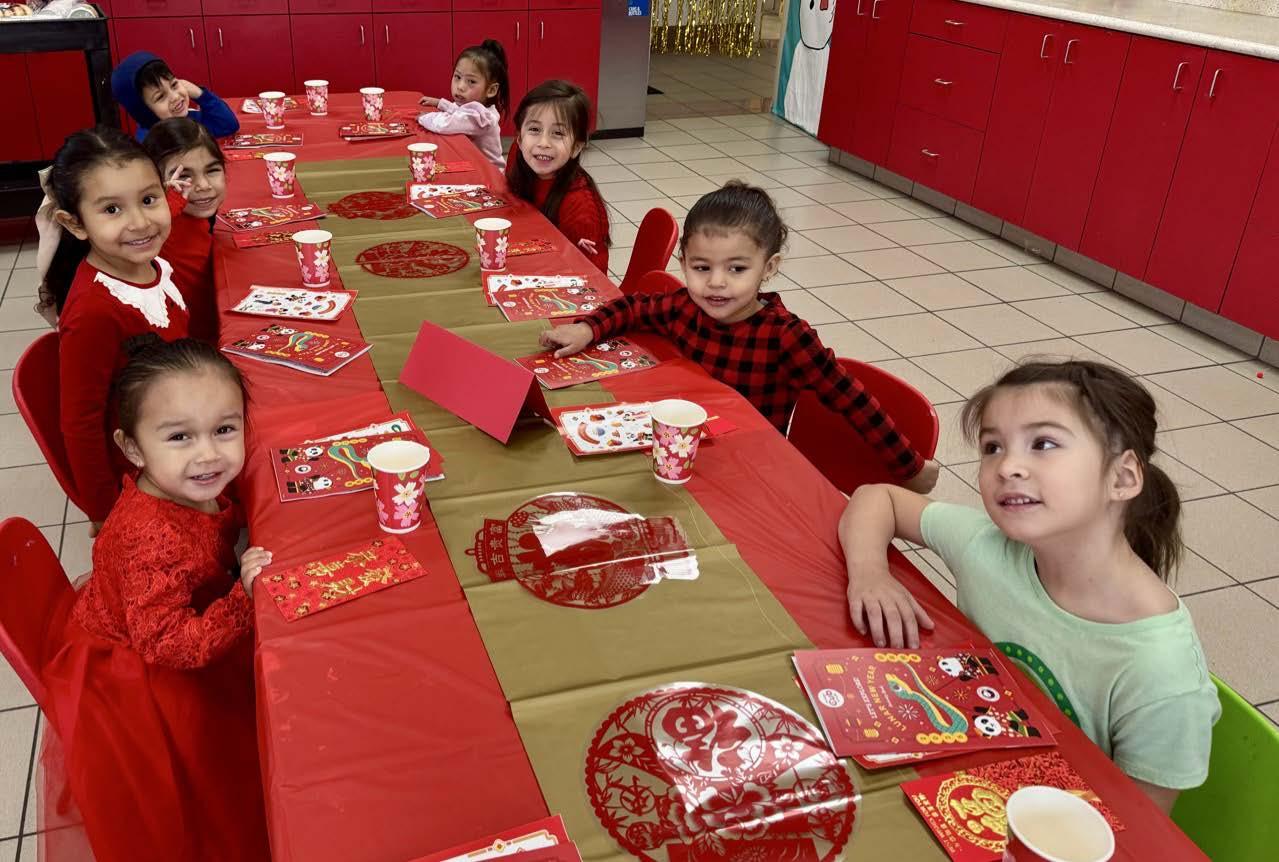

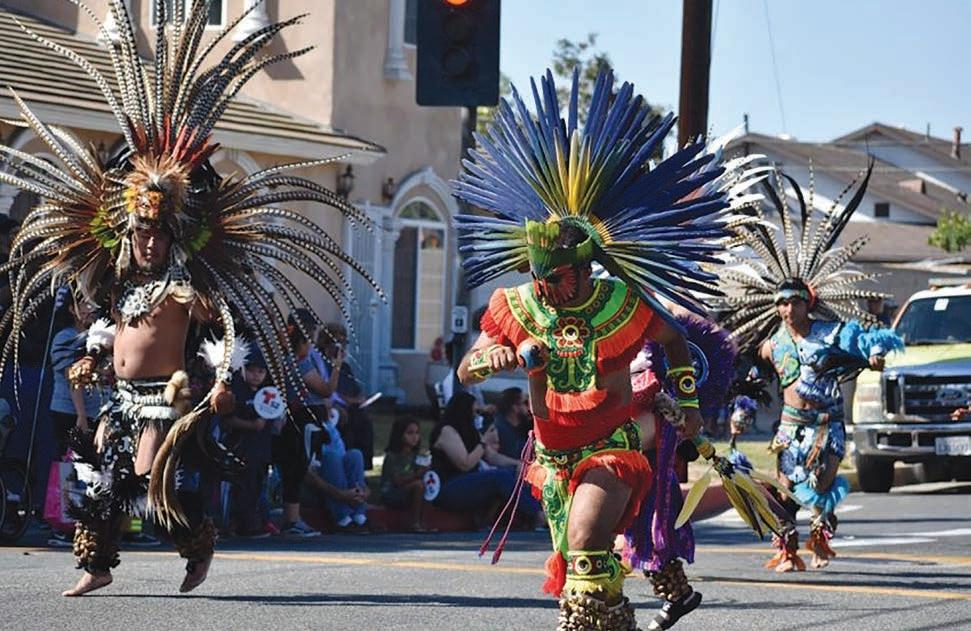
Since 2010, the Miniachis de Norwalk program has offered children ages 7 to 17 music instruction in violin, guitar, trumpet, and voice. This youth mariachi ensemble was also awarded the California Park & Recreation Society Award of Excellence in Arts and Cultural Services in 2017, the program builds confidence, teamwork, and pride.
Along with the established mariachi program, the City has recently introduced new cultural celebrations honoring Hispanic Heritage Month, Native American Heritage Month, Lunar New Year, and Asian American Pacific Islander Month. Activities have included book readings, bilingual story time, music and dance performances, gallery exhibits, film screenings, art workshops, and culinary demonstrations. The program created spaces for residents to share stories and traditions that celebrate Norwalk’s vibrant cultural landscape.
Our Aztec Dance class, led by volunteer instructor Ciro Avina, is free for participants ages 5 and older. It includes instruction in drumming, traditional songs, and ceremonial dance. Students regularly perform at city events, including the annual Arturo Sanchez Sr. Halloween Parade, helping to preserve and share ancient cultural practices in a public and inclusive space.
Led by long-time instructor Manuel Ramirez at the Norwalk Arts and Sports Complex, Ballet Folklórico classes also offer traditional Mexican folk dance instruction for participants ages 6 and up. Many students have remained in the program for over 15 years, continuing to perform at annual city events. These performances are a colorful and vital way to preserve heritage and pass down traditional dance to younger generations.
The key to building programs that reflected Norwalk’s identity was simple: just listen. Community members shared their suggestions for more cultural representation. Staff partnered with local agencies such as the Norwalk Library, Milagros Cinema, and Mija Books – and
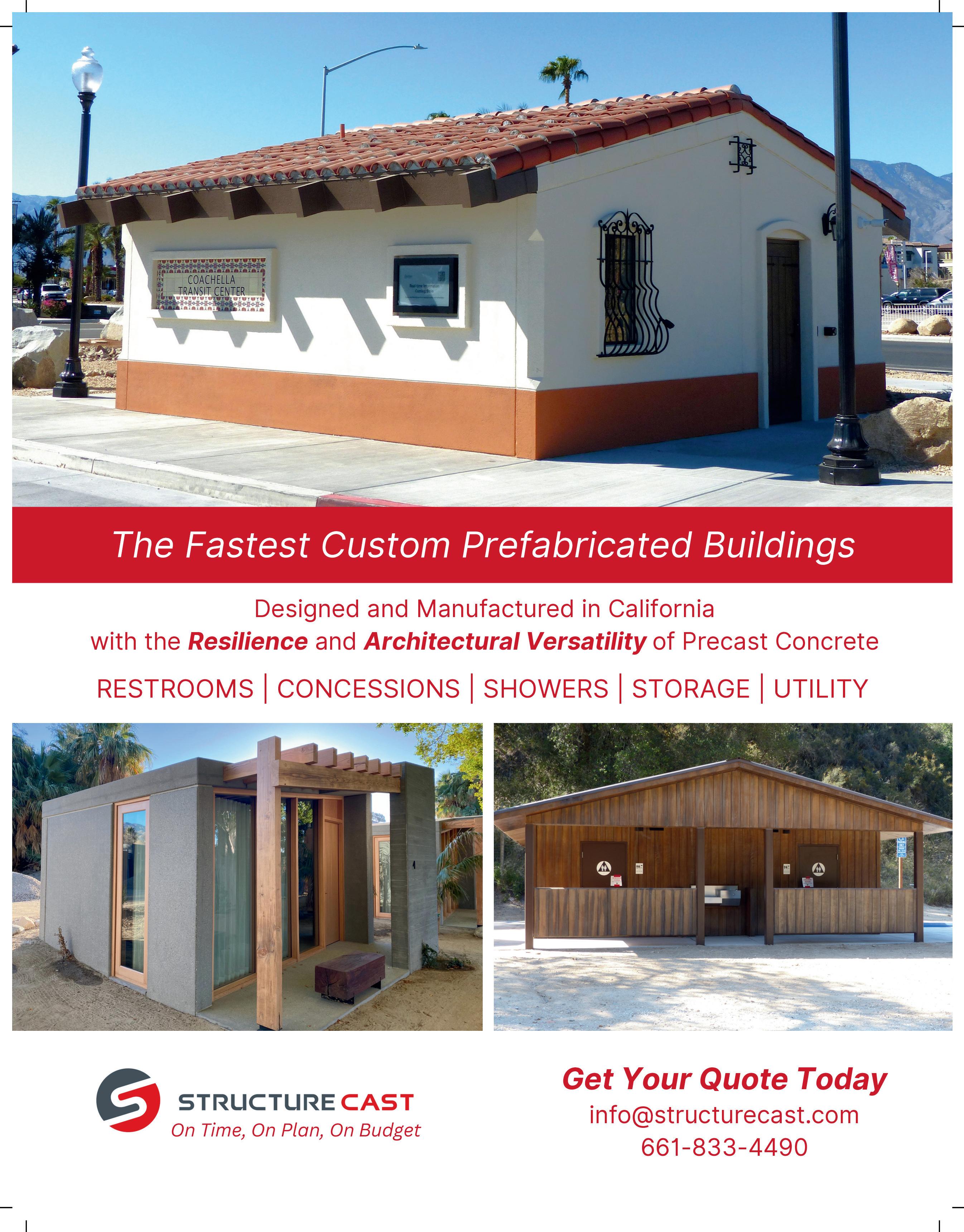






together developed meaningful activities, that were fun and educational.
In 2020, Verde Design began planning a 7.5-acre park along Cathedral City’s Whitewater River, designed to connect with the CV Link trail. The plan included open green space, sports courts, play areas, fitness stations, and picnic spots. The park’s completion and grand opening happened in the Spring of 2025.
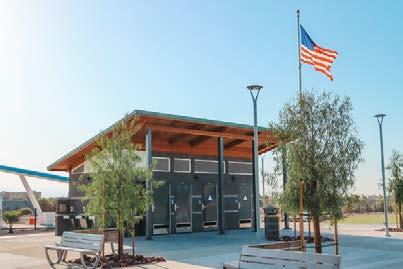

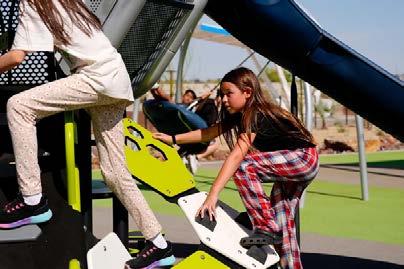

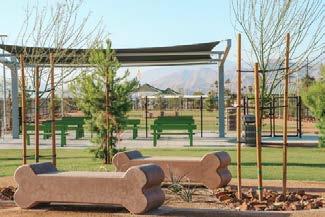
For more information or to connect with one of our staff members, visit us at:
Verde Design, Inc.
Verde Design Incorporated
One of the greatest outcomes of these cultural programs is how they are open for all generations. Grandparents came to watch their grandchildren perform mariachi songs they once sang. Parents joined Aztec dance classes with their kids. At our cultural heritage events, you’ll see families and individuals of all ages, excited to learn and participate in all the planned activities. These moments remind us that parks and recreation isn’t just about sports and playgrounds—they’re about building belonging. And in Norwalk, we’re proud to offer programs that celebrate who we are, where we come from, and how far we can go together. n
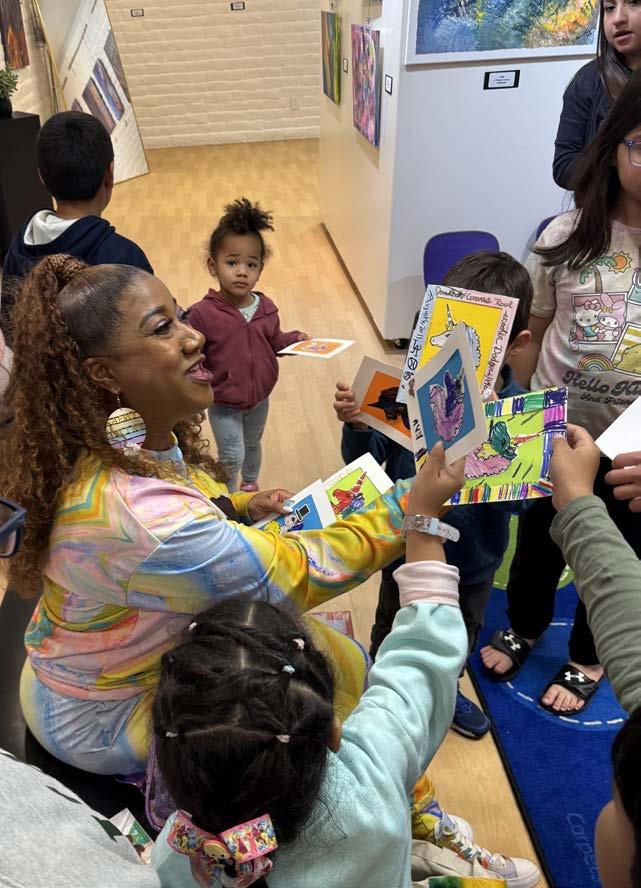
Hirsch & Associates, Inc. is an award winning landscape architecture, community planning and urban design firm centrally located in Southern California. Founded in 1977, Hirsch & Associates, Inc. has provided quality design, project management and professional landscape architecture to public agencies and private developers. We specialize in the following:
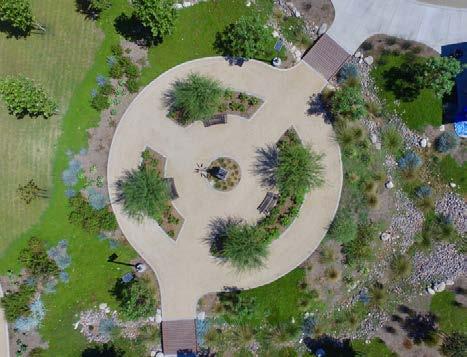


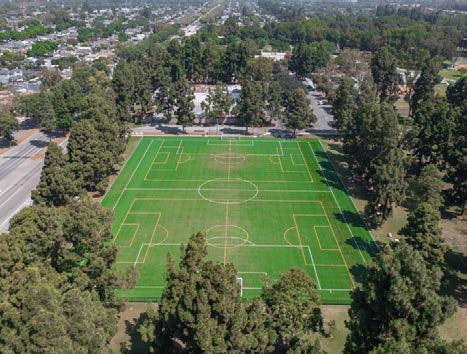



What’s in a name? When it comes to themed spaces like aquatic parks and recreation centers, the answer is: everything. A strong brand sets the tone for the guest experience, inspires community pride, builds lasting loyalty, and boosts attendance. We spoke with managers from two standout facilities—The Wave in Dublin, and The CORE Recreation Center in Elk Grove—to explore how their facility names and visual identities came to life, and how strategic branding shapes their marketing efforts. Through short Q&As, they share insights on the impact of thoughtful branding in bringing their spaces to life and keeping visitors coming back.
Q: Who created the name “The Wave” for the aquatic park, and how did the branding process unfold?
A: Suggestions were collected from Parks and Community Services staff members, other City departments, and community members. These suggestions were discussed and voted on during a staff meeting, then sent to management for a final vote to select the name. The selected name and runners-up were presented to the Parks and Community Services Commission, and ultimately to the City Council for final approval. A Florida-based company, 3i, was hired to create the branding once the name was selected.
One element that may have influenced the name choice was the unique architectural design of the indoor pool roof, which closely resembles a wave.
There was also public outreach and voting to name the six slides on the slide tower, with each name representing local interests:
1. Emerald Plunge
2. Dublin Screamer
3. Shamrock Swirl
4. Golden Wave
5. Mount Diablue
6. Riptide Rider
Q: How do you think having a distinct name and identity like “The Wave” has impacted community perception and attendance over the years?
A: Interesting question. I’ve worked for many aquatic and recreational facilities over the years—such as the San Ramon Olympic Pool, Wildcat Recreation Center, and Cunningham Aquatic Complex—whose names often get shortened into acronyms or nicknames that only catch on over time.
Having a short, catchy, and waterrelated name like The Wave gives the facility instant recognition. It’s easy to remember and strongly associated with the aquatic experience, making it more likely to come to mind first compared to a longer, more formal name. I believe this has positively impacted both community perception and attendance over the years.
Q: What role does the name play in your marketing and promotional efforts compared to if it were just called the “Dublin Aquatic Center”?
A: Every chance we get, we incorporate wave graphics in our promotional materials and use catchy puns and phrases related to waves. The swoop under the logo, which represents a wave, along with other visual wave motifs, reinforces brand recognition.
The name The Wave also allows for playful, engaging marketing that resonates with both kids and adults, which would be more difficult to achieve with a generic name like “Dublin Aquatic Center.”
Q: How has branding helped create a sense of destination or excitement around visiting the waterpark?
A: Branding has played a major role in turning The Wave into more than just a community pool—it’s a destination. From the moment people see the signage or hear the name, it evokes fun, summer vibes, and
an escape-like experience that people look forward to. The consistent visuals, the themed slides, and the name itself create a unique identity that makes visiting feel special and memorable.
Q: Do you see the park’s brand contributing to community pride or identity? How do locals talk about it?
Absolutely. The Wave is something the community can rally around and take pride in. Locals often refer to it by name, and kids especially get excited to say they’re “going to The Wave.” It’s become a well-known landmark in Dublin, and that strong sense of identity helps connect the facility to the community on a deeper level.
Q: Has the name helped in attracting out-of-town visitors or tourists to the facility?
A: Yes, having a distinct and exciting name like The Wave definitely helps draw in out-of-town visitors. It sounds fun and inviting, and because it doesn’t have a hyper-local or


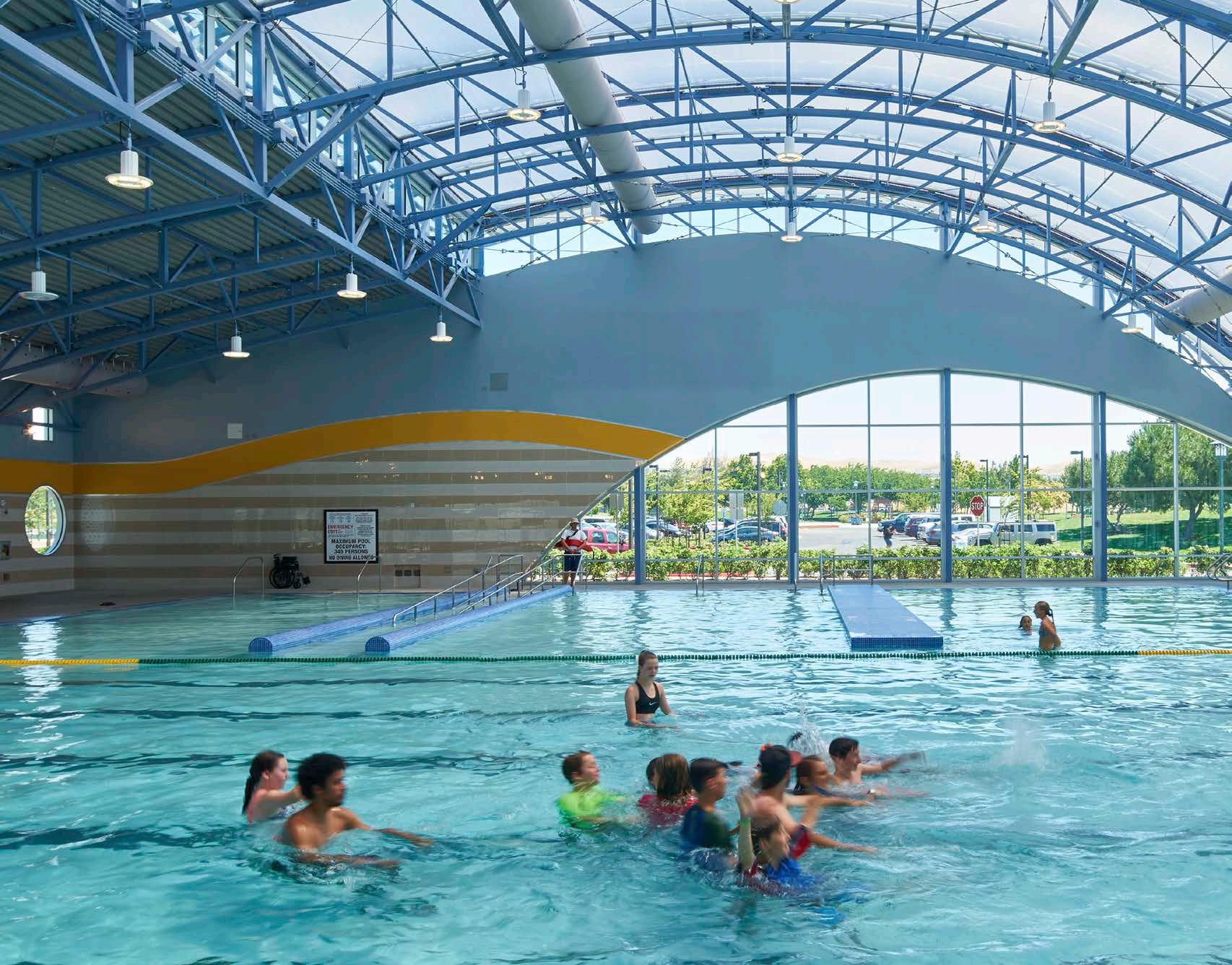
The City of Dublin developed a Graphic Branding Standards Manual to ensure consistent use of logos, colors, and design elements. This guide helps maintain a unified brand across all print and digital marketing materials.

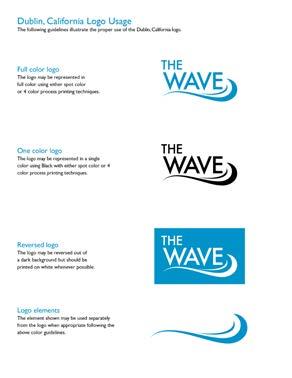

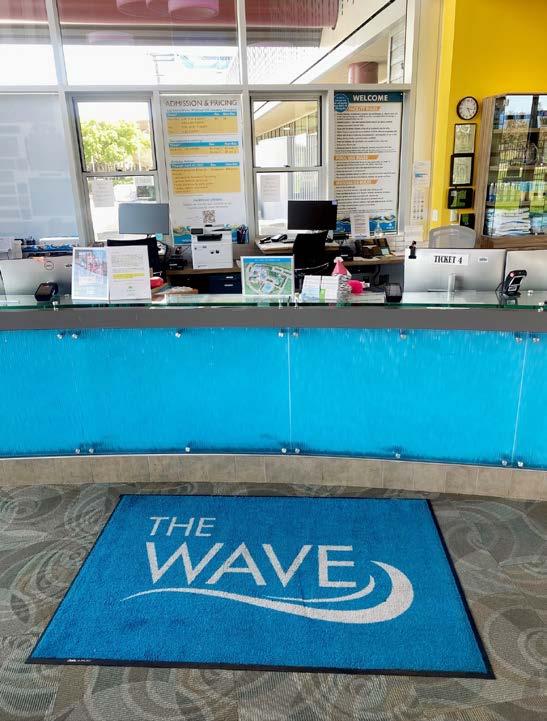

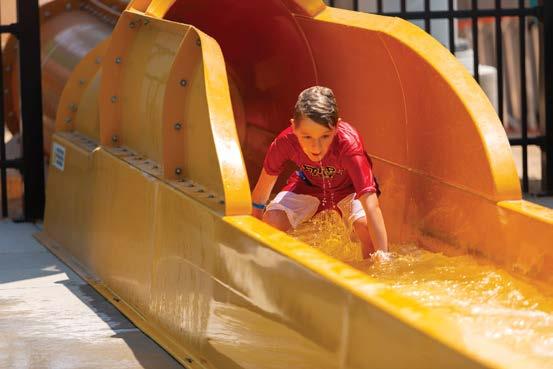
The Wave Waterpark opens Memorial Day weekend for the summer season! May 25 - 27; June 1- August 11; weekends through September 2 11:00 a.m - 6:00

Having a short, catchy, and waterrelated name like The Wave gives the facility instant recognition. It’s easy to remember and strongly associated with the aquatic experience, making it more likely to come to mind first compared to a longer, more formal name.

government-style name, it appeals more broadly. We’ve had visitors from neighboring cities and even further out who hear about The Wave through advertising, word of mouth, or online searches and are intrigued by the name alone.
Q: How do you incorporate the name and brand into the physical environment—signage, merchandise, programming, etc.? Do you sell Wavebranded merchandise?
A: We incorporate the brand into nearly every aspect of the facility. The signage features the wave logo prominently, and we have wave graphics throughout the park to reinforce the theme.
We also sell branded merchandise, including T-shirts, hats, water bottles, and towels with The Wave logo. In programming, we use wave-themed names for events and activities when possible to keep the branding consistent and engaging.
Q: Do you have any advice for other communities considering naming or rebranding their aquatic facilities?
A: Keep it simple, memorable, and relevant to your facility’s unique features or the spirit of your community. Engage staff and the public in the process to generate buy-in and gather creative input. Most importantly, make sure the name leaves room for playful branding and storytelling—it should spark curiosity and emotion.
Q: What’s your favorite part about the name and brand of The Wave— how does it reflect the spirit of the community or the park experience?
A: My favorite part is how the name perfectly reflects the energy and movement of the waterpark experience. It’s fun, dynamic, and a little bit adventurous—just like the community it serves. Plus, the wave imagery connects naturally to the park’s architecture and design, making it feel like the name and place were made for each other.
Q: Any other thoughts on the importance of naming and branding when it comes to a facility like this?
A: Naming and branding go far beyond just a logo or a sign—they
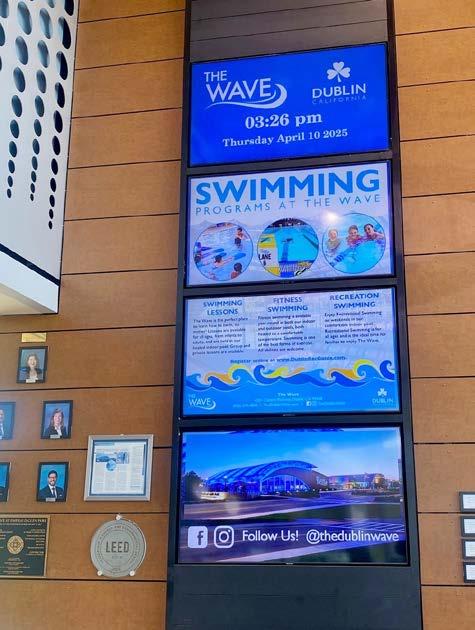
help shape the identity of a space and how people experience it. A strong brand creates emotional connections, encourages repeat visits, and builds community pride. In the case of The Wave, it turned what could have been a standard municipal facility into a beloved local attraction with real staying power.

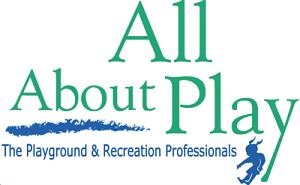

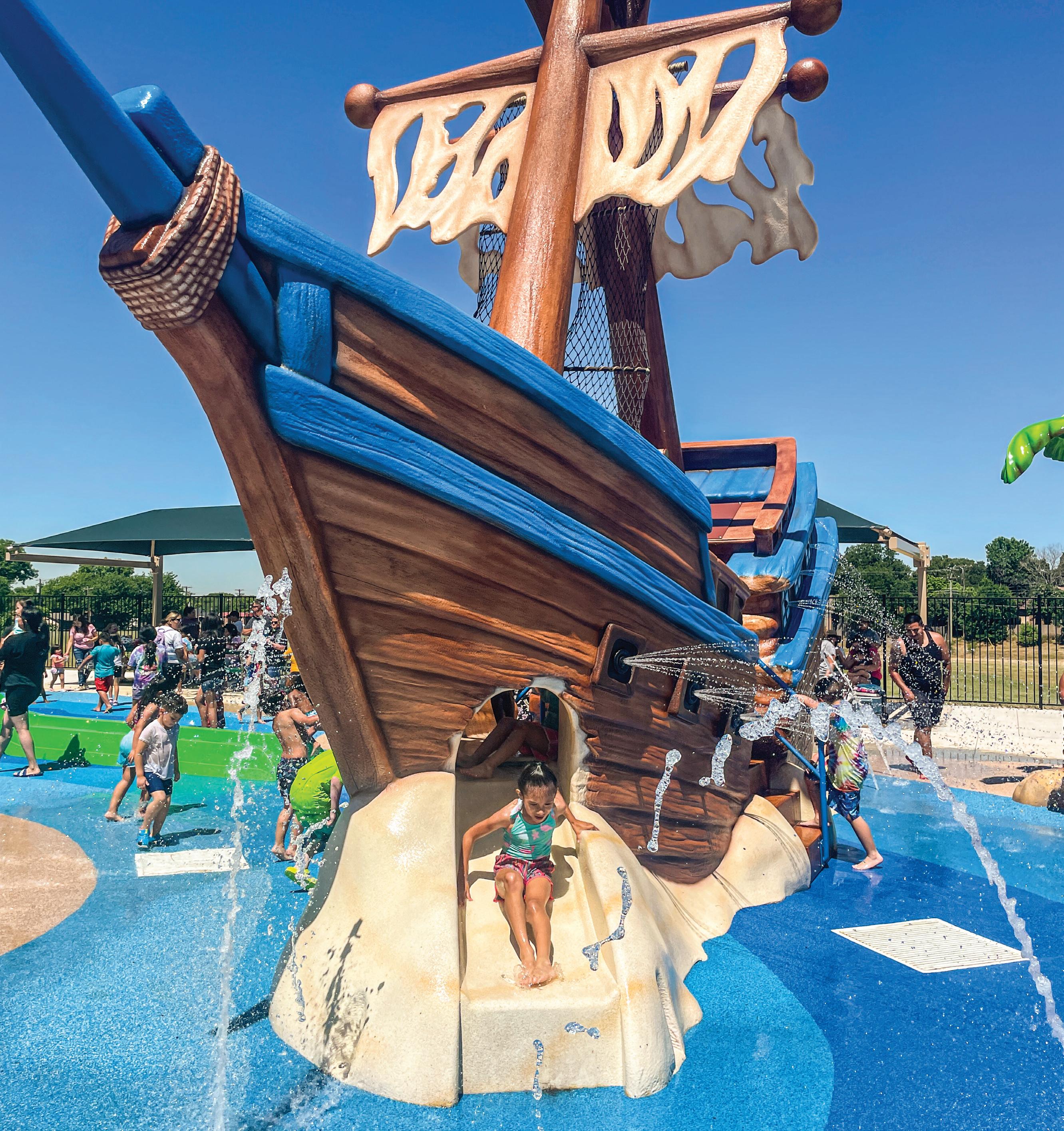


with Jenna Brinkman, Community & Public Relations Manager, Cosumnes Community Services District
Q: What is the official name of the facility—CORE or CORE Recreation Center?
A: The official name is CORE. That’s how we refer to it in most marketing and internal communications because it’s short, simple, and memorable. However, since this is a brand-new facility, we also use CORE Recreation Center in community-facing materials to make it clear that this is their newest recreation space. It helps bridge the gap between introducing something new and reinforcing CORE’s identity as a park and recreation hub.
Q: Is this a brand-new facility, or was there a previous recreation center? If it’s a rebrand, what was the previous name and what prompted the change?
A: This is a completely new facility and the first of its kind for our agency.
It was originally envisioned back in 2003 but was delayed for years due to economic setbacks. It’s exciting to finally bring this long-awaited project to life.
Q: Who came up with the name “CORE,” and what was the naming and branding process like?
A: We turned to our community and asked for help. We invited the public to submit name ideas through a social media campaign and received over 100 entries. A lot of them were fun and full of personality. CORE rose to the top because of its versatility and multiple meanings. First, it ties back to our parent brand by using the first two letters of each word in “Cosumnes Recreation.” But it also speaks to strength, fitness, and being the center of something meaningful. It wasn’t hard to sell since it’s a familiar naming trend in other cities, like SOHO (South
of Houston Street) in New York or DOCO (Downtown Commons) in Sacramento. We love how it gives the facility a distinct identity and sense of place.

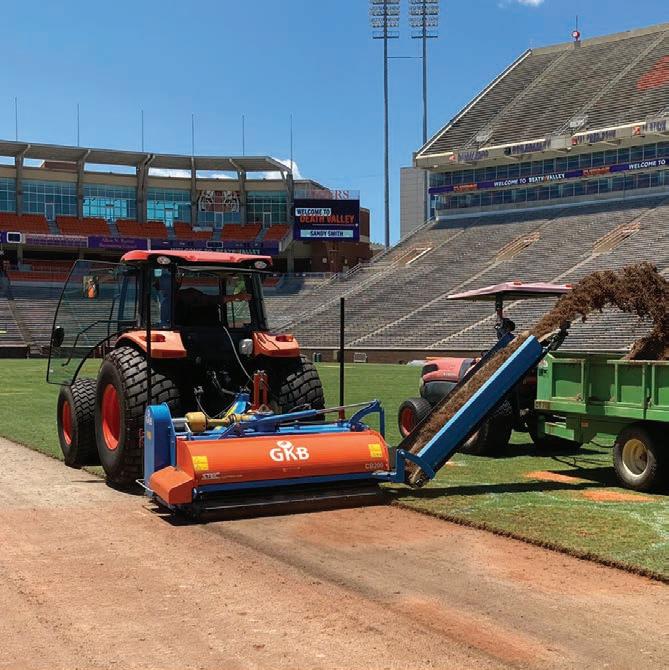



Q: How do you think a unique name like “CORE” will influence community perception and attract new users?
A: CORE hits the right notes. It feels strong, modern, and approachable, which is the kind of energy we want people to associate with this space. Whether you’re there to shoot hoops, take a yoga class, lift weights, or just connect with others, the name CORE helps set the tone and draw people in.
How does the name support your marketing and outreach efforts, compared to a more generic name like “Cosumnes Recreation Center”?
CORE gives us so much creative flexibility. It’s short, punchy, and easy to work with across digital platforms,
marketing, and merchandise. In our logo, we added the tagline “Powered by Cosumnes CSD” to maintain that important connection to our agency and its credibility while still giving the facility its own personality.
Q: In what ways has branding helped generate excitement or position CORE as a destination?
A: Branding has been the spark that lit the fire. We knew CORE needed a strong visual identity to stand out in a crowded health and fitness landscape. The color palette drew inspiration from the architect’s interior design selections, and we selected branding elements that were energetic and modern. The alignment between the

brand and the building makes the whole experience feel intentional and cohesive.
We’ve used everything from a brand announcement video to event booths to build momentum and introduce CORE as a community destination. And it worked! People bought into the vision before the doors ever opened. The branding and marketing created anticipation and made CORE feel real, exciting, and worth being part of. That early belief helped us gain hundreds of members during pre-sales and build a strong foundation of community support from day one.
Q: Have you seen a sense of community pride emerge around

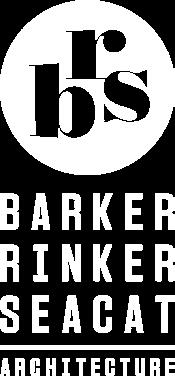

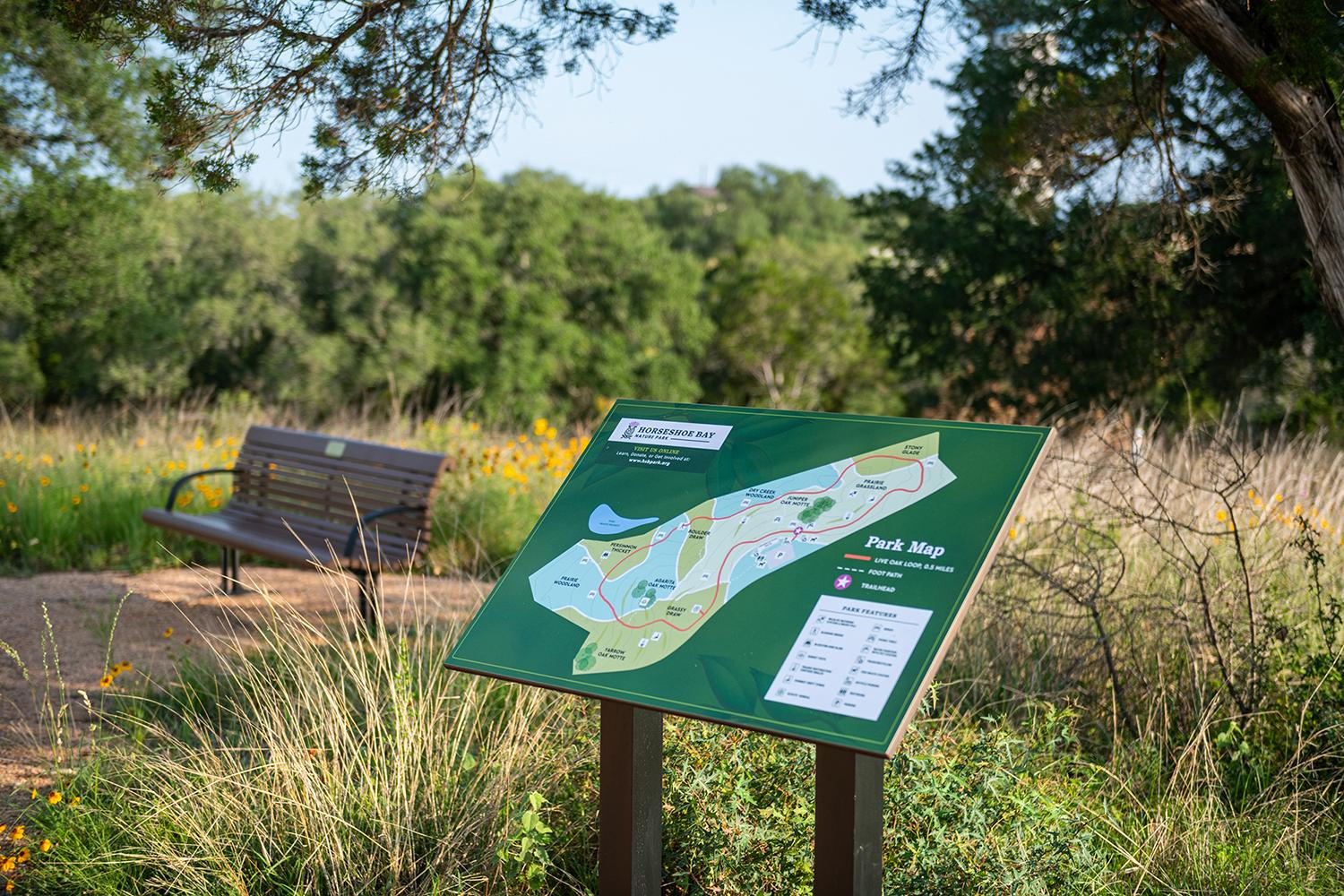

the facility’s identity? What kind of buzz has there been from residents or media?
A: The buzz online and in person has been overwhelmingly positive. We hit 500 memberships in the first 28 days of pre-sales, which we thought might take up to four months. Now, with just a few weeks before the grand opening, we’re passing 800 members.

On Instagram, our following has grown to 1,284 and keeps climbing. Residents are starting to see CORE as their space, and they’re excited to be part of it.
Q: Do you expect the branding to help attract visitors from outside the area? Will you market it to tourists or regional audiences?
A: We designed CORE to serve residents within a 15-minute drive or a three-mile radius, and that remains our primary focus. But, with two full gymnasiums for basketball, volleyball, and pickleball, we do plan to host tournaments and events that could draw regional visitors. In those cases, the branding helps us present CORE as a polished, welcoming facility that can compete with any in the region.
Q: How is the brand integrated into the facility—through signage, merchandise, programming, etc.? Do you offer CORE-branded merchandise?
A: The CORE brand is fully woven into the facility experience. Our signage, staff apparel, printed materials, and digital presence all reflect a consistent identity. Even the color palette, pulled from CORE’s interior design, helps create a cohesive and inviting space.
Inside the building, digital displays share class schedules, upcoming events, gym etiquette tips, and highlights of staff and members that all match the CORE look and feel. One of our studios has a custom wall decal that reinforces the brand elements, and the gym floor features a bold CORE logo right at center court.
The branding also carries into our programming. Our youth program is called COREkids, helping families instantly connect it to the space. CORE-branded merchandise is also on the way so members can show their pride and feel part of something bigger.
Every detail is designed to feel intentional, immersive, and unique.
Q: Any advice for other communities exploring naming or rebranding their recreation centers?
A: Start with research and community input to understand your users’ characteristics, values, and experiences. Then, build a brand that
reflects those insights. Make sure your internal teams and partners understand the why behind the brand. We presented our vision to the Board of Directors and Parks & Recreation Department staff to help everyone see that CORE is more than a logo. It’s an experience you create from the moment someone hears your name to the second they walk through your doors, from how the facility looks and feels to how we communicate with the public. Once they recognized the thought and meaning behind it, they became enthusiastic champions of the brand.
Q: What do you personally love about the name “CORE”? How does it reflect your community or the experience you want visitors to have?
A: What I love most about CORE is how much meaning is packed into such a simple word. It reflects strength, connection, and community – all the things we want this facility to stand for. But I’ve also learned that with any new brand or rebrand, it takes time for people to fully absorb and embrace it. At first, there may be hesitation or skepticism, and that’s totally normal.
That’s why we made it a priority to hold informational meetings and construction site tours with staff and our Board of Directors early on. We wanted them to understand the story behind the brand, not just see a new logo. We even gifted CORE T-shirts to our team to help build a sense of ownership and excitement. Over the past year, we’ve watched


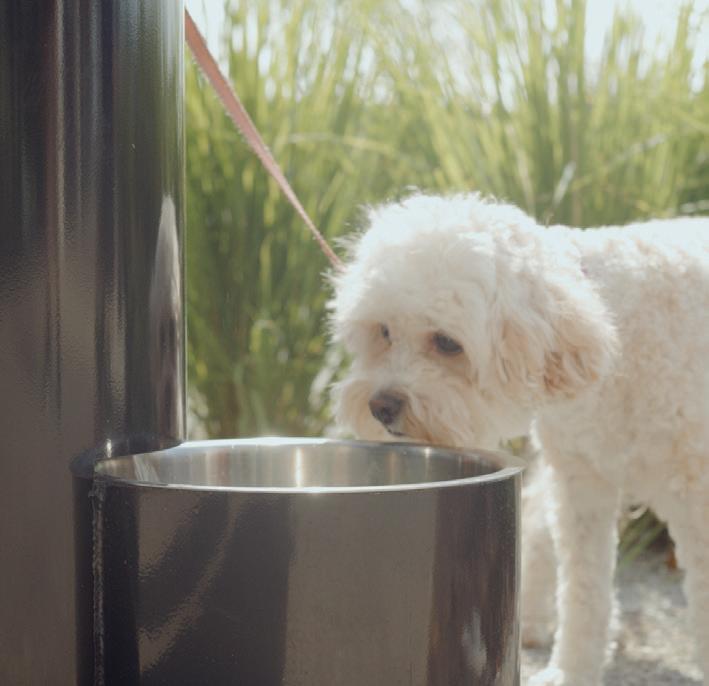
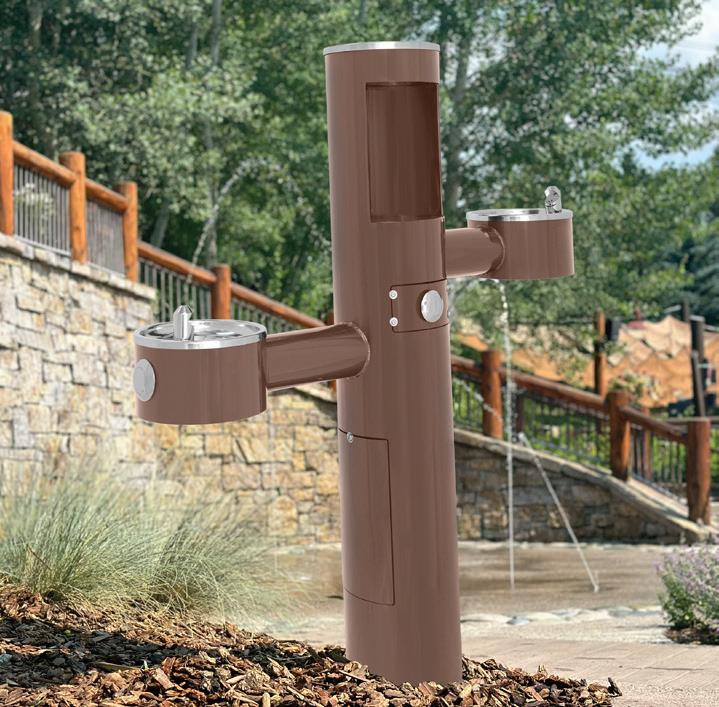

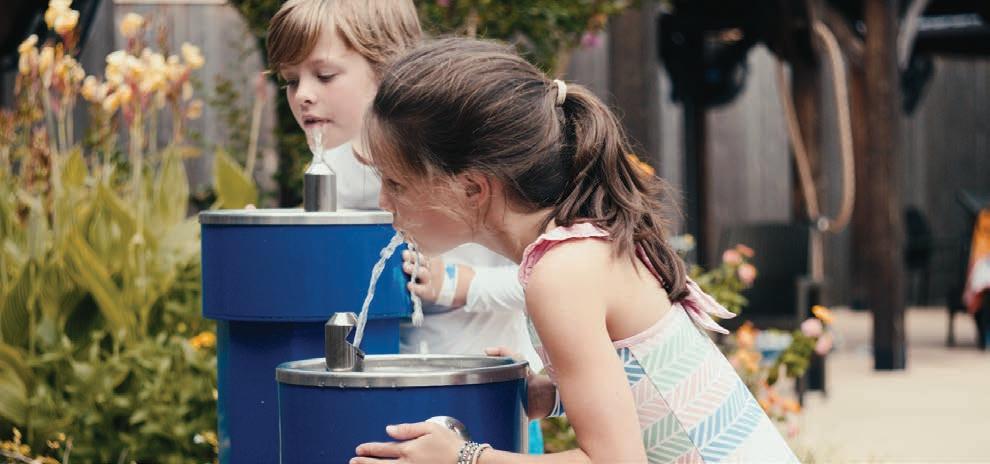
CORE become synonymous with wellness, energy, and community pride. And that has been so rewarding.
Q: Any additional thoughts on the importance of branding and identity?
A: Branding is more than a logo. It’s a promise of quality and consistency. To set a strong foundation, your brand should tell a story that resonates with your audience.
When we started developing CORE’s identity, we had just completed a full rebrand for our agency. That was a heavy lift (it took two years to complete!), but it gave us the experience and confidence to go bold with CORE. It also meant we had already earned the trust of our stakeholders. They had seen what thoughtful branding could do, which opened the door for us to take creative risks.
We didn’t approach CORE as just another community center. We treated it like a startup business. That meant we had to think differently, move quickly, and push for innovation, even when it was outside of our comfort zone.
As a Marketing & Communications Team, we also had to help others shift their perspectives. That mindset shift allowed us to build a brand that not only looks good but truly functions as the foundation for a sustainable, revenue-neutral, and community-driven facility. I may be biased, but I think branding was key to all of it.
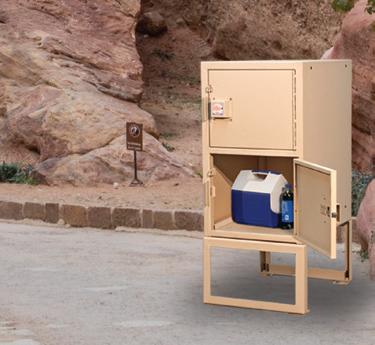
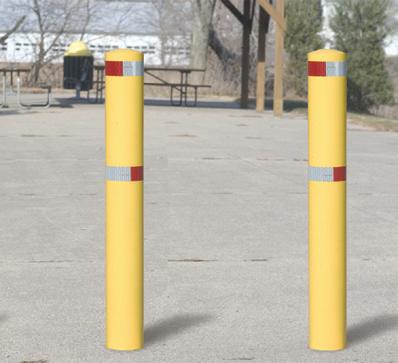
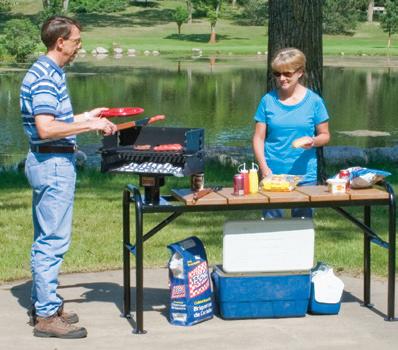

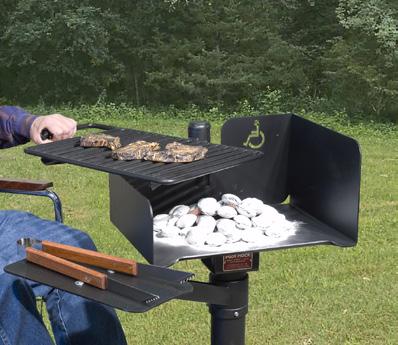
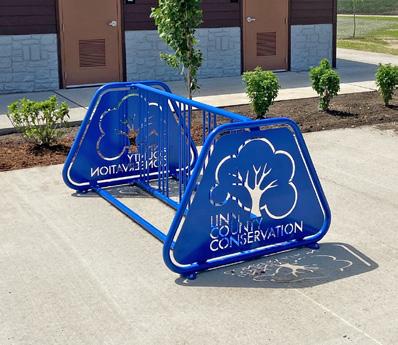
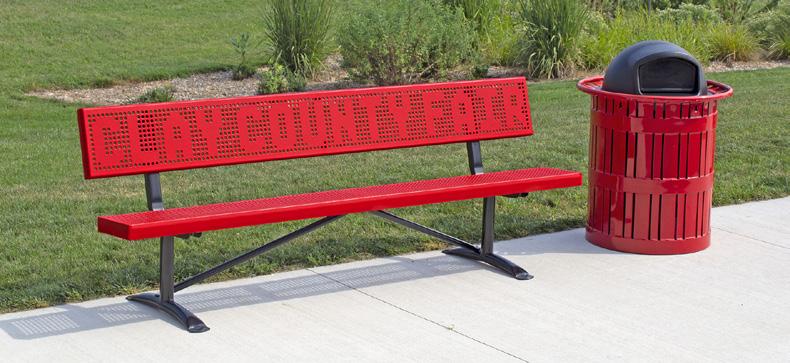
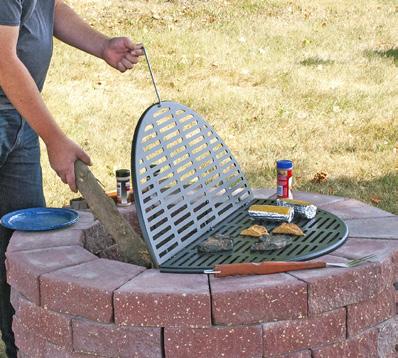
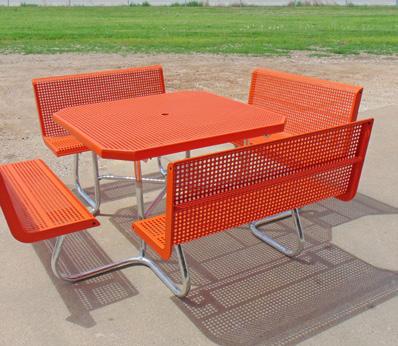

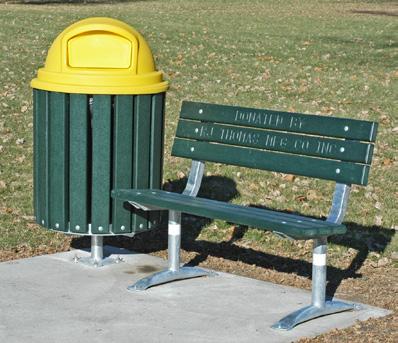
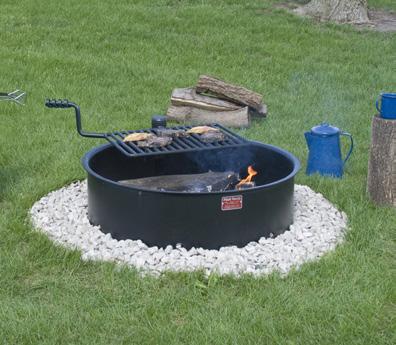
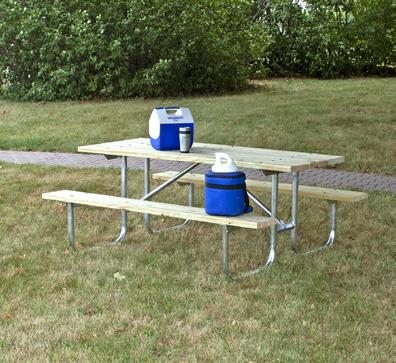
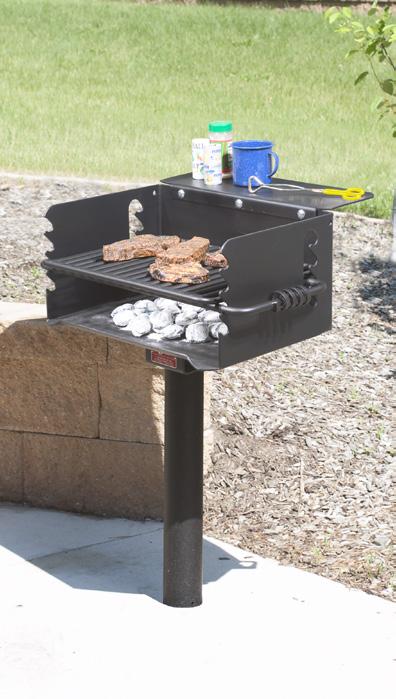

kasaconstruction.com
KASA Construction Inc. has built hundreds of parks, shaping communities across Southern California for decades. Based in Chino, we are a full-service General Engineering Firm specializing in public works and commercial construction, including parks, schools, roads, and highways. Our experienced team is known for quality, reliability, and efficiency, working with municipalities, school districts, and government agencies to deliver high-quality projects—on time and within budget.


Parjana Engineering’s IRIS™ product increases infiltration rates up to 10X, reduces material and waste, is quicker and seamless over other systems. Additionally, decreasing carbon and the ecological footprint making it a more sustainable solution to water management problems. IRIS™ uses the power of nature to connect soil layers and enhance water movement between soil particles. It’s a zero energy, zero maintenance, zero visual solution that guarantees a 10-year installation warranty and 25-year product warranty.

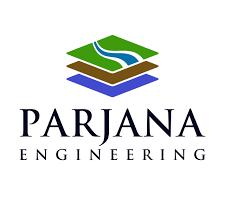
www.parjanaengineering.com

Romtec designs, manufactures, supplies, and constructs buildings and structures for all types of applications. They are architects, engineers, manufacturers, and contractors. Their process begins by designing a building that is perfect for your site, then providing the complete plan set and specifications. Each project can then be sent out to bid or purchased directly. Finally, Romtec manufactures and supplies the complete building to be constructed by the contractor or by Romtec as a “turnkey” project.

www.romtec.com
Get Your
Company Connections are a great way to get your products and services in front of CPRS members at an affordable rate, as low as $395/month. Contact Todd Pernsteiner at todd@pernsteiner.com or call (952) 841-1111 to advertise, or visit bit.ly/CPRSmagazine to view the advertising media kit.
A-G Sod Farms, Inc.
Joel Addink (951) 687-7581
jaddink@agsod.com www.agsod.com
Access Trax
Kelly Twichel (619) 292-8766
kelly@accesstraxsd.com www.accesstraxsd.com
Agents of Discovery
Joel Krupa (855) 564-7328
jkrupa@agentsofdiscovery.com www.agentsofdiscovery.com
Albert A. Webb Associates
Jeffrey Hutchins (951) 248-4281
Jeff.Hutchins@webbassociates.com www.webbassociates.com
All About Play/Little Tikes
Commercial Nor Cal
Glen Wurster (916) 923-2180
glen@playgroundpros.com www.littletikescommercial.com
American Ramp Company
Josh Willis (417) 206-6816 x 107 joshw@americanrampcompany.com www.americanrampcompany.com
American Solutions for Business
Glenn Leonard (877) 808-8523 x5 gleonard@americanbus.com www.pmlbstore.com
Amilia
Anne-Sophie Leclerc (877) 343-0004
anne-sophie.leclerc@amilia.com www.smartrec.amilia.com
Ankored
Seth Lieberman (778) 878-3970
slieberman@ankored.com www.ankored.com
Aqua Source
Ron Ybarra (209) 745-6401 ron@aquasource.com www.aquasource.com
Aquatic Design Group
Justin Caron (760) 438-8400
jcaron@aquaticdesigngroup.com www.aquaticdesigngroup.com
Aquatic Service, Inc. www.aquaticserviceinc.com
Architectural Nexus
Peter McBride (916) 443-5911 x3028
pmcbride@archnexus.com www.archnexus.com
Architerra Design Group, Inc.
Richard Krumwiede (909) 484-2800
rkrumwiede@architerradesigngroup.com www.architerradesigngroup.com
Athletify, Inc.
James Moore (801) 210-0599
james@athletify.com www.athletic-inc.com
B SAFE Playground Inspection Services, Inc.
Christopher Tait (916) 850-5071
admin@bsafeinspection.com www.bsafeinspection.com
Bay Area Redwood
BCI Burke Co, LLC
Sarah Lisiecki (920) 838-2546
slisiecki@bciburke.com www.bciburke.com
Beginners Edge Sports Training, LLC
Mitchell Goldberg (714) 874-4737
mitch@best-sports-usa.com www.bestsportsca.com
Bennett Engineering Servces (BEN-EN)
Karman Cates (916) 783-4100
kcates@ben-en.com www.ben-en.com
BFS Landscape Architects
Michelle Parravano (831) 646-1383
michelle@bfsla.com www.bfsla.com
Bigbelly Solar Inc.
Michelle Firmbach (888) 820-0300 x385 mfirmbach@bigbelly.com www.bigbelly.com
Bliss Power Lawn Equipment Co
Casey Bliss (916) 893-8799
casey@blisspowerlawn.com www.blisspowerlawn.com
BMLA Landscape Architecture
Baxter Miller (951) 737-1124 x111 baxter@bmla.net www.bmla.net
Brock USA
David Brown (877) 276-2587
dbrown@brockusa.com www.brockusa.com
California Landscape Supply
Ryan Thornberry (209) 538-8493
ryan@californialandscapesupply.com www.californialandscapesupply.com
California State University, East Bay
Alexandra Sandoval (510) 885-3043 alexandra.sandoval@csueastbay.edu http://edschool.csueastbay.edu/ departments/rec/index.html
California State University, Fresno
Sam Lankford (559) 278-2624
slankford@csufresno.edu http://www.csufresno.edu/recadmin
California State University, Long Beach
Terry Robertson (562) 485-4071
terry.robertson@csulb.edu http://www.csulb.edu/rls/
California Waters www.californiawaters.com
Callander Associates Landscape Architecture, Inc.
Benjamin Woodside (916) 985-4366
bwoodside@cavalleyoffice.com www.callanderassociates.com
Campspot
Brad Squire (616) 226-5500
brad.squire@campspot.com www.campspot.com
Capital Program Management, Inc.
Carly Reich (916) 553-4400
carlyr@capitalpm.com www.capitalpm.com
Carducci Associates
Karly Behncke (415) 447-5234
karly@carducciassociates.com www.carducciassociates.com
Casey Printing
Richard Casey (831) 385-3222
caseyr@caseyprinting.com www.caseyprinting.com
CivicPlus
Scott Garrie (888) 228-2233
garrie@civicplus.com www.civicplus.com
CLIPA - Christmas Light Installation
Pros Association LLC DBA Celebration
Holida
Chelsea Phernetton (888) 231-4623
chelsea@clipainc.com www.celebrationholidaystudio.com
Coast Recreation Inc. www.coastrecreation.com
Collins Company
Veronia Munoz (909) 548-6708 veronica@collinscompany.com www.thecollinscompany.com
Columbia Cascade Company
Steve Kirn (503) 223-1157
hq@timberform.com www.timberform.com
Community Works Design Group
Scott Rice (951) 369-0700 scott@cwdg.fun www.comworksdg.com
Counsilman-Hunsaker
Linda Duerst (310) 734-2282
LindaDuerst@chh2o.com www.chh2o.com
Crane Architectural Group
Rick Crane (714) 525-0363 x104 rcrane@cranearchitecturalgrp.com www.cranearchitecturalgrp.com
Custom Canopies Intl, Inc.
Steve Graaff (562) 464-4766
steve@ccishade.com www.customshadecanopies.com
Dahlin Group Architecture | Planning | Interiors
Colette Aviles (925) 251-7200 marketing@dahlingroup.com www.dahlingroup.com
Dave Bang Associates, Inc.
John Wormell (800) 669-2585 john@davebang.com www.davebang.com
David Evans and Assoc. Inc.
Kim Rhodes (909) 481-5750 ksr@deainc.com www.deainc.com
David Volz Design Landscape
Architects, Inc.
David Volz (714) 641-1300 dvolz@dvolzdesign.com www.dvolzdesign.com
Dekra-Lite
LeeRoy Chaffin (714) 436-0705
leeroyc@dekra-lite.com www.dekra-lite.com
DoubleSpot Inc.
Sean Chang (626) 877-6650 sean@doublespot.com www.doublespot.ai
DuMor, Inc.
Bryan Marousek (800) 598-4018 bmarousek@dumor.com www.dumor.com
ELS Architecture and Urban Design
Clarence Mamuyac (510) 549-2929 cmamuyac@elsarch.com www.elsarch.com
FirstService Residential
Ashley Blair (949) 388-1908
ashley.blair@fsresidential.com www.LaderaLife.com
Gold Bug Park and Mine
Monique Plubell (530) 642-5207 mplubell@cityofplacerville.org www.goldbugpark.org
Grand Slam Safety, LLC
Dean Lehman (315) 301-4039
deanl@grandslamsafety.com www.Grandslamsafety.com
Great Western Recreation
Tyler Kyriopoulos (435) 245-5055
tyler@gwpark.com www.gwpark.com
Greenfields Outdoor Fitness
Sam Mendelsohn (888) 315-9037
sam@greenfieldsfitness.com www.greenfieldsfitness.com
Grizzly Entertainment | Drone Light Shows
Theofanis Chatzidimitriou (929) 428-0773 fanos@grizzlyglobal.net www.grizzlyglobal.net
Group 4 Architecture Research + Planning, Inc.
Dawn Merkes (650) 871-0709 dmerkes@g4arch.com www.g4arch.com
GSM Landscape Architects, Inc.
Gretchen McCann (707) 255-4630 gretchen@gsmlainc.com www.gsmlainc.com
HAI, Hirsch & Associates, Inc.
Charles Foley (714) 776-4340 x107 chuck@hailandarch.com www.hailandarch.com
Helix Environmental Planning
Scott Redding (916) 447-7400 www.helixepi.com
Hermann Design Group, Inc.
Chris Hermann (760) 777-9131
chris@hdg-inc.com www.hermanndesigngroup.com
Hunter Industries
Mike Madewell (760) 583-4479
michael.madewell@hunterindustries.com www.hunterindustries.com/contact-us
Imagen
Paul Bower (626) 593-9618
paul@imagenagency.com www.imagenagency.com
Innovative Playgrounds Company
Alvino Larios (877) 732-5200
alvino@innovplay.com www.innovplay.com
Insane Impact
Derek Steffen (515) 297-6964
dsteffen@insaneimpact.com https://insaneimpact.com
Inspector Playground
James Stein (888) 293-7889
info@inspectorplayground.com www.inspectorplayground.com
Integra Planning & Landscape
Architecture
Ric Hendricks (707) 852-0500 ric@integrapla.com www.integrapla.com
JetMulch
Mario Gamboa (866) 306-8524
mariogamboa@jetmulch.com www.jetmulchinc.com
Jones & Madhavan
Nachi Madhavan (805)777-8449
nachi@jmae.com www.jmae.com
Jump Start Sports Sacramento
Derek Catalano (415) 336-9821
dcatalano@jumpstartsports.com www.jumpstartsports.com
Kaizen Labs
John Puma 617-599-4326
john@kaizenlabs.co www.kaizenlabs.co
KASA Construction, Inc.
Sam Kasbar (909) 457-8260
samk@kasaconstruction.com www.kasaconstruction.com
Kimley Horn
Randall Kopff (619) 234-9411
randall.kopff@kimley-horn.com www.kimley-horn.com/markets/ parks-recreation/
Knorr Systems, Inc.
Phyllis Brown (714) 754-4044
phyllisb@knorrsystems.com www.knorrsystems.com
KOMPAN Playgrounds
Jon Teberg (800) 426-9788
jonteb@kompan.com www.kompan.com
KTU + A Planning & Landscape Architecture
Christopher Langdon (619) 294-4477
chris@ktua.com www.ktua.com
Landscape Structures, Inc.
Megan Andrada (763) 972-5200 meganandrada@playlsi.com www.playlsi.com
Little Big Leagues LLC (DBA
Skyhawks Youth Sports Academy
Johannes Pouw (805) 895-8687 mpouw@skyhawks.com www.skyhawks.com
LPA, Inc.
John Courtney (916) 287-2341
johncourtney@me.com www.lpainc.com
Mack5
Eve Nelson (510) 595-3020
enelson@mack5.com www.mack5.com
Magic Jump Rentals Inc.
Aurthur Bagumyan (818) 724-8192
arthur@magicjumprentals.com www.magicjumprentals.com
Martin Brothers Consulting Services, Inc.
Kristen McLaughlin (714) 614-4463
kmclaughlin@mbcserv.com www.mbcserv.com
Melton Design Group, Inc.
Gregory Melton (530) 899-1616
Teresa@meltondg.com www.meltondg.com
MIG, Inc.
Cindy Mendoza (503) 297-1005
cindym@migcom.com www.migcom.com
Miracle Playground Sales/Miracle Recreation
Kelly Spence (800) 264-7225 x108
kelly.spence@miracleplayground.com www.miracleplayground.com
Miracle Playsystems Inc.
Kit Steven (800) 879-7730
kit@miracleplaygroup.com www.MiraclePlayGroup.com
Modular Pumptrack USA
Brian Belknap (916) 542-2274
brian@modularpumptrackusa.com www.modularpumptrackusa.com
Moore Recreation Therapy & Consulting, Inc.
Tamica Clement Moore (530) 848-0227
tamica@moorertconsulting.com www.moorertconsulting.com
Mooton Group Inc.
Derek Zhang (626) 819-0714 derek@mootonplay.com
Most Dependable Fountains, Inc.
Vince McGrory (901) 867-0039
info@mostdependable.com www.mostdependable.com
Motz Group
Shaun Garrity (513) 533-6452
sgarrity@usgreentech.com www.themotzgroup.com
MRC
Brian Gates (800) 922-0070
bgates@mrcrec.com www.mrcrec.com
Murdock MFG
Bob Murdock (626) 937-4291 bmurdock@murdockmfg.com www.murdockmfg.com
Musco Sports Lighting
Michael Marchetti (949) 754-0503 x6111 mike.marchetti@musco.com www.musco.com
My Bark Co., Inc.
Mary Yelton (209) 786-4042 mybarkco@icloud.com www.mybark.net
MyRec.com-Recreation Software
Tracey Rivera Cooper (802) 465-9732 marketing@MyRec.com www.myrec.com
National Academy of Athletics
Aaron Locks (707) 791-7593
aaron@naofa.us www.NationalAcademyofAthletics.com
NGI Sports a Division of River City
Athletics
Cory Brisbin (775) 544-6306
cbrisbin@ngisports.com www.ngisports.com
Noll & Tam Architects
Trina Goodwin (510) 649-8295
trina.goodwin@nollandtam.com www.nollandtam.com
NorCal Playgrounds
Christopher Loucks (530) 727-5065
Norcalplaygrounds@gmail.com www.norcalplaygrounds.com
NUVIS
Robert Stone (714) 754-7311
rstone@nuvis.net www.nuvis.net
O’Dell Engineering
Chad Kennedy (209) 571-1765 x102 ckennedy@odellengineering.com www.odellengineering.com
Oriental Trading
Jerry Venner (800) 228-2003
JVenner@FunExpress.com www.orientaltrading.com
Outdoorlink Inc.
David Ramirez (813) 758-7762
dave@outdoorlinkinc.com www.outdoorlinkinc.com/parksrecreation3/
Pacific Park and Play/Little Tikes
Commercial
Guy Donahoe (714) 846-4885
guytikes@gmail.com www.PacParkPlay.com
Pape Machinery
Anthony Bertoldi (916) 891-8293
abertoldi@papemachinery.com www.construction.papemachinery. com/locations/california/sacramento
Parjana Engineering & Associates
Gary Luiz (707) 799-3777
gary@parjanaeng.com www.parjanaengineering.com/
PDPlay
John Ogden (760) 597-5990
john@pdplay.com www.PDPLAY.com
PLAYCE Studio, Ltd
Cheryl Salazar (909) 714-0284
cheryl@playcestudio.com www.playcestudio.com
PlayCore
Anne-Marie Spencer (256) 630-2231
aspencer@playcore.com www.playcore.com
Playcraft Systems LLC
Summer Everist (541) 955-9199 x 127
marketing@playcraftsystems.com www.playcraftsystems.com
Playgrounds Unlimited
Michael Altieri (408) 244-9848
mike@playgroundsunlimited.com www.playgroundsunlimited.net
Precision Concrete Cutting
Ernesto Martinez (866) 792-8006
emartinez@pccnorcal.com www.safesidewalks.com
Pro Services General Contractors
Christian Rodriguez (619) 884-3559
info@proservicegc.com www.proservicesgeneralcontractors.com
Productive Parks, LLC
Stephen Dittemore (630) 765-4252
steve@productiveparks.com www.productiveparks.com
Public Restroom Company
Chad Kaufman (888) 888-2060 x109
chad@publicrestroomcompany.com www.publicrestroomcompany.com
Pure Design Werx, LLC
Voltaire Gomez (619) 313-3858
voltaire@puredesignwrx.com www.puredesignwerx.com
R. E. Schultz Construction, Inc.
Richard Schultz (714) 649-2627
rick@reschultzconstruction.com www.reschultzconstruction.com
R.J. Thomas Mfg. Co./Pilot Rock
Justin Jorgensen (800) 762-5002 jjorgensen@rjthomas.com www.pilotrock.com
Rec Technologies
Courtney Sung (415) 910-9224
Courtney@rec.us www.rec.us
Recreation Reimagined
Jennifer Cano (415) 261-8202
jennifer@recreationreimagined.com www.recreationreimagined.com
RecWest Outdoor Products, Inc.
Scott Anderson (818) 309-5596
scott@recwest.com www.recwest.com
RHA Landscape ArchitectsPlanners, Inc.
Doug Grove (951) 781-1930 x121 dougg@rhala.com www.rhala.com
RJM Design Group, Inc.
Larry Ryan (949) 493-2600
larryr@rjmdesigngroup.com www.rjmdesigngroup.com
ROMTEC, Inc.
Travis Olson (541) 496-3541 travis.olson@romtec.com www.romtec.com
Ross Recreation Equipment Company, Inc.
Nick Philbin (707) 538-3800 nickp@rossrec.com www.rossrec.com
Royston, Hanamoto, Alley & Abey Jules Schaafsma (415) 360-2876 studio@rhaa.com www.rhaa.com
RRM Design Group
Jeff Ferber (805) 543-1794 jcferber@rrmdesign.com www.rrmdesign.com
RRM-CLM Services, LLC
Wareen Meyer (602) 569-2333 warren@camprrm.com www.clm-services.com
RVI Planning + Landscape Architecture
Tim Bargainer (949) 258-2138 tbargainer@rviplanning.com www.rviplanning.com
S. Whiteford Enterprises
Scott Whiteford (408) 656-0512
Whitefordscott@yahoo.com
San Diego State University
Candy Flynn (619) 594-5110
cflynn@sdsu.edu www.arweb.sdsu.edu/es/admissions/ ab/recreationadmin.htm
San Francisco State University Recreation, Parks, Tourism & Holistic Health
Erik Rosegard (415) 338-7529 rosegard@sfsu.edu www.sfsu.edu/~recdept/
Schmidt Design Group, Inc.
JT Barr (619) 236-1462 jtbarr@schmidtdesign.com www.schmidtdesign.com
Shade ‘N Net
Rudy Martinez (602) 484-7911
rudy@shade-n-net.com www.shade-n-net.com
Shah Kawasaki Architects Youngchae Lee (510) 663-6090 ylee@skarc.com
Sky Elements Drone Shows
Katherine Claeys (847) 494-0856
Katherine@skyelementsdrones.com www.skyelementsdrones.com
Southern California Municipal Athletic Federation
Tim Ittner (626) 448-0853 x16 TimIttner@scmaf.org www.scmaf.org
SpectraTurf
Elizabeth Anderson (714) 853-3206
landerson@spectraturf.com www.spectraturf.com
Spohn Ranch, Inc. Custom Skate
Parks
Aaron Spohn (626) 330-5803 aaron@spohnranch.com www.spohnranch.com
SSA Landscape Architects, Inc.
Steven Sutherland (831) 459-0455 steve@ssala.com www.ssala.com
Stover Seed Co.
Stephen Knutson (213) 626-9668
Stephen_K@stoverseed.com www.stoverseed.com
StructureCast
Anna Dezember (661) 833-4490
anna@structurecast.com www.structurecast.com
Sunnycal Solar Inc.
Steve Dollens (209) 464-6100 steve@sunnycal.com www.ShadeCharger.com
Superior Recreational Products
Dan Link (770) 832-6660 dlink@xccent.biz www.superiorrecreationalproducts.com
SVA Architects, Inc.
Robert Simons (949) 809-3380
bsimons@sva-architects.com www.sva-architects.com
SyberTech Waste Reduction Ltd.
Robert Mitchell (604) 536-0624
rmitchell@swrl.com www.swrl.com
TMT Enterprises, Inc.
Matt Moore (408) 432-9040 matt@tmtenterprises.net www.tmtenterprises.net
Trueline
Ed Kruse (951) 817-0777 x103 trueline40@gmail.com www.gotrueline.com
Turf Star, Inc.
Erin Novotny (760) 685-7559 Erin.novotny@turfstar.com www.turfstar.com
Verde Design, Inc.
Derek McKee (408) 985-7200
derek@verdedesigninc.com www.verdedesigninc.com
Via Promotionals, Inc.
Marlene Via (661) 254-4910
viapromos@yahoo.com www.viapromos.com
Vortex Aquatic Structures Intl.
Barb Lapierre (877) 586-7839
blapierre@vortex-intl.com www.vortex-intl.com
Water Odyssey By Fountain People, Inc.
Christopher Thomas (512) 392-1155 x263
cthomas@fountainpeople.com www.waterodyssey.com
Waterline Technologies
Thomas Berrey (714) 564-9100
tberrey@waterlinetech.com www.waterlinetechnologies.com
WDSLA
Jessica McWilliams (916) 956-5622
Jessica@wdsla.com www.wdsla.com
West Coast Arborists, Inc.
Amelia Menzel (714) 991-1900
amenzel@wcainc.com www.wcainc.com
West Coast Turf
Danielle Scardino (760) 340-7300
danielle@westcoastturf.com www.westcoastturf.com
Western State Builders
Julian Moen (760) 270-8639
julian@westernstatebuilder.com www.westernstatebuilder.com
Who Built Creative Builders Inc.
Jana Gebhardt-Fenk (707) 763-6210
Jana@whobuilt.biz www.whobuilt.biz
Willoughby Stainless Fountains - WSF
Joe Wede (317) 875-0830
JWede@willoughby-ind.com www.wsf-usa.com
WOOD RODGERS, INC.
Kathryn Kim (916) 341-7760
kkim@woodrodgers.com www.woodrodgers.com
Wyatt W. Underwood & Associates
Wyatt Underwood (213) 279-2455
wyatt@wwuteam.com www.wyattunderwood.org
Zasueta Contracting, Inc.
Andrew Zasueta (619) 589-0609 azplaygrounds@cox.net www.zasuetacontracting.com
ZGolf Food & Beverage Services, LLC
dba Wedgewood Weddings
Kevin Lyons (951) 491-8110, Ex. 326
kevinl@wedgewoodweddings.com www.wedgewoodweddings.com

A-G Sod Farms 800-233-5254 agsod.com Page 51

Columbia Cascade Company (503) 223-1157 timberform.com Page 35, Back Cover

David Volz Design Landscape Architects, Inc. (714) 641-1300 dvolzdesign.com Page 3

iZone ImagingSign Solutions (254) 778-0722 izoneimaging.com Page 53

Public Restroom Company (888) 888-2060 publicrestroomcompany.com Page 38

ROMTEC, Inc. (541) 496-3541 www.romtec.com Page 27

VandalStop (530) 894-7867 vandalstop.com Page 26

Amilia 877-343-0004 www.amilia.com Page 14

Crane Architectural Group (714) 525-0363 cranearchitecturalgrp.com Page 67

Greenfields Outdoor Fitness (888) 315-9037 greenfieldsfitness.com Pages 9, 20-21, 31

Aqua Source (209) 745-6401 aquasource.com Inside Front Cover

Dave Bang Associates, Inc. (800) 669-2585 davebang.com Inside Back Cover

Gyms for Dogs (800) 932-1562 GymsForDogs.com Pages 64-65

Architerra Design Group, Inc. (909) 484-2800 architerradesigngroup.com Page 70

The Davey Tree Expert Company (916) 214-5908 davey.com Page 17

Hirsch and Associates (714) 776-4340 hailandarch.com Page 43

Most Dependable Fountains, Inc. (901) 867-0039 mostdependable.com Page 55
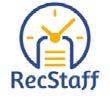
RecStaff (250) 884-2126 www.recstaff.com Page 19




Schmidt Design Group, Inc. (619) 236-1462 schmidtdesign.com Page 30

Verde Design (408) 985-7200 verdedesigninc.com Page 42
My Bark Co., Inc. (209) 786-4042 mybark.net Page 43

RHA Landscape Architects - Planners, Inc. (951) 781-1930 rhala.com Page 5

Shade ‘N Net (800) 290-3387 www.shade-n-net.com Page 7
NUVIS (714) 754-7311 nuvis.net Page 35

Barker Rinker Seacat Architecture (303) 455-1366 brsarch.com Page 53

David Evans and Associates Inc. (909) 481-5750 deainc.com Page 33
Integra Planning & Landscape Architecture (707) 852-0500 integrapla.com Page 8

Parjana Engineering & Associates (707) 799-3777 parjanaengineering.com Page 36-37
Water Odyssey By Fountain People (512) 392-1155 waterodyssey.com Page 49
California Parks & Recreation magazine mails to more than 4,800 CPRS members and allies; it is also available online. The Fall issue is the popular “CPRS Heroes” edition and includes the pull-out Buyer’s Guide! Advertising deadline is September 2, 2025.
Pilot Rock / R.J. Thomas (800) 762-5002 pilotrock.com Page 56

StructureCast (661) 833-4490 www.structurecast.com Page 41
RJM Design Group, Inc. (949) 493-2600 rjmdesigngroup.com Page 17

Turf Star Western (800) 585-8001 turfstar.com Page 13
Need more information?
Email Todd Pernsteiner at todd@pernsteiner.com or call (952) 841-1111, or view the advertising media kit at bit.ly/CPRSmagazine

The City of San Ramon is pleased to announce Henry Perezalonso as San Ramon’s next Director of Parks and Community Services, effective July 14, 2025. A Certified Park and Recreation Executive (CPRE), Perezalonso brings more than 30 years of experience in park and recreation service, most recently as Recreation, Arts and Community Services Director for the Town of Danville.
“We are thrilled to welcome Henry as our new Parks and Community Services Director,” said City Manager Steven Spedowfski. “His leadership and vision will be invaluable in enhancing our parks, programs, and services for the San Ramon community.”
Perezalonso, who holds a Master of Science in Hospitality, Recreation, and Tourism from California State University, East Bay, joins the
City after serving with the Town of Danville for the past 13 years. There, he provided leadership and management of department operations, including personnel, marketing, and community relations in the areas of cultural arts, youth and teen services, sports and fitness, adult and senior services, and facility management. He played an instrumental role in developing and implementing the Town of Danville’s Parks, Recreation, and Arts Strategic Plan, as well as its Age-Friendly Roadmap, and creating the Arts District.
Before joining the Town of Danville, Perezalonso spent over 12 years at the City of Mountain View, first as Recreation Coordinator, then as Senior Recreation Coordinator, and later as Recreation Supervisor. There, he supervised youth and adult sports and aquatics programs, senior programs, community gardens, and an after-school program for middle school students. He also assisted in the development and implementation of the City’s Cost Recovery Policy and Recreation Plan.
Perezalonso, a United States Marine Corps Veteran, is dedicated to the training and supervision of hardworking professionals across all walks of life. He has an enthusiasm for learning and teaching the importance of personal growth, and continues to support the development of park and recreation professionals through direct teaching and mentorship.
He currently holds positions on the Leadership San Ramon Valley Board, the City of San Ramon’s Open Space Committee, the San Ramon Futbol Club Board, is a Trustee for the California Foundation for Parks & Recreation, is a Regent for the California Park and Recreation Society (CPRS) Maintenance Management School and served on the CPRS State Board as its President in 2018–19.
“I’m excited to have this opportunity to serve the community I live in and to be joining such a great team, especially those in the Parks and Community Services Department,” said Perezalonso. “Let the adventure begin!” n

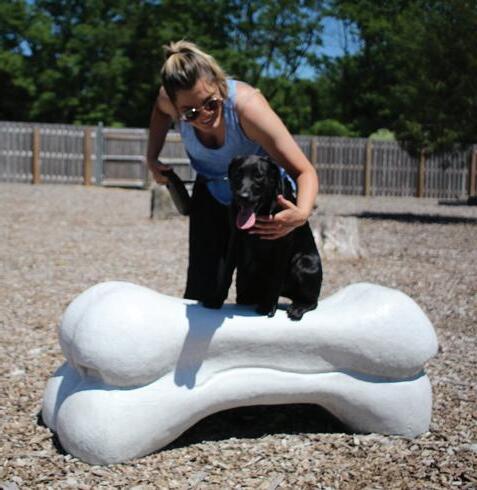


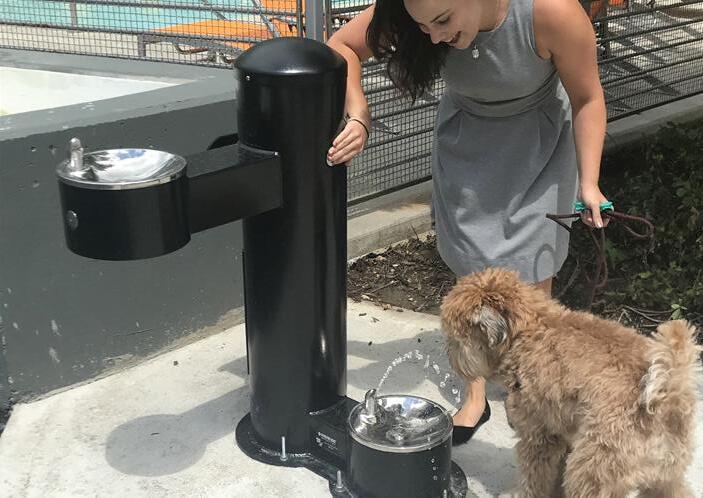

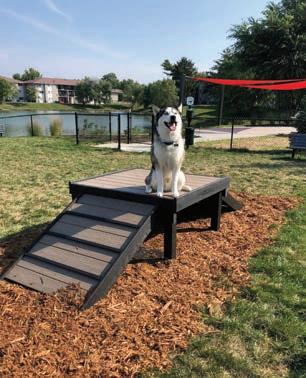
Cordova Recreation & Park District (CRPD) has been honored with the Government Finance Officers Association (GFOA) Distinguished Budget Presentation Award for the most recent qualifying year. This prestigious recognition highlights CRPD’s commitment to excellence in governmental budgeting and transparency. The award is a testament to the District’s success in producing budget documents that meet the highest standards of quality that reflect both the guidelines

established by the National Advisory Council on State and Local Budgeting and the GFOA’s best practices on budgeting. To earn recognition, budget documents must meet program criteria and excel as a policy document, financial plan, operations guide and communication tool.
Matt Goodell, Chief Financial Officer at CRPD, presented the award at the June Board Meeting and said, “I want to proudly announce and present the Government Finance Officers Association Distinguished
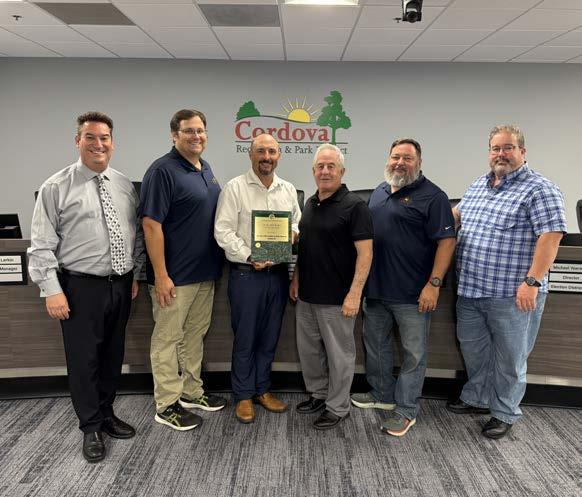
Budget Presentation Award for this past qualifying year. Approximately 1,800 governments, including states, cities, counties, special districts, school districts and more have been recognized for transparency in budgeting. CRPD is one of three park special districts in California to receive this award!”
This remarkable achievement reflects the hard work and dedication of the CRPD team, and they are proud to be recognized for their commitment to excellence in public service.






The Government Finance Officers Association (GFOA), founded in 1906, represents public finance officials throughout the United States and Canada. The association’s more than 20,000 members are federal, state/ provincial and local finance officials deeply involved in planning, financing and implementing thousands of governmental operations in each of their jurisdictions. GFOA’s mission is to advance excellence in public finance.
Learn more about the award and association at www.gfoa.org/ budget-award. n





The California Park & Recreation Society (CPRS) proudly announces the induction of James “Jim” Wheeler, General Manager of the Hayward Area Recreation and Park District (H.A.R.D.), into the prestigious CPRS Hall of Fame. This honor recognizes a remarkable 50-year career dedicated to advancing public recreation, water safety, and community leadership across California and beyond.
Jim Wheeler’s journey in the recreation and park industry began in 1974 as a river lifeguard at a scout camp. From those early days, his passion and commitment have only grown. Over the decades, he has served in cities both small and large — from operating a pool and recreation center in Nevada City (population 2,700), to overseeing a massive portfolio of 28 parks, 9 pools, 7 recreation centers, a resident mountain camp, and five city-wide program divisions as a key leader in the City and County of San Francisco Recreation and Park Department.
Today, Wheeler serves as the General Manager for Hayward Area Recreation and Park District (H.A.R.D.), California’s largest recreation and park district, providing services to over 309,000 community members across 104 square miles and maintaining more than 125 parks and facilities. His strategic leadership has elevated the district’s reputation as a regional and statewide leader in innovative parks and recreation delivery.
Wheeler has been a driving force in the profession not only through administration but through education. He has presented at more than 275 conferences, workshops, and trainings across the U.S. and Canada. Through his pioneering TOTAL Guard advanced lifeguard training program, he has personally swum alongside more than 20,000 lifeguards, championing safety and excellence in aquatics.
A longtime advocate for professional service, Wheeler has held numerous leadership positions within NRPA, including Regent of the Risk Management School, President of the Aquatic Branch, and Faculty of the National Aquatic Management School. He also served as Program Chair for the 1991 NRPA Aquatic Conference in San Diego. His dedication to CPRS is equally profound, serving as the founding President of the Aquatic Section, President of the Administrators Section, and ultimately as President of the State Board of Directors.
Wheeler’s career exemplifies everything the CPRS Hall of Fame represents:
• A lifetime of outstanding professional service and commitment to the delivery of parks and recreation programs;
• A legacy of community engagement and impact, with creative solutions to complex challenges;
• Visionary leadership, capacity building, and a forward-thinking approach to organizational success;
• Deep investment in partnerships and collaborations that maximize long-term community benefits;
• Dedication to mentoring and developing the next generation of professionals.
Beyond parks and recreation, Wheeler has volunteered extensively with the American Red Cross for over four decades, as well as the United States Masters Swimming, where he contributed to committees on governance, safety, and diversity. He currently chairs the Board of Trustees for the California Foundation for Parks and Recreation and continues to support aquatic safety through his consulting firm, Total Aquatic Management.
A former high school and college All-American swimmer, Wheeler is a World Body Surfing Championships finalist, a U.S. Lifesaving Association regional finalist, and an avid sailor who recently completed his second 2,100-mile San Francisco to Hawaii ocean race. In his spare time, he coaches youth sailing, leads the St. Joseph Notre Dame High School swim team, and works on vintage cars and boats.
His many honors include two CPRS Presidential Awards, the NRPA Distinguished Aquatic Service Award, the first-ever CPRS Aquatic Service Award, the International Swimming Hall of Fame Paragon Safety Award, and numerous regional and national recognitions for his dedication, innovation, and leadership.
James Wheeler’s induction into the CPRS Hall of Fame celebrates not only a career of extraordinary accomplishments, but also a legacy of leadership, mentorship, and lasting impact on generations of professionals and the communities they serve. n
By Alisha Herriott, Communications & Marketing Manager, California Park & Recreation Society
On June 25, 2025, California officially declared July 2025 as Parks Make Life Better!® Month with the passage of ACR 68.
The resolution, led by Assemblymember Anamarie Avila Farias, was chaptered by the Secretary of State as Resolution Chapter 97, Statutes of 2025, and passed with bipartisan support with 35 yes votes. This is a significant step forward in reinforcing what you, as parks and recreation professionals, champion and see in your communities every day, that parks truly make life better.
The Parks Make Life Better!® campaign was developed by the California Park & Recreation Society to unify our message and elevate the value of the work you do. This official statewide recognition gives even more power and visibility to that message, helping shine a light on the essential services parks and recreation provide to every community across California.
The CPRS HQ team, including Executive Director Stephanie Stephens, Professional Development Director Lauren Oakley, Director of Membership Meghan Robinson, Communications and Marketing Manager Alisha Herriott, Operations and Training Manager Maryam Kakar, and Membership Services Coordinator Beatriz Godinez Muñiz were proud to represent our members on the Assembly floor as the resolution was heard.
With this milestone, the Parks Make Life Better!® message has reached a new level of statewide awareness. Thank you for the passion and commitment you bring to your communities. This recognition is a reflection of your impact. n

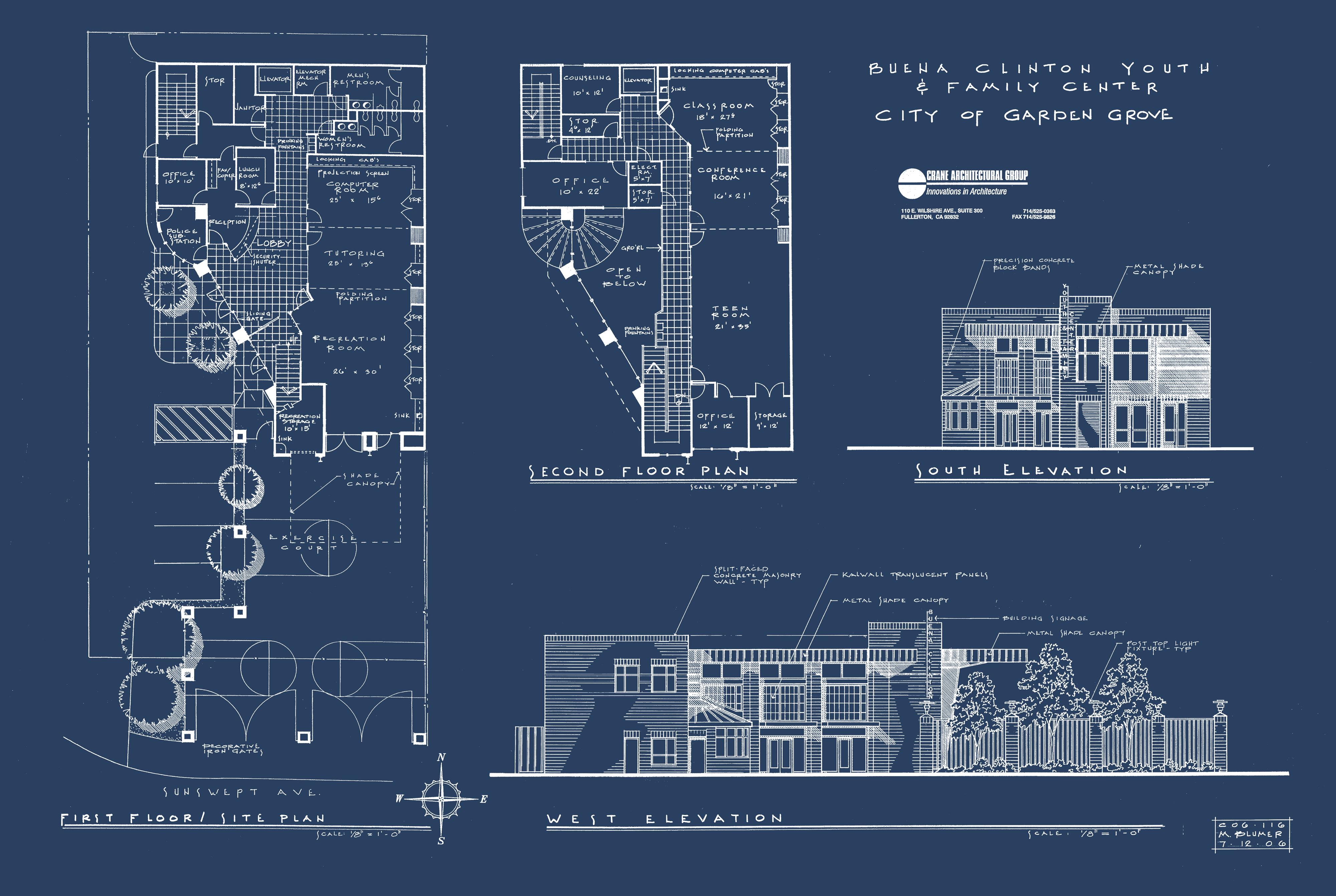


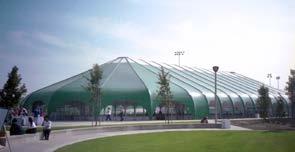
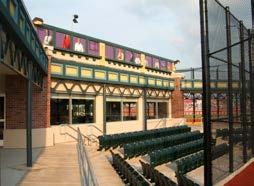
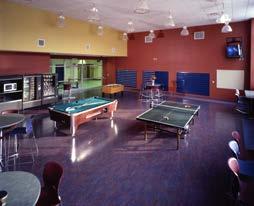
The City of Irvine has once again been recognized for its outstanding park system, ranking second in the nation and first in California in the Trust for Public Land’s annual ParkScore Index released today. This recognition marks the 10th consecutive year the City has been ranked in the top 10.
“Being ranked second in the nation and first in California is a tremendous honor that reflects Irvine’s longstanding commitment to parks and public spaces,” said Mayor Larry Agran. “This recognition is the result of intentional planning, community vision, and a deep-rooted commitment to preserving the land around us. Our parks are more than just green spaces — they’re essential to community health, connection, and quality of life.”
The ParkScore Index is recognized as the national gold standard comparison of park systems across the 100 most populated cities in the United States. The index is based on factors including park access, acreage, investment, equity, and amenities.
The index looked at park access and equity and found that 94% of Irvine residents live within a half-mile walk of a park. In addition, 94% of people of color and 91% of people from low-income households live within a 10-minute walk of a park.
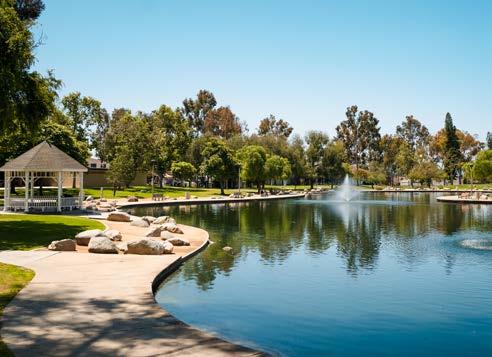
Irvine also earned a perfect score for investment. A total of $681 per capita is spent each year on publicly accessible parks and recreation, which is among the highest nationwide.
In addition, Irvine scored above average for park amenities, earning perfect scores for the following:
• Basketball Hoops: 459 available through City-owned facilities and joint-use agreements with Irvine and Tustin unified school districts for shared gymnasium spaces.
• Playgrounds: There are 220 citywide, which comes out to 28.53 per 10,000 children.
• Senior and Recreation Centers: Irvine has 25 citywide.
• Public Restrooms: There are 184 available within City parks.
The City is continuing to invest in its park system, with construction underway on the Great Park — the largest municipal park under development in the nation. In November 2024, the City’s first universal playground opened at Sweet Shade Neighborhood Park, providing an innovative and inclusive space that meets the needs of all residents regardless of ability.
Additional improvements include two bocce ball courts coming to Sweet

Shade this summer, eight pickleball courts being added at Mike Ward Community Park – Woodbridge for spring 2026, and Irvine’s first municipal fieldhouse expected to open in summer 2026.
The ParkScore ranking includes parks, facilities, and amenities accessible to the public, either through ownership or partnership agreements. The full ParkScore Index is available at tpl.org/parkscore(link is external), including score details and demographic information for each city. To learn more about Irvine parks, visit cityofirvine.org/parks. n
Below are the top 10 highestranked park systems in the 2025 National ParkScore Index. Scores listed are out of 100.
1. Washington, D.C. (85.5)
2. Irvine, Calif. (84.3)
3. Minneapolis, Minn. (83.6)
4. Cincinnati, Ohio (82)
5. St. Paul, Minn. (81.8)
6. San Francisco, Calif. (80.2)
7. Arlington, Va. (77.9)
8. Seattle, Wash. (77.4)
9. Portland, Ore. (76)
10. Denver, Colo. (75.1)

Guiding Light: Susan Andrade-Wax
“You’re never too old to set another goal or to dream a new dream” – C.S. Lewis
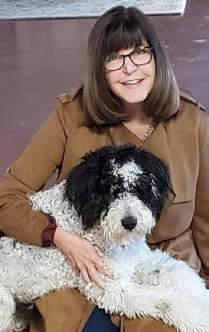
My first job in recreation was as a Resident Camp Counselor for the City of Los Angeles. I continued working as a camp counselor and lifeguard for several camps while attending college at San Diego State University and graduated in Recreation Administration with a focus in Recreation Therapy.
After college, I worked for five years as a Recreation Therapist at various hospitals in Southern California. In 1989, I made the leap to municipal recreation and served as a Recreation Coordinator for the City of Chino. From 19932005, I worked for UCLA and the cities of Chino
How did you know it was time to retire, or did it just happen to you?
I had planned to retire from the City of Pleasanton in 2018, but delayed retirement a few years to accept a job offer with the City of San Rafael. As their Community Services Director, I led the process of merging

Hills, Claremont and Santa Clarita. In 2005, we moved to northern California, and I worked as a director for the cities of Gilroy, Pleasanton and San Rafael. I have been a member of CPRS since 1984 and served on several district, section and conference boards.
I was actively involved in Women in Leisure Services, Inc. Gamma Chapter and National Board(s), as well as served on the NRPA Marketing and Revenue Sources Board of Regents. My husband (Dan Wax) and I met while working at UCLA and together we have three adult children.
and creating the new Library and Recreation Services Department. Shortly after the merger, the Pandemic hit, and our team was faced with challenges the most had never seen or experienced. Just like other agencies, we found ourselves serving the community in ways we never imagined. It’s interesting how working during the pandemic, fires, power outages, protests, etc. strengthened individuals and teams in meaningful ways.
Did you have a plan for how you’d spend your time in retirement, and how has that plan played out?
Our plan was to retire and live on the Central Coast in California. I was hoping to work at a winery part-time, and my husband was planning on working part-time at a golf course. So, my husband and I bought our dream home a mile from the coast, and we decided to rent it out during the Pandemic and wait to move until after my retirement.
Unfortunately, my mother passed after a long battle with dementia, and we decided it was best to move to Arizona to be closer to my father. So, we sold our home and moved to Arizona in November 2022. Shortly afterwards, our son moved here to pursue his Master’s in Landscape Architecture at ASU, while our eldest daughter works as an Art Manager for a video game company in LA and our youngest is pursuing their Master’s in Forensic Anthropology at SFSU.
In January 2024, I experienced a medical emergency. Luckily for me, I was transported to the Mayo Clinic in Phoenix where I received unparalleled care. After spending 10 days in ICU, I was released with a clean bill of health and a new lease on life. Since then, I prioritize my health and my time. My days are spent walking our dog, visiting with my dad and family, working out at the gym and Pilates studio, golfing with my husband and friends, traveling, and attending baseball games, comedy shows,
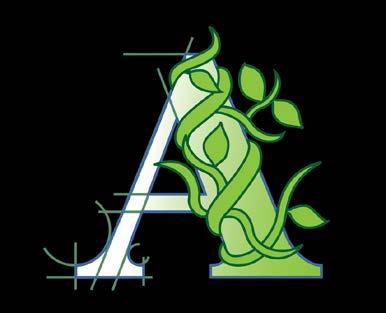



concerts and musicals. I also support the Human Rights Campaign and One-in-Ten a local LGBTQ+ youth and young adult organization and recently volunteered to assist the City of Peoria (AZ) with their Cultural Arts Grant program.
What were my biggest hopes and fears about retirement before you took the leap?
My biggest fear about retirement was being bored and missing the challenges and camaraderie of work life. At first it was hard to decompress and not respond with panic to every phone call and e-mail, but fortunately it soon subsided. I miss the “connections” and daily interactions with the staff and community members but am thankful it’s easy to keep in touch.
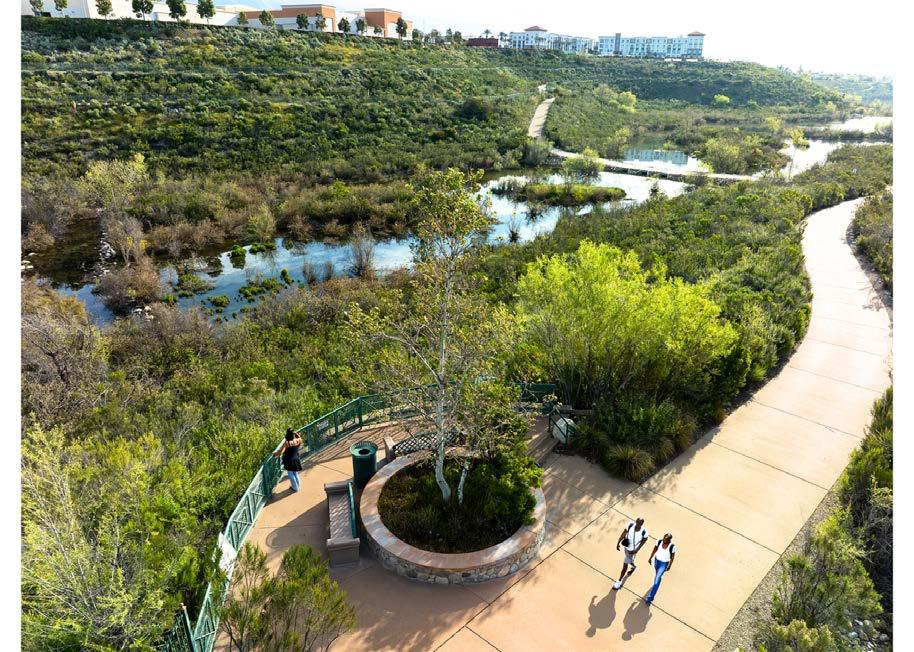
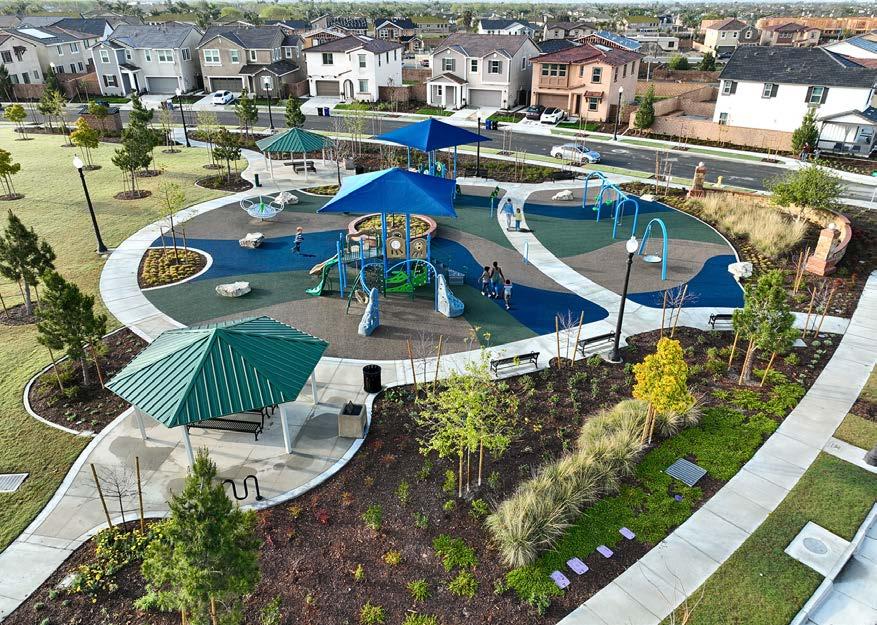

I always thought of staff as a “second family” and those relationships don’t stop when you retire, they just change.
I wouldn’t say it was a “fear”, but I was slightly concerned that our lifestyle would change significantly once our steady paychecks were replaced by pensions. Fortunately, my concerns were not realized. Being raised by a father who worked in finance and a family who discussed investing around the dinner table, I was well informed. So early on my husband and I took advantage of our agency’s 401/403/457 deferred compensation programs and deferred as much of our income as possible. It was a challenge, especially having three children who all went to college, but we made it work.
What would you advise younger professionals?
• Get involved! Enlarge your circle by actively participating in professional organizations like CPRS and serving on boards and committees. Networking is critical to your success.
• Take advantage of your agency’s continuing education and deferred compensation program(s).
• Work for agencies and supervisors that will both challenge and champion you.
• Give your staff opportunities that stretch them and acknowledge their efforts. Provide an environment where staff feel safe enough to make an occasional mistake; after all, that’s how we all learn.
• Hire staff that have the potential to be better than you. Don’t forget that your staff is your greatest resource.
• Take that vacation now, take up a new hobby now, tell people you love them now, ….
• Take great care of your health, no one else is going to do it for you.
• Not everyone has the means or desire to experience a lavish retirement. Some travel, some golf, some still work, and some simply watch their grandbabies. Define your retirement as you would your career … with purpose and passion. n

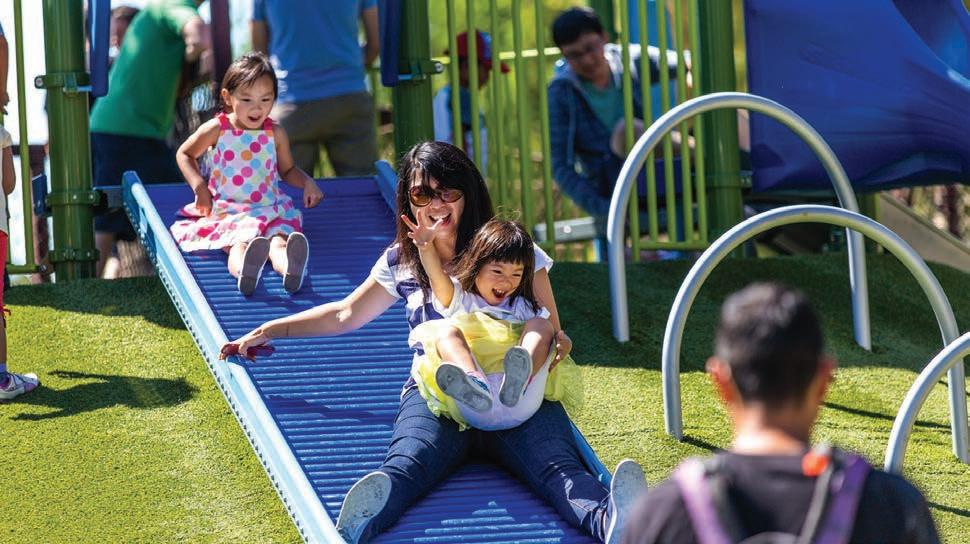
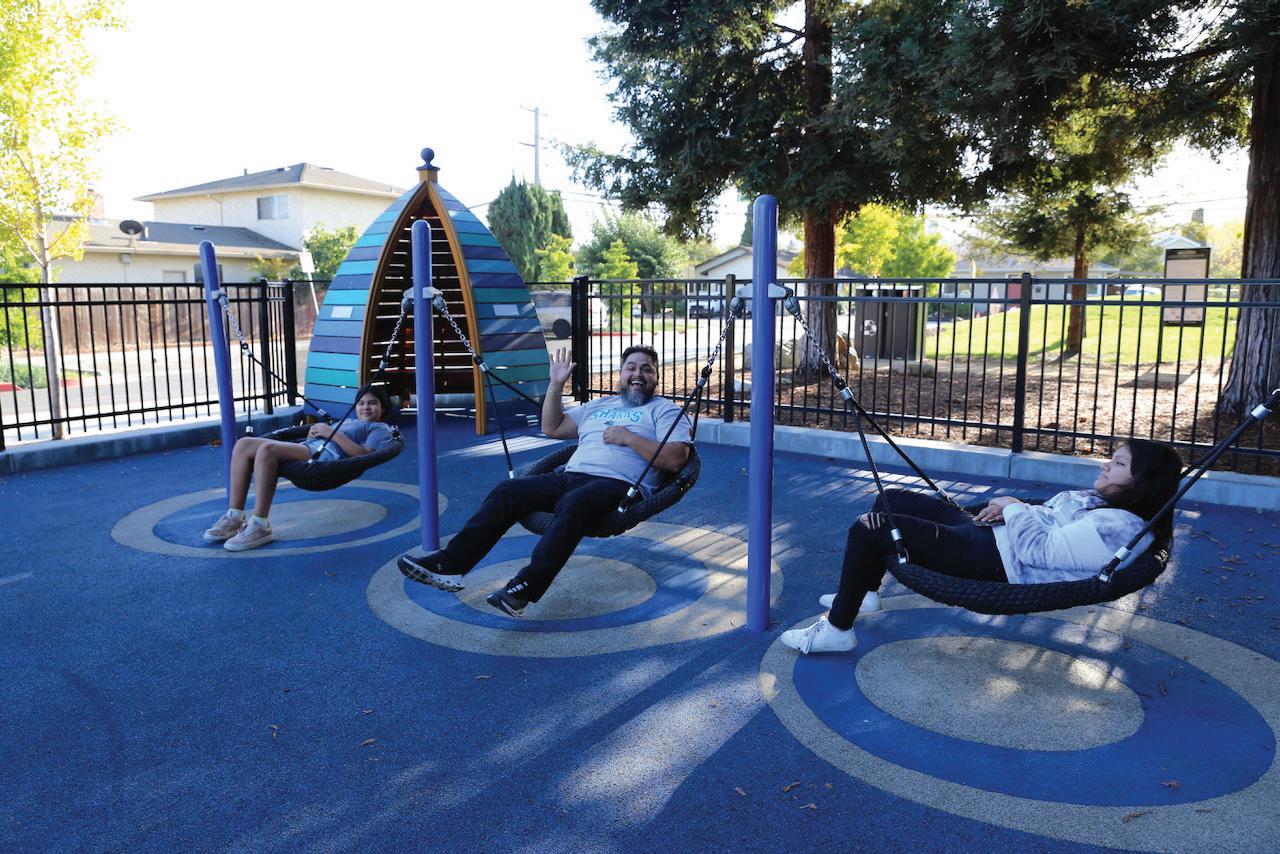
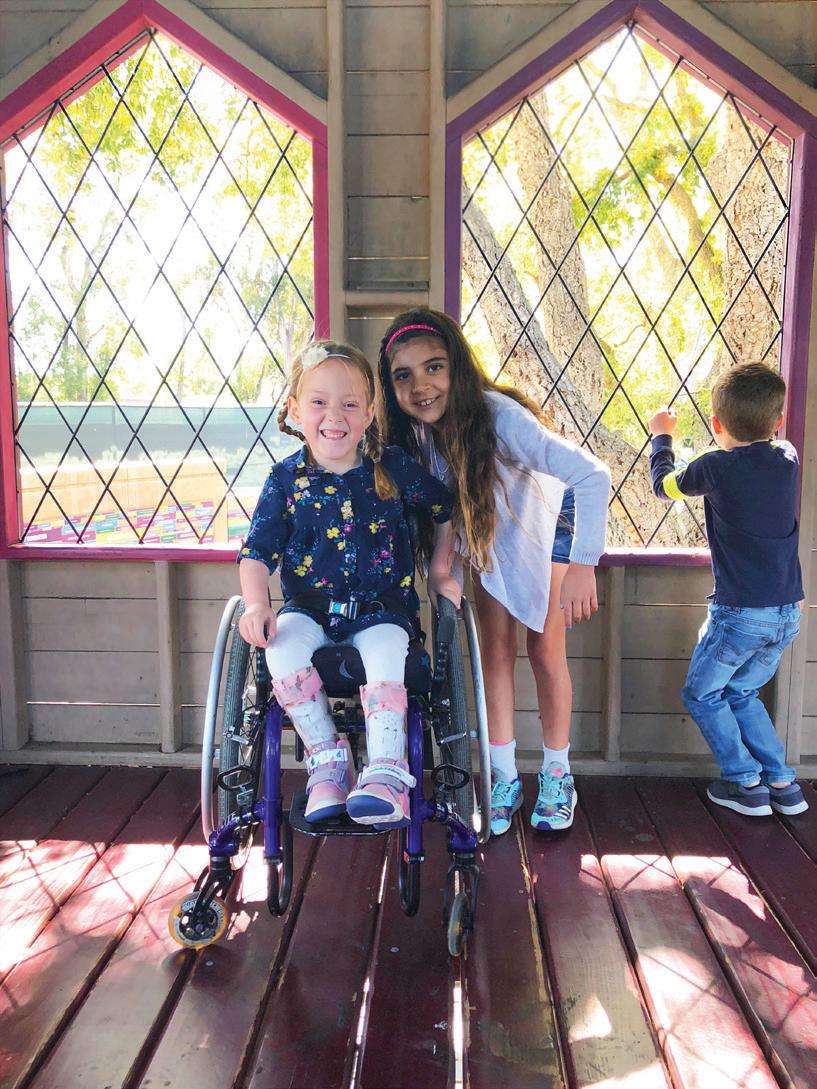
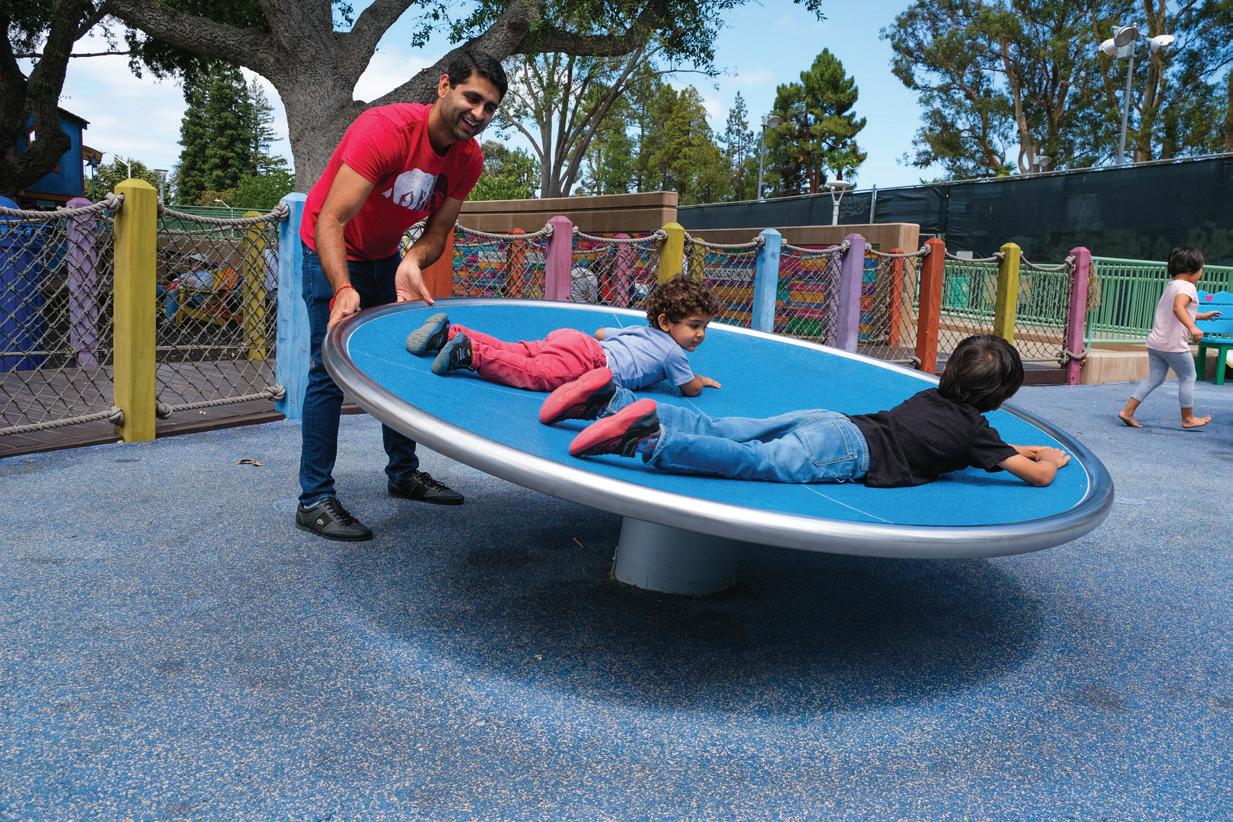
Dave Bang Associates in partnership with Magical Bridge introduce a streamlined process for incorporating truly inclusive playgrounds for schools and parks of all types.
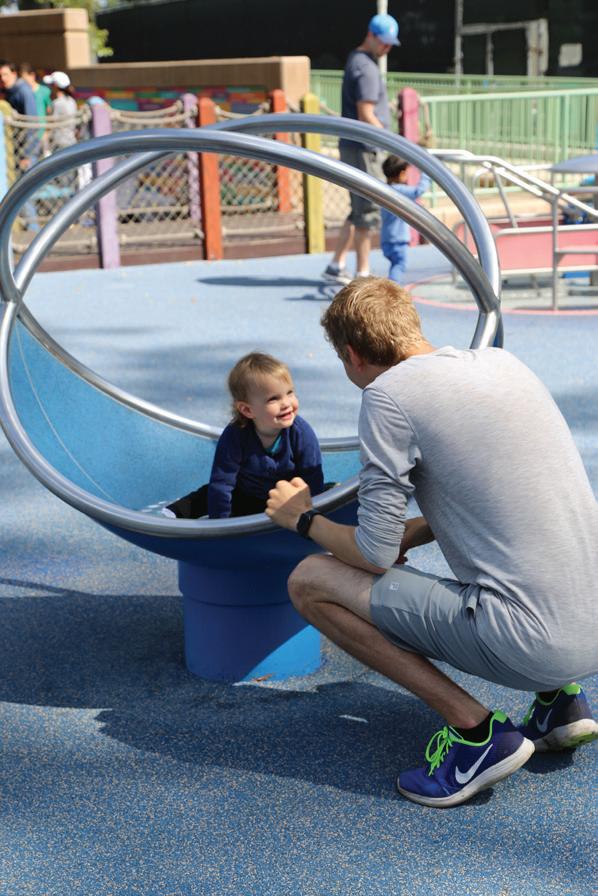

Magical Bridge custom playgrounds redefine what public spaces should be: universally designed and intentionally created for all ages and abilities. Let’s move beyond compliance to unite the community with innovative and inspiring play spaces where the whole family can play, gather, and connect.
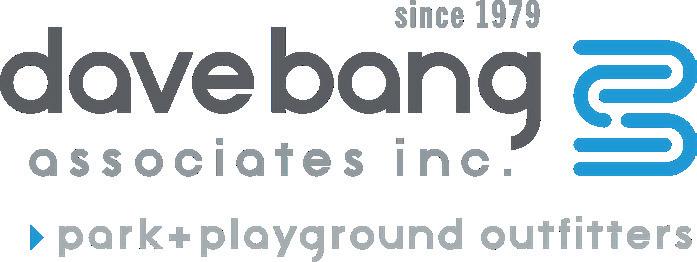
Dave Bang Associates is California’s leading park + playground outfitter — dedicated to providing Community + Connection + Adventure. With over 50 brands to choose from, we have everything you need, all in one place!
Magical Bridge designs award-winning multi-generational playgrounds for all ages and abilities. Based on decades of research, our playgrounds remove physical and social barriers to inspire happier, healthier, and more connected communities.
Visit us to learn about our inclusive playgrounds for schools and parks

